














































(541) 399-9003
(541) 399-9003
info@lifedesignbuild.us
info@lifedesignbuild.us
CCB#: 239880
CCB#: 239880


















































(541) 399-9003
(541) 399-9003
info@lifedesignbuild.us
info@lifedesignbuild.us
CCB#: 239880
CCB#: 239880


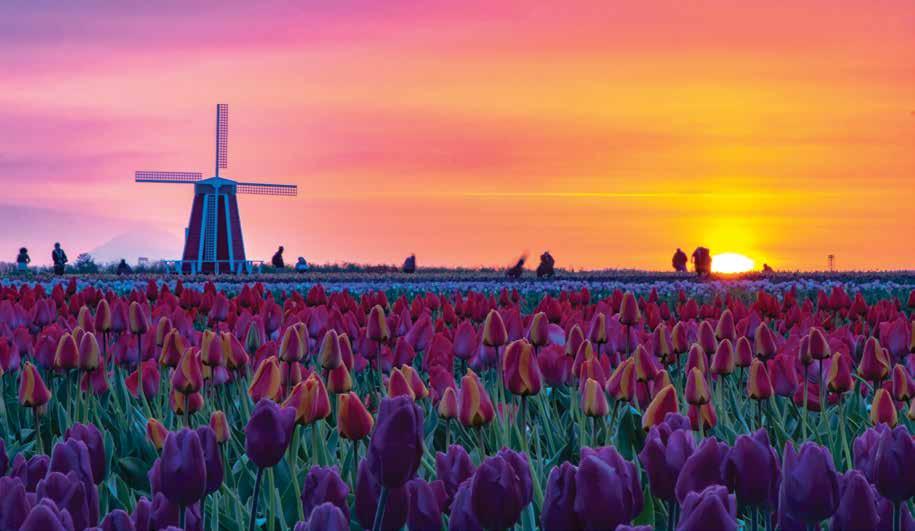
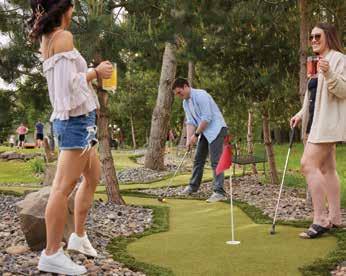
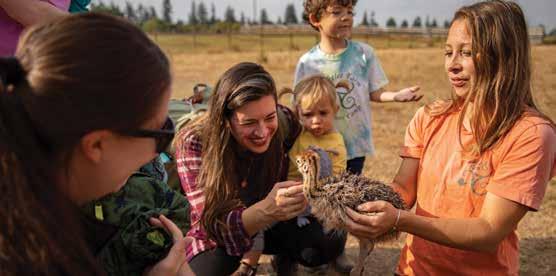
Spring has arrived, bringing with it the vibrant hues of the iconic Wooden Shoe Tulip Festival. This beloved event transforms the landscape into a breathtaking sea of color, captivating visitors with a dazzling display of blooms. But the magic doesn’t stop there — nestled in the northern Willamette Valley, this area is brimming with activities for families to explore. From scenic vineyards to charming small towns, here are some must-do experiences to make the most of your visit.

Canby is home to local celebrities, err… ”Cowlebrities” at TMK Creamery. Visitors get to meet the cows and see how the cheese is made first-hand. And if delicious cheese wasn’t enough of an incentive, they recently opened up an on-site distillery making vodka from whey leftover from the cheese-making process called Cowcohol. Hop aboard the Canby Ferry to feel like you’re riding on a time machine. In the early days, ferries were about the only reliable way to cross the Willamette River. Now only three remain operating on the river.
Calling all animal lovers!
Just outside West Linn, Triskelee Farm awaits with a menagerie of farm favorites like goats and pigs, alongside more exotic cuties like ostriches and, of course, the everso-adorable alpacas Craving homemade treats and a dose of farmyard fun? Fir Point Farms, near Canby, is your destination Indulge in their mouthwatering cinnamon rolls while witnessing the antics of their treeclimbing pygmy goats (yes, you read that right!) And if that’s not enough, prepare to be charmed by their resident bunnies.
Start your journey at Wooden Shoe Vineyards itself, where you’ll find unique varietals like albarino and marechal foch alongside Oregon’s beloved pinot noir. Next door, Hanson Vineyards boasts a vast selection of reds and whites, from pinot noir to riesling, reflecting their handson approach to grape growing. For a taste of history, journey to St. Josef’s Winery, a pioneer in Oregon’s wine scene that’s open with live music on Sundays. Just steps away is Whiskey Hill Winery, which offers an intimate tasting experience with the winemaker, featuring their pinot noirs, syrahs and other varieties.
Beyond the vibrant tapestry of tulips at the Wooden Shoe Festival, Oregon’s spring unfolds across stunning wildflower trails. Immerse yourself in fields of electric blue and purple at the Camassia Nature Preserve in West Linn, or wander through Graham Oaks Nature Park in Wilsonville to marvel at meadow checkermallow, Pacific bleeding hearts and delicate trilliums. This wetland is also filled with diverse birdlife.
Meet Monty Hood, the lovable river otter who is always eager to share what you “Otter Do” for a fun and safe adventure — find out more at omht.us/otter
Molalla might be quaint, but its appeal packs a punch! History buffs can delve into a variety of heritage sites, while farm lovers can meet adorable alpacas at Alpacas at Marquam Hill Ranch or lose themselves in the unique flora at Out In The Garden Nursery. Looking for adventure? The Molalla River Recreation Corridor offers hiking, biking and water fun. Downtown Molalla boasts charming shops, and the Molalla River Brewing Company offers craft beer, food trucks and mini-golf.
This area is filled with unique lodging options. Take the Whiskey Hill Store, for example. A beloved community hub housed in a historic 1926 Craftsman Bungalow, it offers a charming blend of history and comfort, providing a peaceful retreat for out-of-towners.

SCAN HERE to see more must-visit locations and plan your trip.


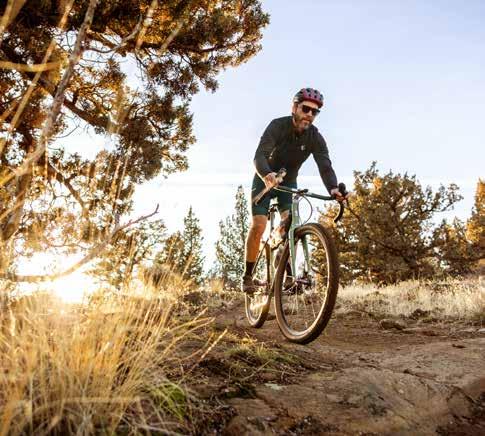
CONTRIBUTORS
EDITOR'S NOTE
HAPPENINGS
SOUL OF CENTRAL OREGON
TRAILS
Early-season cycling adventures are possible on these gravel loops.
EXPLORE
Central Oregon horse vaulters prepare for the newest Olympic sport.
OUTDOORS
Cold-immersion therapy is converting even the most timid of dippers.
Bend's first indoor skatepark to be a center of inclusivity.
HELPING HANDS
Not'cho Grandma's Bingo brings rousing fun to philanthropy.
River Sol puts a spotlight on sustainability.
VENTURES
Ecopreneurs create business plans to put nature and the planet front and center.
SAVOR
Indian flavors shine at these familyfocused eateries.


RESTAURANT
Coastal-meets-ranch cuisine dazzles at Hook & Plow.
IMBIBE
All eyes are on these smoldering and smoky cocktail creations.
AESTHETIC
David Metzger finds musical inspiration in the high desert.
ARTS & CULTURE
Paige Barnes' playful canvases bring beauty and comfort to the community.
Ready to enjoy the area's culinary best? Search our dining guide to learn more about the top spots at bendmagazine.com/dining-guide.
Find out what's happening in Central Oregon or upload your upcoming events at bendmagazine.com/calendar.
Sign up for our newsletter to receive weekly restaurant recommendations, read digital-only articles, plus stay connected at bendmagazine.com/newsletter.
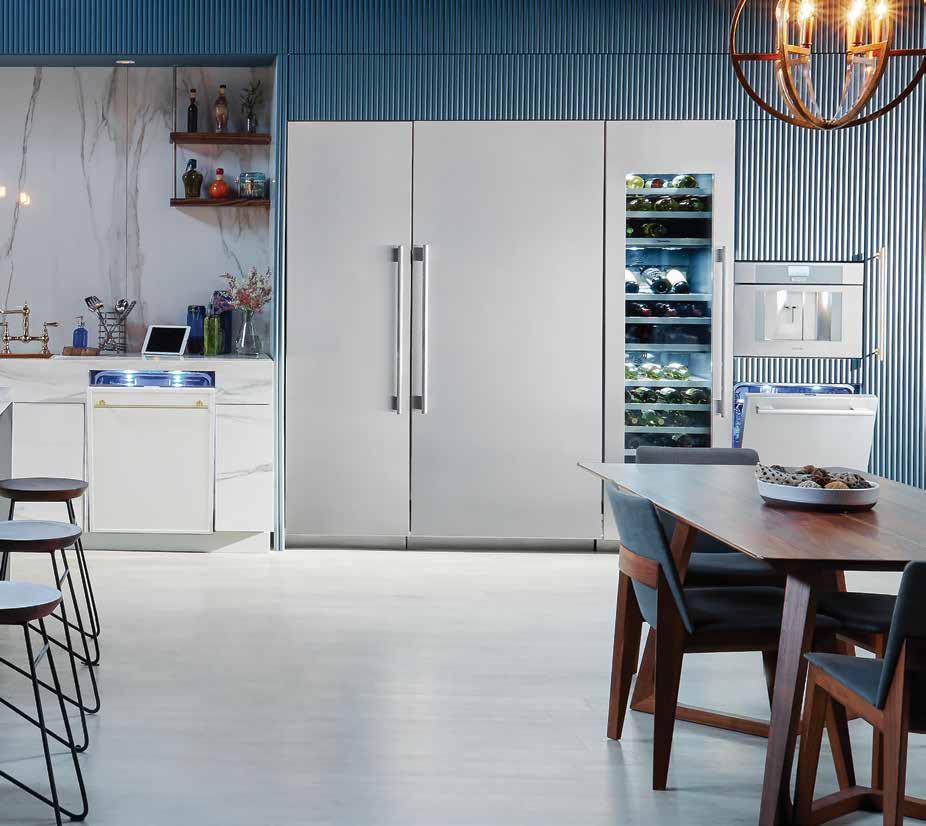

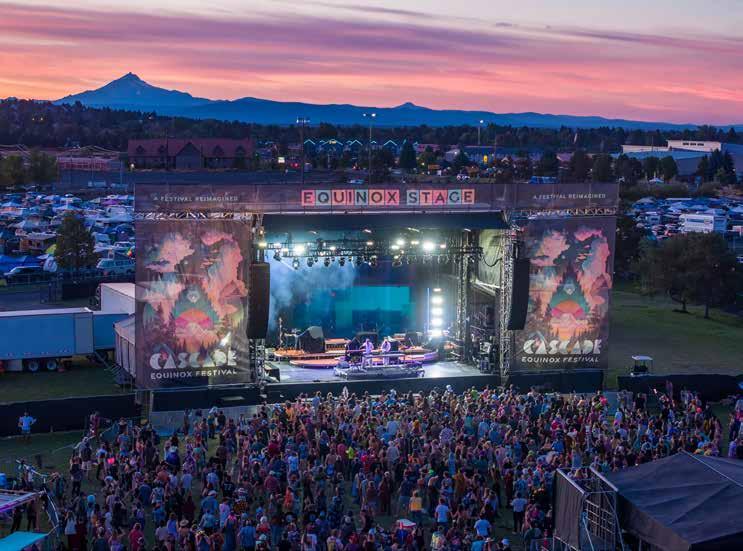
72 PAGE 72
How do we love Central Oregon? Let us count the ways. Discover our favorite spots, alternatives to well-traveled paths and tips for connecting to this place we call home. Written by Cheryl Parton.
In honor of Women's History Month, meet some of the Bend professionals who are making an impact with their careers, and in some cases flying the skies to make it happen.
Written by Suzanne Johnson
A distance of 26.2 miles stretches roughly from the southern border of Bend to Sisters. Running a marathon tests bodies and minds, and preparing for one takes discipline: step by step.
Written by Lee Lewis Husk.
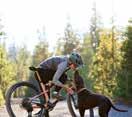
ON THE COVER Robin Vieira and Sky explore Central Oregon trails.
COVER PHOTO BY










































Open Wednesday-Saturday | 5pm-8:30pm
Discover the Lake House at Caldera Springs. Open to the public, guests are invited to dine with the whole family against the backdrop of beautiful Mt. Bachelor. Warm up by the fireplace in the bar or roast s’mores under the starlit sky — here, every meal and moment become a story.
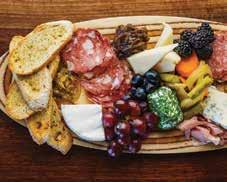
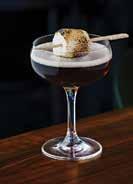
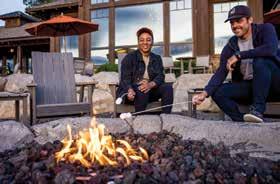

To learn more or make a dining room reservation, call 541-593-4855 or visit CalderaSprings.com/LakeHouse.
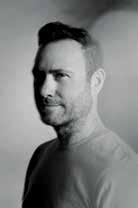
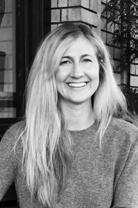
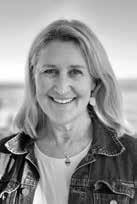
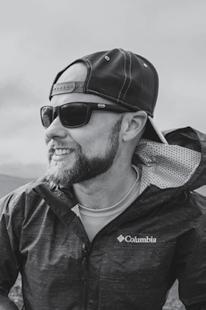
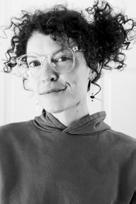
Award-winning multimedia artist Benjamin Edwards specializes in wedding, commercial and ethical storytelling. A devoted husband and father of five, Edwards was featured in Photo District News magazine as a “Photographer Making A Difference” and won a Hollywood Film Festival award for a short film he directed to raise awareness on the impact of mining in the Democratic Republic of the Congo. From nonprofits to the music world, Edwards works to tell a story through his images. This month, he celebrates the work of Central Oregon women who are making their mark. Find his portraits in the article “Women at Work” on page 78.
Find the words of Casey Hatfield-Chiotti in her travel column for Marin Living and in publications such as The New York Times, Travel + Leisure and Forbes. The daughter of an architect and designer, she loves writing about hotels, whether a century-old European property or a sleek-design stay. When Hatfield-Chiotti isn’t traveling, she lives in Bend, skiing, horseback riding and exploring with her husband and two boys. For this issue, HatfieldChiotti goes behind the scenes to explore the musical artistry of Grammy-winner Dave Metzger, page 105. She also unveils “River Sol,” a sustainable home perched above the Deschutes in the heart of Bend, page 57.
A midwestern transplant who found her home in the Cascades, writer Suzanne Johnson loves chatting with interesting people and learning what makes them tick. Her stories dive into topics of family, nature, food and adventuring across this beautiful planet. Johnson is currently working on a historical fiction project related to turn-of-the-century women adventurers inspired by the journal of a friend’s great-grandmother. In this issue, she shares the stories of seven local women who are defying stereotypes and making a difference in the Central Oregon community. Join Johnson in honoring Women’s History Month on page 78.
CODY RHEAULT PHOTOGRAPHER
A professional filmmaker, photographer and budding writer, Sisters-based Cody Rheault travels the globe telling meaningful stories of people and places with his camera. Using a candid documentary style, Rheault’s work is inspired by the outdoors. He’s spent much of his career honoring the life of military veterans through short films. When not beind the lens, Rheault enjoys time with his family, hiking local peaks, disc golfing or riding his motorcycle on backroads. For this issue, Rheault stepped into the world of ultra marathons to capture Central Oregon’s Colton Gale, winner of the Oregon Cascades 100 on page 84.
Freelance photographer and writer Katie Sox has spent much of her creative career in the bicycle industry, capturing mountain biking and bikepacking events, as well as products, architecture, real estate, commercial and lifestyle imagery. She loves storytelling and has published work for the independent biking website “The Radavist.” Sox’s balance is deeply rooted in her work as a practicing massage therapist. You can catch her riding bikes as often as possible, giggling, enjoying life’s simple details, good food and community. Explore spring gravel bike trails with Sox’s words and photos, page 31.






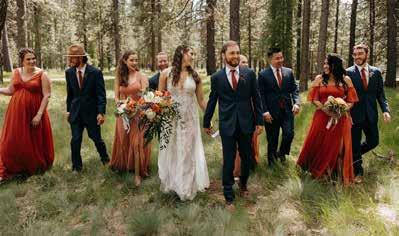



HEATHER HUSTON JOHNSON
ROSS JOHNSON
EDITORIAL
Editor in Chief CHERYL PARTON
Managing Editor KATIE HENRY
Custom Publications Editor HEIDI HAUSLER
Podcast Host ADAM SHORT
Staff Writer SIENA DORMAN
Copy Editors LEE LEWIS HUSK, STEPHANIE BOYLE MAYS
DESIGN
Creative Director KELLY ALEXANDER
Senior Graphic Designers CALI CLEMENT, JEREMIAH CRISP
Graphic Designer LIBBY MARSDEN
Print Consultant CLARKE FINE
SALES
Sales Manager RONNIE HARRELSON
Senior Account Executive SUSAN CROW
Account Executives BOOTSIE BODDINGTON, AMY LANDGRAF, KIM PAGE
Sales and Marketing Coordinator ALLIE FIELD
Client Performance Specialist GRETCHEN SORTOR
BUSINESS & MARKETING
Marketing Director CALI CLEMENT
Director of Operations HEATHER RENEE WONG
AUDIENCE DEVELOPMENT
Circulation Manager AMARA SPITTLER
Newsstand Coordinator ALAN CENTOFANTE
CONTRIBUTING WRITERS
MARGOT BIGG, CATHY CARROLL, CASEY HATFIELD-CHIOTTI, SUZANNE JOHNSON, SHEILA G. MILLER, TIM NEVILLE, MAISIE SMITH, KATIE SOX, ELLEE THALHEIMER
CONTRIBUTING PHOTOGRAPHERS
ALYSON BROWN, BENJAMIN EDWARDS, ELIF KOYUTÜRK, TAMBI LANE, KAYLA MCKENZIE, REGINA NICOLARDI, TINA PAYMASTER, CODY RHEAULT, ELY ROBERTS, KATIE SOX, MARTIN SUNDBURG, WHITENY WHITESHOUSE
FIND US ONLINE
BENDMAGAZINE.COM
INSTAGRAM + FACEBOOK: @BENDMAGAZINE
SUBSCRIPTIONS
BENDMAGAZINE.COM/SUBSCRIBE
All rights reserved. No part of this publication may be reproduced or transmitted in any form or by any means, electronically or mechanically, including photocopy, recording or any information storage and retrieval system, without the express written permission of Oregon Media. Articles and photographs appearing in Bend Magazine may not be reproduced in whole or in part without the express written consent of the publisher. Bend Magazine and Oregon Media are not responsible for the return of unsolicited materials. The views and opinions expressed in these articles are not necessarily those of Bend Magazine, Oregon Media or its employees, staff or management. Proudly printed in Oregon.











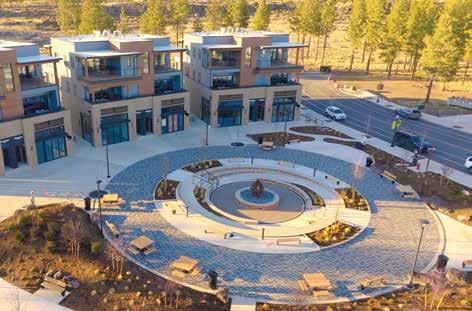





Discover yourself here.




Close to everything but away from it all, Discovery West is conveniently located on Bend’s west side, close to nature, trails, bike paths, parks, schools and shopping. The new Discovery Corner Plaza is starting to welcome small businesses and storefronts mixed with gathering spaces and a place for neighborhood events. A generous central firepit invites friends, family and neighbors to linger and enjoy special outdoor spaces that reflect the Central Oregon lifestyle.
Learn more at discoverywestbend.com/discoverycorner or visit Harcourts The Garner Group Real Estate conveniently located across from the plaza at the corner of Skyline Ranch Rd. and Ochoa Dr.




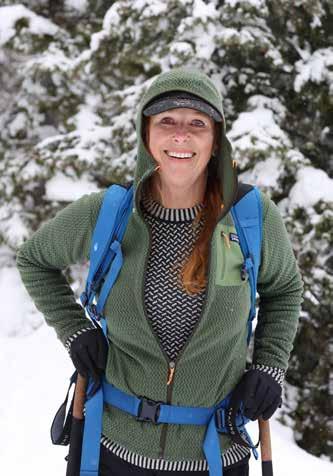

ANY CHALLENGE, WHETHER PHYSICAL
OR OTHERWISE, BENEFITS FROM A SENSE OF OPTIMISM ABOUT WHAT IS POSSIBLE.”
found a new trainer this year. Tall, devastatingly handsome and blustery at times, the mountain challenges me and helps build my strength, step by step.
There’s a lot to be said for hard work. Putting skins on my skis at the bottom of the hill each time, there’s a mixture of anticipation and curiosity about what’s ahead. Any challenge, whether physical or otherwise, benefits from a sense of optimism about what is possible. Then, there’s a mental contract about what defines success: I ask myself, “Is it about getting to the top? Enjoying the giddy ride down? Or is there achievement in the increment of each slogging step?” A challenge, in life or work, may even take your breath away. This month, we tell stories about hard work (and its payout). In honor of Women’s History Month, we met a group of women making strides in their chosen fields, and we photographed them in the new Dogwood at the Pine Shed (see page 78). Dogwood’s opening was no small effort—the former Spoken Moto building was moved in its entirety from across town on flatbed trucks to anchor the dream of a revitalized midtown maker’s district.
Writer Lee Lewis Husk has run 12 marathons and wrote about her own efforts, plus the mindset (and training) it takes to tackle 26.2 miles (page 84). We introduce you to David Metzger who has composed Grammy-award-winning scores note by note from his Tumalo home (page 105).
Similarly, page after page, this issue of Bend Magazine shares the work of equestrians, artists, skateboarders and restaurant entrepreneurs. These are our neighbors, striving to create and strengthen the fibers of our community with their efforts.
Our Insider Guide to Bend on page 72 is a love letter to Central Oregon; paraphrasing the saying: “You never know how many friends you have until you live in Bend.” There are so many magnetic sights and experiences here. Instead of offering up secrets, we give layered ways to see longtime favorite spots, while considering new places to explore or see in a new way.
Most of my challenging work is done early, with the company of the rising sun. After putting on skis, I’m joined by alpenglow and the sound of my heavy breathing as I head up a trail—the snow a witness to my progress. This is one of my favorite moments in Bend. What’s yours?
We hope you’ll fall in love with our issue by reading on,

Cheryl Parton, Editor in Chief



Craving more stories about the community you love? Leap from the printed page to digital content to find inspiration, whether for adventure or amplifying your life, by visiting bendmagazine.com and connecting to the events, people and places that define the Bend lifestyle.
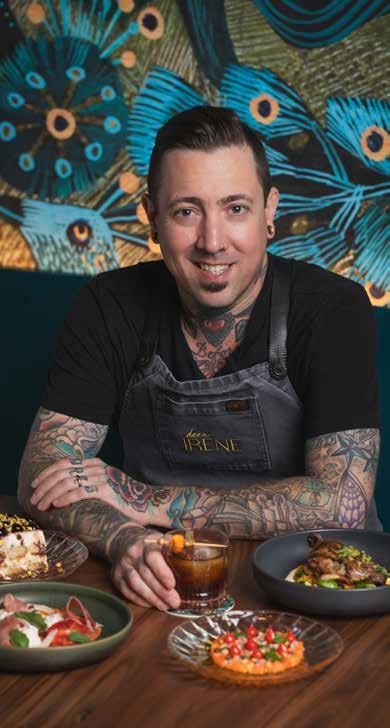
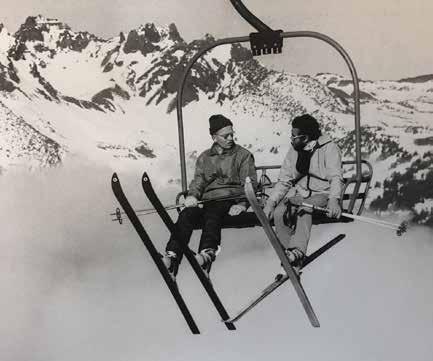
1 2 3

1. DINING GUIDE: Find expanded coverage beyond what you can find in both Bend and Savor magazines, and discover Central Oregon’s top dining spots including Dear Irene (shown above), at bendmagazine.com/dining-guide 2. OUTDOORS: Read about your favorite outdoor activities, plus discover day-trip itineraries, outdoor excursions and the history of our area at bendmagazine.com/category/outdoors 3. YOUR NEXT ADVENTURE STARTS HERE: Have Bend Magazine delivered to you all year for $5 by using code SPRING4 at bendmagazine.com/subscribe

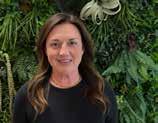
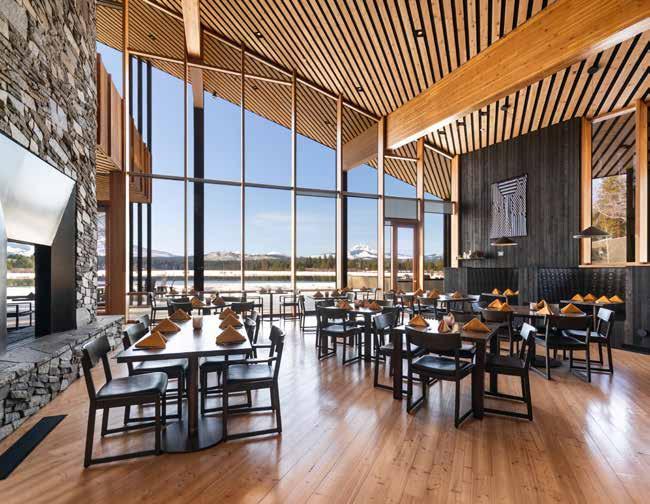

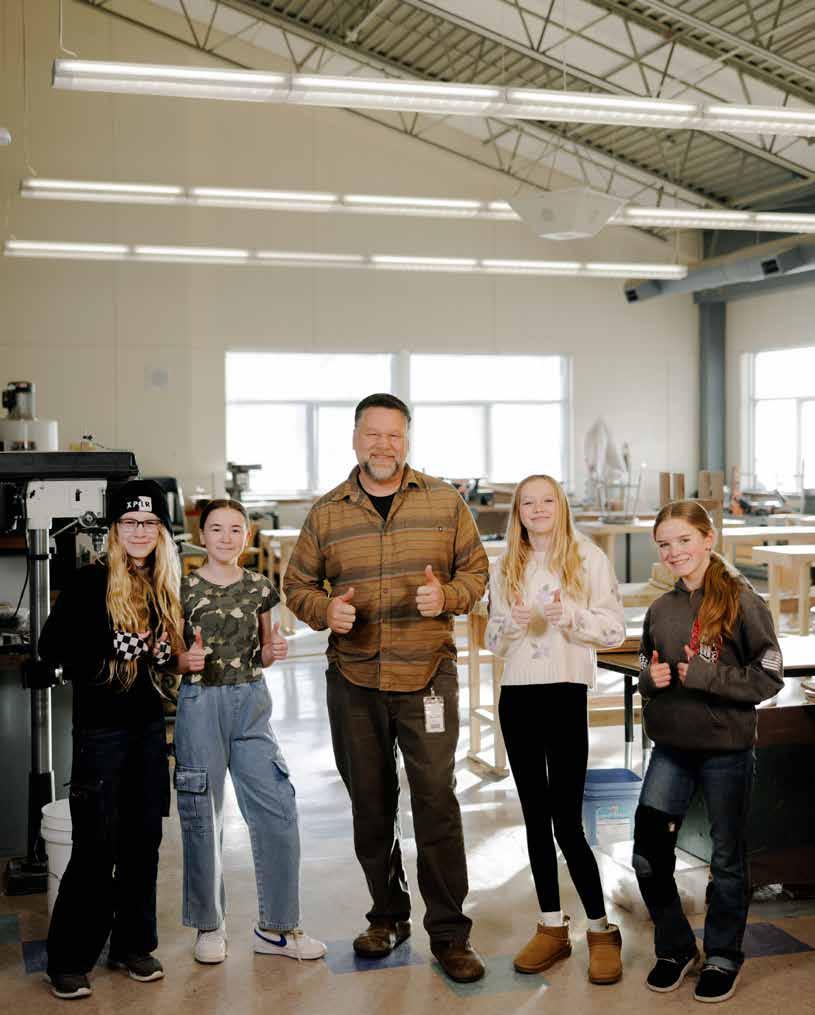
A team of Sky View Middle School girls took their innovation skills to a new level this January at the Samsung Solve for Tomorrow competition. They represented Central Oregon in the state championship, with Hermiston High School advancing to nationals. For this country-wide challenge, students in grades sixth through twelfth used science, technology, engineering and math (STEM) to design solutions for community problems. The Sky View team focused on improving safety for elderly people by designing a tiny home floor to detect falls. Sky View technical education teacher Greg Wognild suggested the girls join the competition as part of an Innovative Thinking elective. Wognild teaches a human-centered approach to design. “It’s a collaborative, creative approach to problem solving that kids need more opportunities to practice,” he said. Along with learning STEM skills, the girls discovered the power of using science to do good. As team member Brooklyn Langdon said, “We should never give up on solving people’s problems. There is always a way to make life better.”
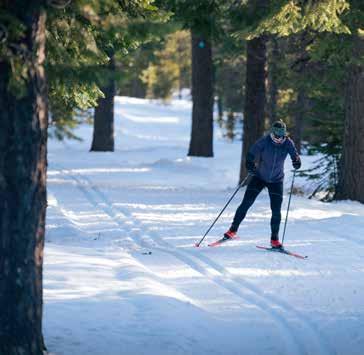
Lovers of trails at Virginia Meissner Sno-Park have an updated resource to check conditions and weather reports. Created in partnership with local developer James Montemango, the Meissner Nordic app includes real-time grooming updates, snowshoe maps accessible offline, and a history feature showing users weather patterns during the past 48 hours. See meissnernordic.org.
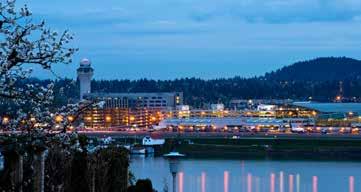
After reducing the number of flights between Central Oregon and Portland during the COVID-19 pandemic, Alaska Airlines announced plans to bring them back. Beginning in May, travelers to Portland will have three daily, nonstop options.
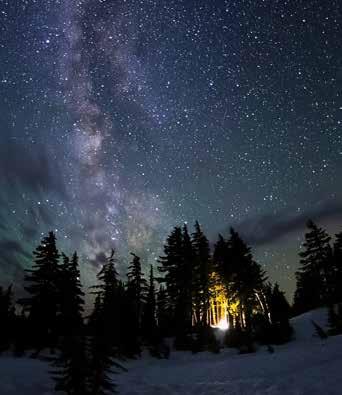
Conservation efforts to protect the night sky in Sisters were rewarded when DarkSky International gave the city a Dark Sky Community designation—only the second in Oregon. Efforts began 25 years ago, when Sisters High School introduced an astronomy program. Since then the town has retrofitted lighting throughout the community to help dim light pollution and enable views of stunning celestial displays. The actions culminated in the muchanticipated designation. See darksky.org.
After years of planning for ways to access renewable energy, the Confederated Tribes of Warm Springs was awarded $248,000 for solar projects. The federal grant is part of an initiative to build climate resilience on tribal lands. While it’s not yet clear how the funds will be used, the Tribes recently announced a potential partnership with BrightNight to build a 250-megawatt solar farm, which would be among the largest in the state. See wspwe.net.
After hosting years of field trips and nature education programs at Skyliner Lodge, the High Desert Education Service District is releasing its long-term permit, handing maintenance and management back to the Forest Service beginning June 30, 2025. For now, the future of the lodge is uncertain, but there’s a new kind of gathering place on the horizon. Skyliner Club—a recreation facility featuring a pool and gym, gathering space and activities of all sorts—is slated to open off Skyliners Road in spring of 2026.

With the slogan, “Changing the community one cup of coffee and book at a time,” Theo Perez of the Confederated Tribes of Warm Springs is a champion of tribal youth and culture. In his recently published book Celeste Goes to Warm Springs, his words and illustrations capture stories and scenes from across the reservation. Inspired by his children and late mother Celeste Brunoe, Perez donates proceeds from the book’s sales to support youth in need, sports and the Warm Springs K-8 Academy. Building on his efforts, Perez fused the community’s shared love of coffee and culture to create locally roasted Longhouse Coffee. Proceeds from coffee sales support community events at the tribe’s longhouses. “I grew up in climates where ‘impossible’ was thrown around a lot,” said Perez. “But every challenge I overcame strengthened me and showed me that with enough work, drive and dedication, nothing is impossible.” See theoperezcreations.net
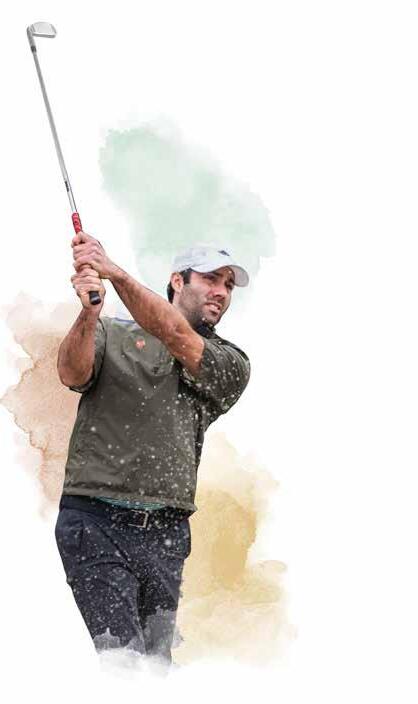
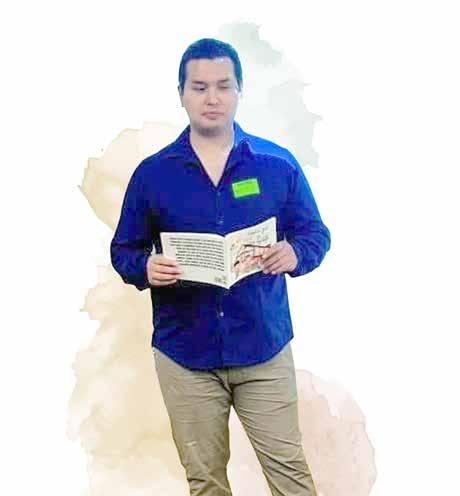
Having raised $11 million for charities across the nation in just four years, Eric Sedransk, the founder of Central Oregonbased Member for a Day, plans to add $5 million more in 2025.
A blend of charity, technology and golf, the nonprofit partners with exclusive golf courses across the United States to donate rounds for online auction, and proceeds support select nonprofits. Within one week from its inception during COVID, $100,000 was raised to provide 12,000 meals from struggling restaurants for frontline workers. Sedransk is an entrepreneur, writer, photographer and philanthropist. “In short, I’m passionate about empowering nonprofits to change the world.” See memberforaday.com
With her team of Siberian huskies, musher Jane Devlin recently added another Idaho Sled Dog Challenge to her list of accomplishments. “I love the connection and trust I get from adventuring with a team of sled dogs doing what they love,” said Devlin. Owner of Snow Mouse Kennels and founder of Dog Aerobics Training in Sunriver, Devlin entered the sport of dog sledding after rescuing Siberian huskies. She and her team have completed the Rocky Mountain Triple Crown, a combined event including the Idaho Sled Dog Challenge, the Eagle Cap Extreme and the Race to the Sky all in the same year. Driven by her love for dogs, Devlin advocates for the best ways to share the trails in Central Oregon: “A little courtesy and communication makes everyone’s adventure safe and enjoyable.”
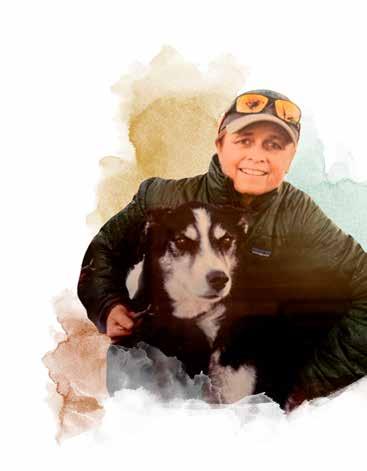
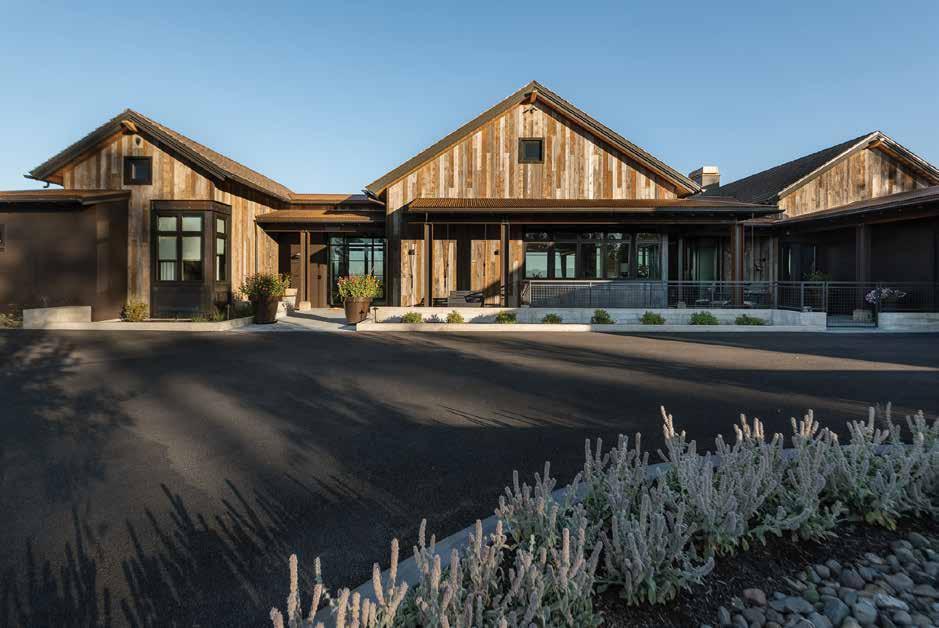
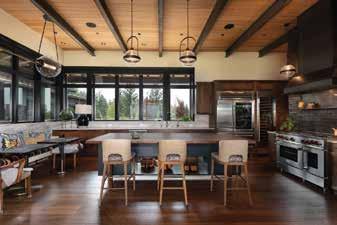
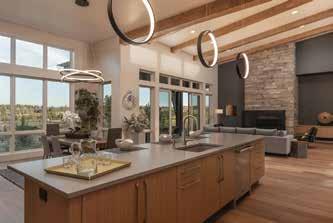
“My husband and I have had a vision for our dream home for many years. We hired Arrowood Development to build our house and let’s just say that the entire process, start to finish, was nothing short of amazing.”
— Darcy D. —

Every custom home starts with a dream. Entrust it to Arrowood Development, where there is no vision too big or detail too small. We deliver the exceptional craftsmanship, enduring quality, and elevated finishes you expect in a custom home. But we also add substance to shine with flexible collaboration, elevated project management, and an unwavering commitment to your vision.
Arrowood’s roots are in Central Oregon, where we create luxury communities that celebrate the best of Bend. We harness and focus that vast expertise to craft inspired individual custom homes with unexpected value. And, our deep network of trusted vendors means we source e ciently to deliver on time, which leads to
Home sweet home.


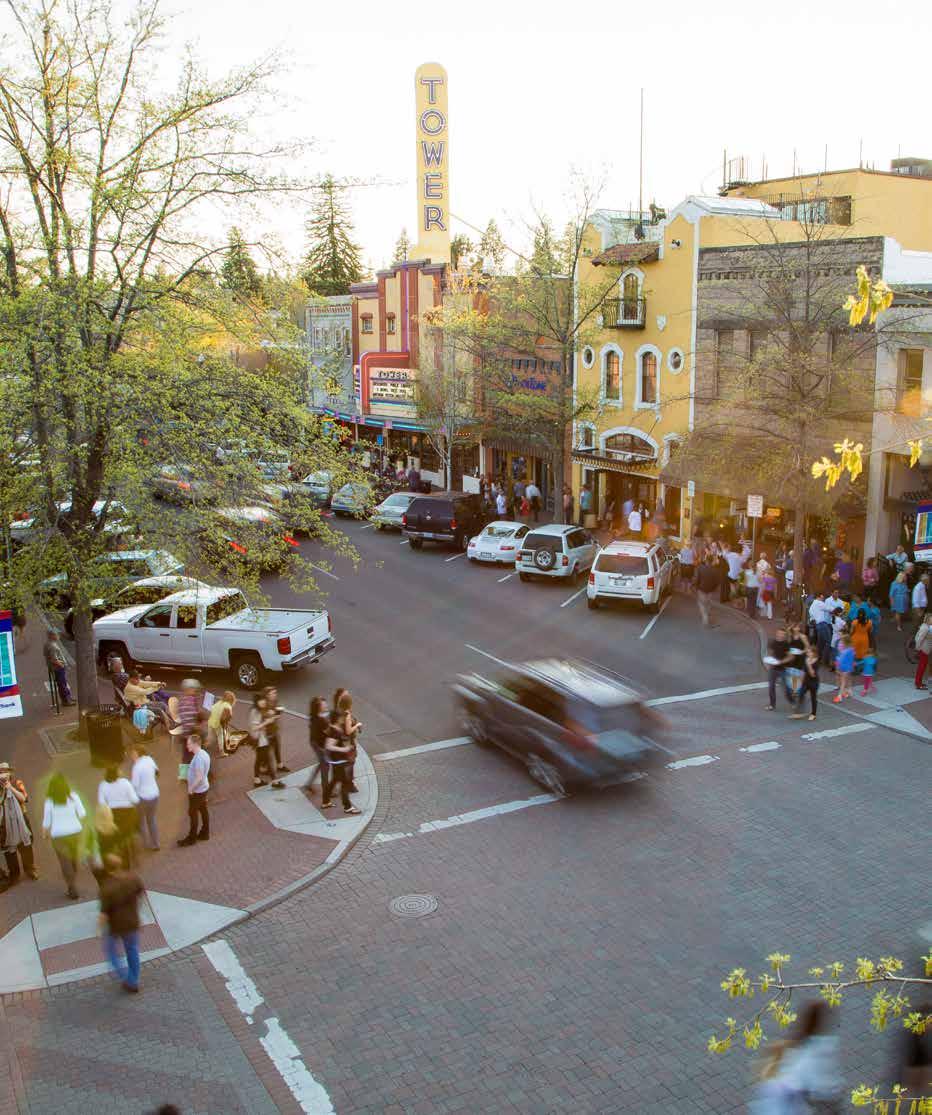

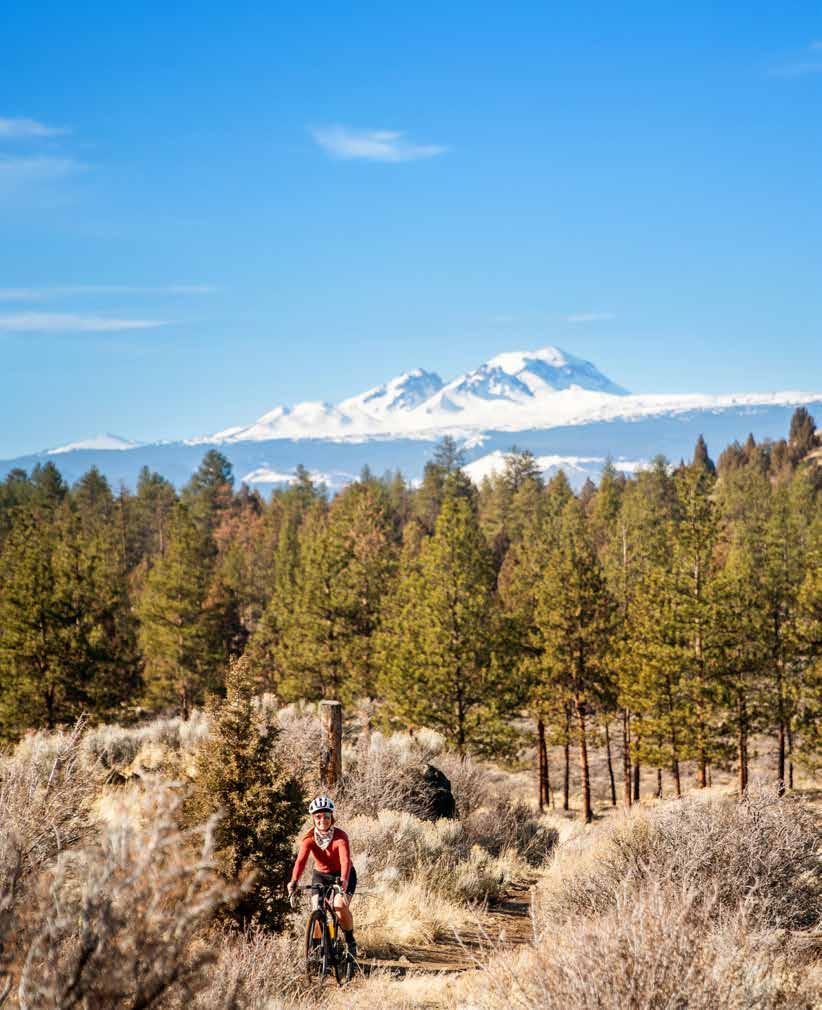
WRITTEN & PHOTOGRAPHED BY KATIE SOX
Sundrenched trails beckon high desert adventurers as the days grow longer this time of year. That means you can ski your heart out all morning then hop on a bike in the afternoon, making it a multisport kind of day. Perhaps you simply prefer pedals over poles and just can’t wait until summer to feel the kiss of tires on trails. In that case, dust off those cobwebs from your gravel bike and set out for an early-season cycling adventure. Enjoy a leisurely spin with scenic views or challenge yourself to a bit of lava rock tech mixed in with miles of flowy dirt singletrack. Whether you’re new to adventure cycling or a seasoned vet, there are an abundance of places to explore on your gravel steed.
Located about 20 minutes north of Bend, outside of Tumalo, the Maston Trail System can be accessed from Newcomb Road off Cline Falls Highway. Enjoy the 12-mile outer loop by riding counterclockwise from the parking lot and taking right turns at every major trail intersection. The route features smooth, fast dirt singletrack and a spicy spur out to the river rim on the Rockbar trail, about 2.5 miles in. This technical section with armored rock is sure to tickle the fancy of those looking for a thrill and provides a dazzling view of the Deschutes River winding through the canyon below. Most of the ride is easy to moderate, however the rocky sections are more advanced on a gravel bike. Swooping trails will lead to stunning glimpses of the Cascade Range as you loop back to the trailhead. Extend the adventure by exploring any of the trails within the Maston trail network. Stop into The Bite food truck lot in Tumalo for après nibbles and sips.
Distance: 12 miles, loop
Surface: Singletrack dirt trail with technical rock features
Difficulty: Moderate to advanced
Elevation: +500/-500 feet
Parking: Maston Trailhead
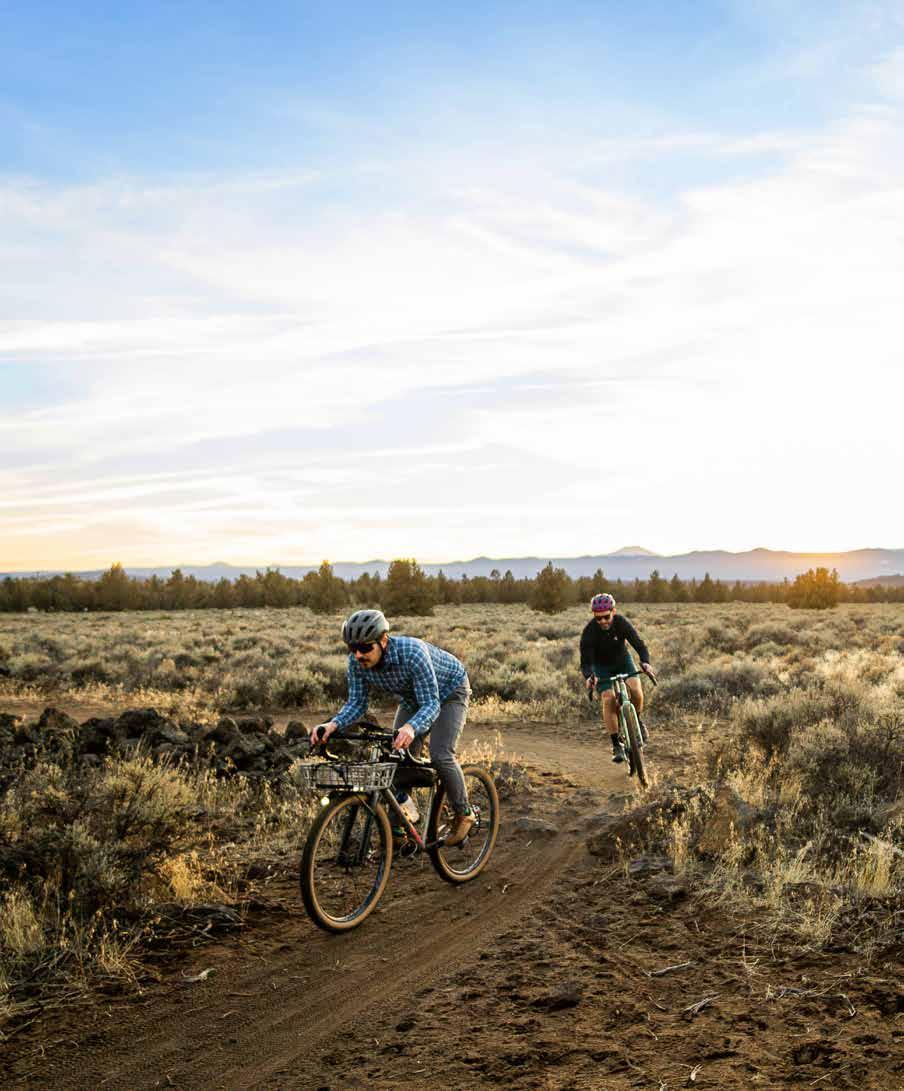
river run reach + awbrey reach Meandering along the Deschutes River, this easy-to-access ride offers views of the mountains, overlooks Archie Briggs Canyon, and has plenty of places to stop and enjoy your surroundings. A great choice for those new to gravel biking, the trail features a wide, compacted gravel surface and some short but punchy elevation changes. With lovely options for taking a break along the riverbank by Sawyer Park, the River Run and Awbrey Reach sections of the Deschutes River Trail make for a fun and scenic out-and-back ride. Head north from Pioneer Park, cross the footbridge over the Deschutes, then follow the compacted gravel trail for a sweet little escapade right from town. You’ll want to watch out for flying golf balls as you pass through River's Edge Golf Course. The trail is popular for walking and biking, so be mindful of other users and share the trail kindly.
Distance: 10.7 miles, out and back
Surface: Wide, compacted gravel trail
Difficulty: Easy
Elevation: +440/-440 feet
Parking: Pioneer Park
Flowing through desert sage brush and lava rock outcroppings, this singletrack loop serves up mountain views and a bit of rocky technical riding. On Bend’s eastside, the Horse Butte area is often accessible throughout the year, depending on snowfall and freeze-thaw cycles. Take time to enjoy many moments of awe at expansive vantage points. This loop is rideable in both directions, with the counterclockwise loop beginning on Arnold Ice Cave Trail adjacent to the trailhead parking area. Take a left on Swamp Wells Trail, then hop on Coyote Loop Trail to make your way back to where you started. With an exciting little switchback section, this is a great ride for those looking to challenge their gravel-bike skills. The Horse Butte area offers many miles of trails and route options, as well as gravel and paved roads for those looking for a bigger ride. You could even navigate a road route from town out to the trails, making for a longer, car-free adventure.
Distance: 9.8 miles, loop
Surface: Singletrack dirt trail with technical rock features
Difficulty: Moderate to advanced
Elevation: +649/-649 feet
Parking: Horse Butte Trailhead
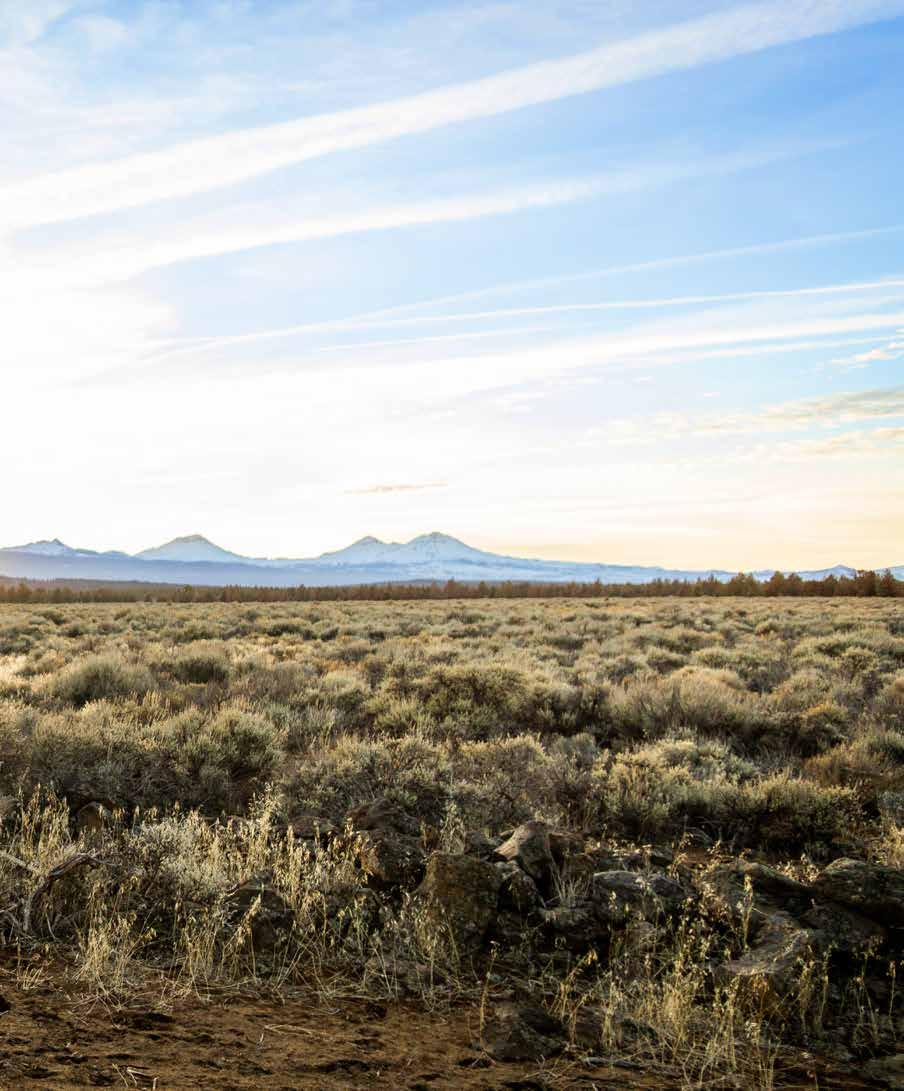

It’s a dreamy time of year to hit the trails, as they’re often less dusty and more hard-packed than later in the season. Weather can change quickly on the high desert, so you’ll want to check the forecast, dress in layers according to the range of temperatures. Be mindful of trail-user etiquette by not riding in muddy conditions. You can find trail maps and GPS info on apps like Ride with GPS and Strava, or websites such as bendtrails.org . Be sure to ride within your skillset and, as with any outdoor foray, know before you go.


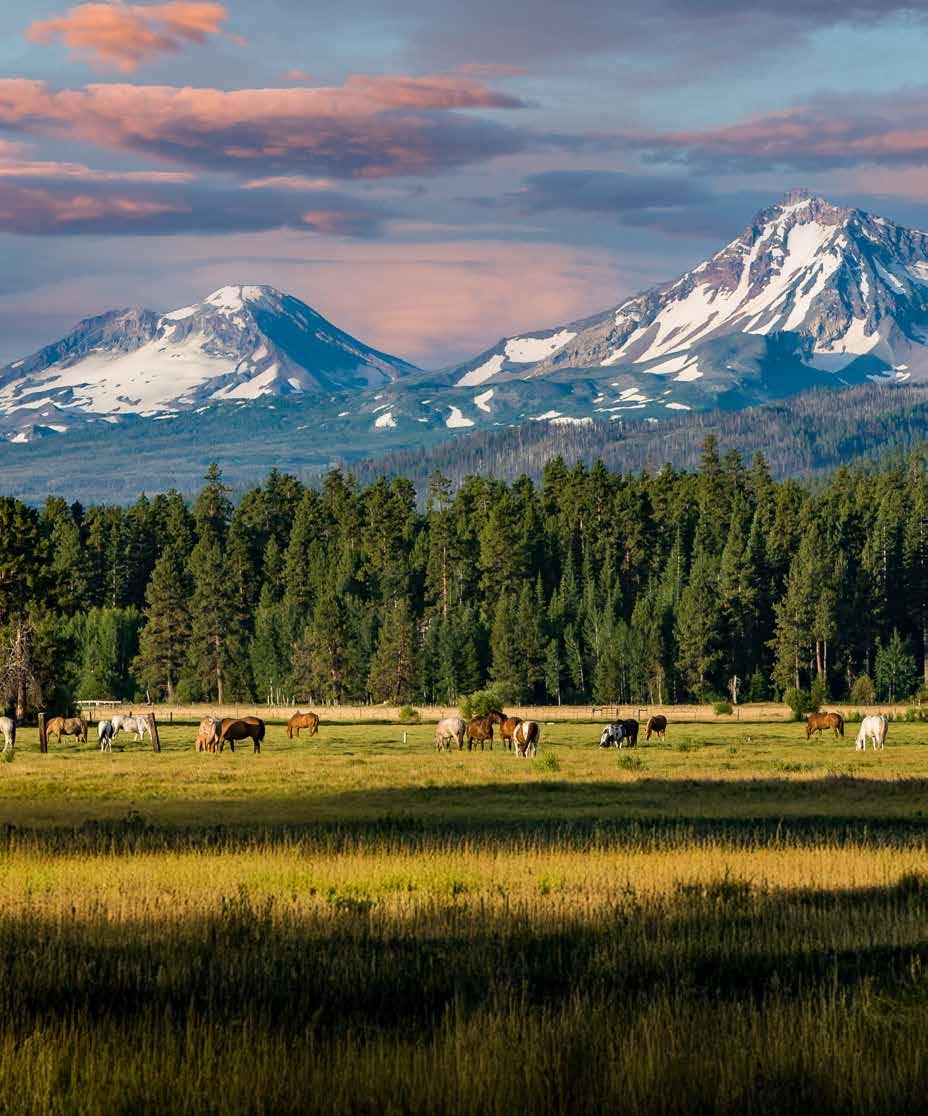

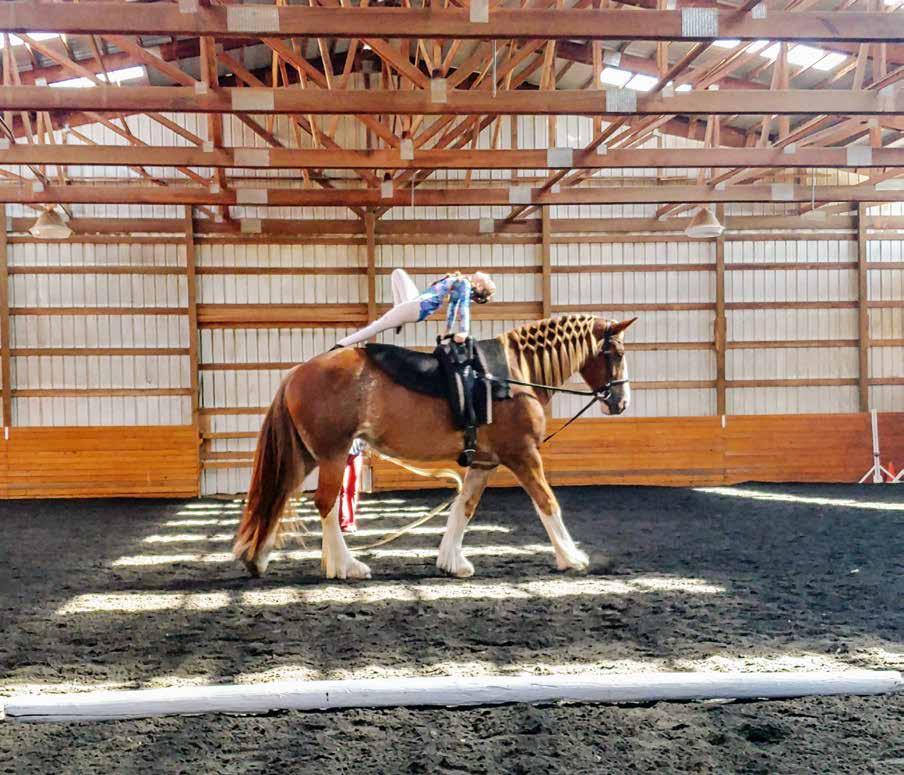
Equestrians vault toward the Summer Olympics
WRITTEN BY HEIDI HAUSLER
In a sport where athletes stand in vertical splits on the back of a cantering horse, courage, teamwork and trust are paramount. An artistic and technical blend of gymnastics, ballet and horsemanship, equestrian vaulting finds its roots in Ancient Roman games and is soon to make its Olympic debut at the 2032 Summer Olympics. In Central Oregon, young athletes train year-round at Hope Mountain Vaulters, one of only three clubs in Oregon and 78 in the United States.
Combining grace and strength, the performative sport of vaulting involves an athlete executing a series of acrobatic movements while perched on a moving horse. A “lunger” guides the horse with 15 feet of lead rope in a circular walk, trot or canter from the arena’s center throughout the vaulter’s routine. Performed to music, vaulting is judged on a scale of one to 10 for compulsory and artistic elements.
Led by longtime equestrian and lead lunger Lydia Singer, Hope Mountain
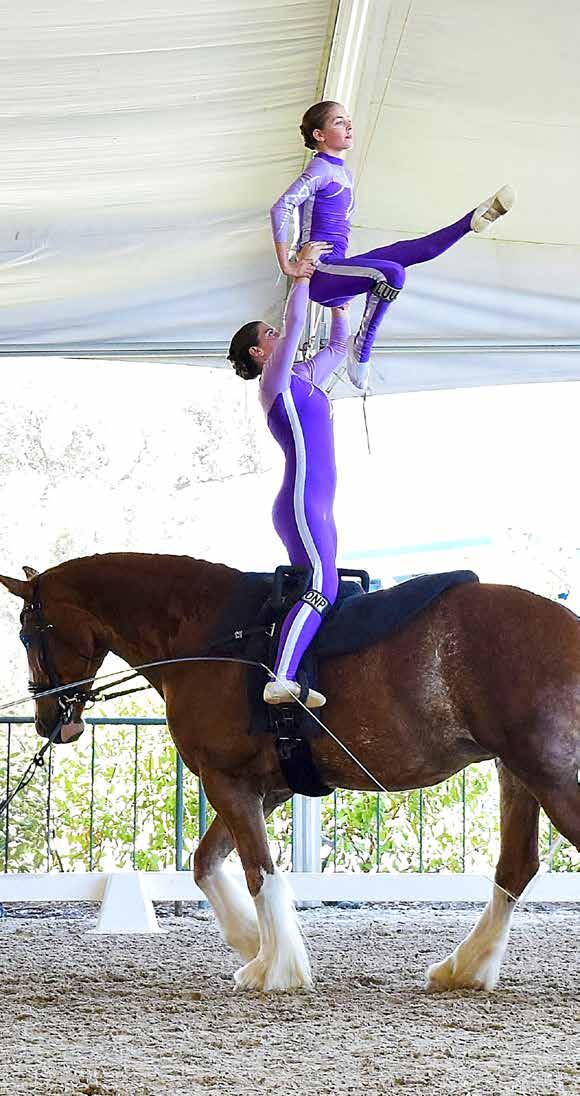

THE VAULTING COMMUNITY IS ALL ABOUT LIFTING EACH OTHER UP, SAFETY AND RESPECT.”
Vaulters offers recreational and competitive vaulting programs. “We’re very careful and thoughtful about how we train our horses and vaulters,” Singer explained. Having a horse for a teammate requires a different set of skills than other sports, she added. Care for the horse is woven into the daily practice schedule, and athletes are educated on how to identify a horse’s injuries and ailments. This daily connection is integral to building mutual trust, the foundation of vaulting. Eleven-year-old national qualifier Emery Mills said, “Our horse, Kitty, always knows what we need. When I’m nervous, she helps me feel calm.”
At Hope Mountain Vaulters, athletes say it’s more than just fun and hard work. “Vaulting has taught me about life,” Emery shared. Riding horses in rodeo-style events since the age of 7, she switched to vaulting in 2020 after a frightening barrel racing experience. Immediately hooked, she’s been dedicated to the sport ever since. “Vaulting got me back in the saddle,” she said. In 2032, Mills will be 19 years old and is working toward a spot in the Brisbane Summer Olympics.
Coached by Hope Mountain’s Julia Walk, 15-year-old canter vaulter Vivianna Singer, is entering the competition season this spring ranked fifth in the nation. Vivianna began vaulting in 2019 and has competed and trained with clubs across the country and in Canada. Her signature move, the “Needle,” earned her a rare perfect 10 in an international competition. Working toward the Junior World Championships, Vivianna, with partner Katherine Midkiff of Serendipity Vaulters in Yamhill, Oregon, won a national title for their pas de deux ,
BY

an event involving two vaulters performing synchronized movements on the back of one horse, and often lifting each other into the air while the horse circles inside the arena. Although vaulting appears to be a dangerous pursuit, the intensive training, trust and controlled environment make it safer. Working in a synergistic partnership, the vaulter, lunger and horse are in-tune with each other and adjustments are made if there’s a hint of agitation, Singer explained. Athletes are taught emergency dismounts, and audiences are educated on the etiquette of spectating. “Our horses are chosen for their solid minds,” she said, and arenas—even the soil—are analyzed for safety. In a sport where athletes as young as 5 years old are perched on a 2,000 pound, 17-hands-tall horse, mental toughness develops naturally—and athletes find ways to combat nerves before entering the arena. Doing the Makarena on the back
of her horse is Emery’s tactic, “I get a lot of laughs,” she said. Vivianna focuses on the judges. “I read my horse so I can mirror her,” she explained. “Learning to trust the horse underneath you teaches you how to trust yourself.”
It’s not surprising that a sport reliant on connection fosters a community spirit. “Every club we travel to offers their horses to visiting competitors, along with advice on how to ride them,” Hope Mountain Vaulters volunteer Courtney Eastwood shared. “The vaulting community is all about lifting each other up, safety and respect.”
Offering periodic recitals throughout the year for the public to enjoy, the club also welcomes visitors to watch practice sessions with advanced notice. “Vaulting is so unique. People are really surprised when they see it,” Vivianna said, “It’s a hidden gem.” See hopemountainvaulters.com.
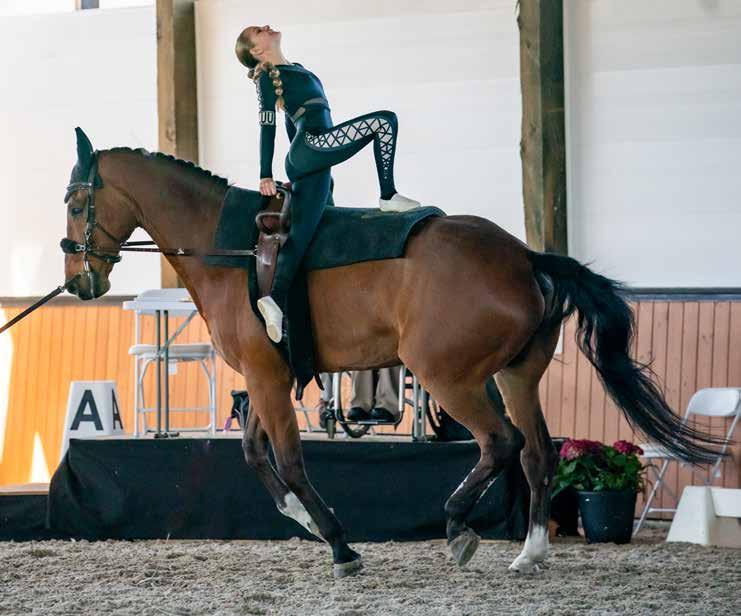
BY
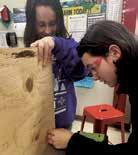
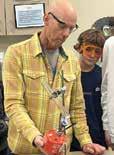


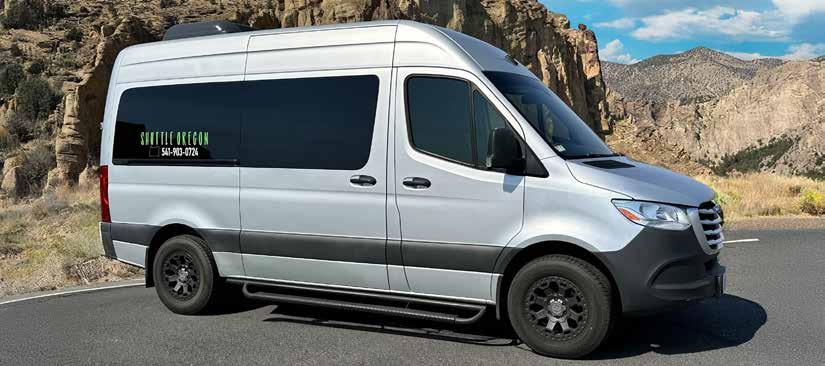

Camp Sherman Store & Fly Shop campshermanstore.com
Cold Springs Resort & RV Park coldspringsresort.com
House on Metolius metolius.com
Hoodoo’s Camp Sherman Motel & RV Park campshermanrv.com
Hola! holabend.com
Lake Creek Lodge lakecreeklodge.com
Metolius River Lodges metoliusriverlodges.com 541-595-6290
Metolius River Resort metoliusriverresort.com
The Suttle Lodge & Boathouse thesuttlelodge.com
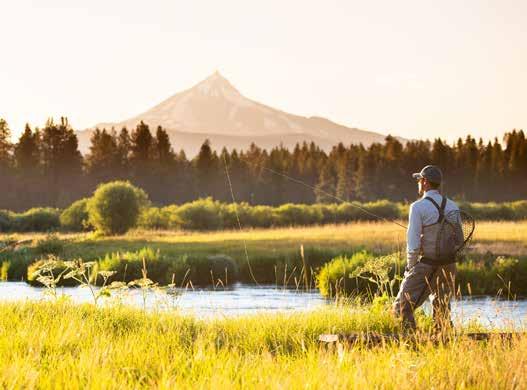
For a time to relax in the beauty of huge Ponderosa pines and a magnificent river, visit the Metolius Basin in Central Oregon (Camp Sherman). Hike, fly fish, mountain bike, snow ski (in season), view wildlife or just sit in front of a fire and watch the river go by. Cabins for rent at 8 resorts and great food available at several locations. Visit MetoliusRiver.com.

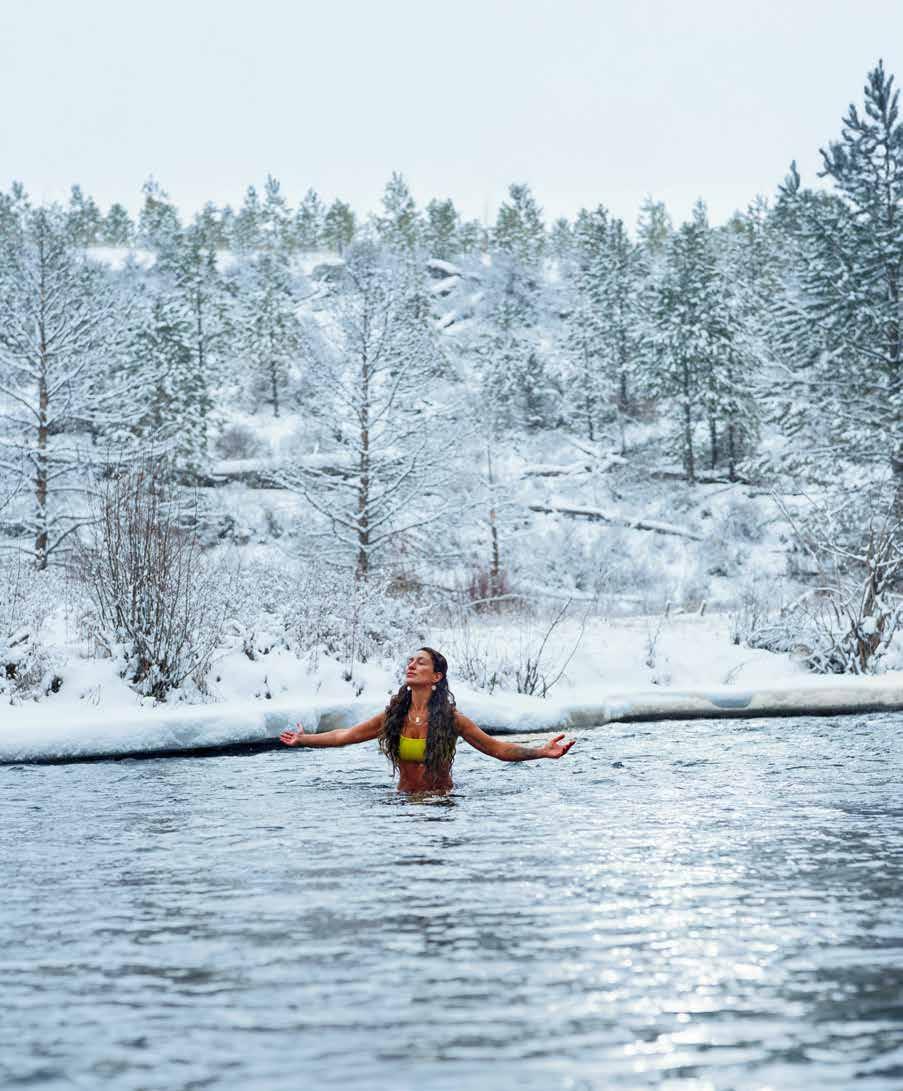
A surge of interest in contrast therapy has made it easy to unleash your inner Viking
WRITTEN BY TIM NEVILLE
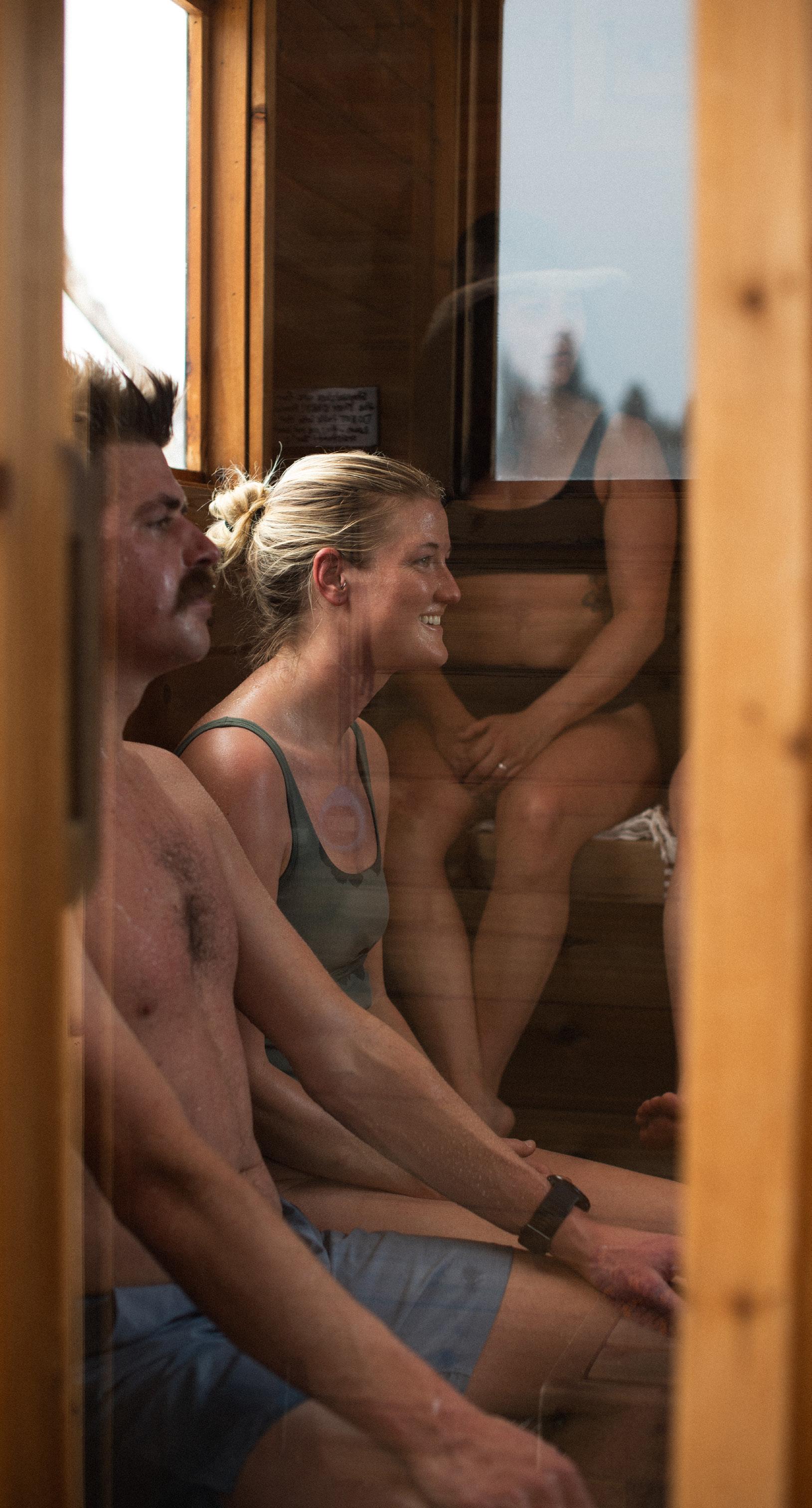
Frankly, I think they’re bonkers. Some friends and I are seated in a sauna sweating our cheeks-to-cheeks off. It’s a cold, brittle day in Ramsvik, Sweden, and the oven-hot air inside here has that spicy cedar scent. My leg muscles, tight from a morning trail run, now go slack like molasses in the sun.
“You ready?” prods my friend Jim, motioning toward the sauna door.
The sauna sits along a small cove of black, 43-degree seawater, which is a whopping 160 degrees colder than inside the 200-degree sauna. Jim wants to race outside and do a cold plunge. The Vikings themselves knew this kind of hot-cold routine could bring curative, transformative powers. To me, it sounds like torture.
“I don’t know,” I say. But peer pressure prevails and into the water I go.
You know what happens next. I freak out. The cold crushes my breath into sharp, inefficient gasps. The water drains the heat from me with lethal efficiency. Every brain cell tells me to get out of this, now. I do as Jim says and work to control my breathing. When I do, something odd starts to happen.
I find willpower. Time slows and thoughts go still. I stop reacting to the pain and let my mind feel it out, like a finger drawn on an old stone wall. For a moment, I’m in control.
In less than a minute survival instincts take over and guide me out of the water. Dripping wet in the icy breeze on the dock, I am neither hot nor cold but sharp and alert like never before. I feel like a guy who has learned he can fly.
Scandinavians have long embraced the sauna-plunge ritual of vinterbadning, or winter bathing, but now “contrast therapy” is everywhere. In Bend, you could even say it’s having a moment.
Consider this. The original sauna/cold plunge business in Central Oregon is in its third year of a partnership with Bend Park and Recreation District. Its setup at at Riverbend Park allows you to sweat in a wood-fired sauna only steps away from a plunge in the chilly Deschutes River. Founded in 2019, Gather Sauna House will soon add a brick and mortar spot in addition to its seasonal park location.
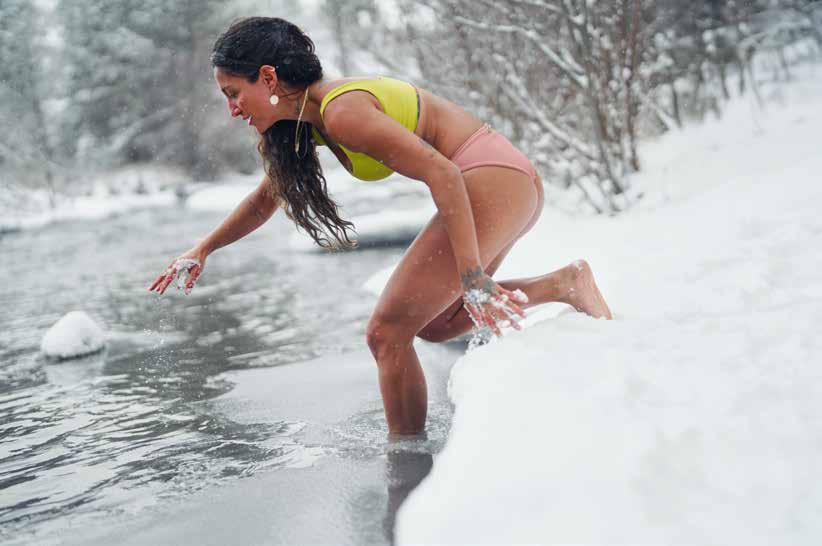

DRIPPING WET IN THE ICY BREEZE ON THE DOCK, I AM NEITHER HOT NOR COLD, BUT SHARP AND ALERT LIKE NEVER BEFORE. I FEEL LIKE A GUY WHO HAS LEARNED HE CAN FLY.”
In late December 2024, SweatHouz opened on SW Century Drive with cold plunges and infrared saunas that warm tissues with a deeper heat. ChillWell opened in September 2024 on Olney and Wall streets. Flux Thermal Lounge in the westside Century Center will open in 2025 to provide hot and cold water immersion therapy. Bend’s mobile barrel sauna and cold plunge service, 541 Social Club, found a permanent home at Foundation Health and Fitness in southeast Bend.
Want to build your own? Redmond Spa Stove and Sauna has the heat. For about $15,000, Redmond-based BlueCube will make you a handcrafted tub cooled by commercial chillers.
“People are digging it,” said Bryan Messmer, a former self-described contrast therapy skeptic who tried it, had a wonderful, transformative experience and launched ChillWell.
“I thought for sure I was going to see a bunch of yogis and granolas and endurance athletes and biohackers and those
kinds of people, but that has not been the case,” Messmer said. “This has been for everyone.”
For years, athletes everywhere have fought muscle soreness and fatigue with cold therapies while others have sought the mental and physical benefits of cold plunges and breath work championed by people such as surfer Laird Hamilton and Wim Hof—the Dutch “iceman” known for his acts of enduring extreme cold. With this flush of new services in Bend, anyone can book a session and hire an expert to guide them through the experience.
Clayton Reeves, a Mountain View High School grad and an Oregon State Beaver with a bachelor’s degree in exercise sports science, is one of those experts. He returned to Bend after seeing a need for a mobile contrast therapy service. By January 2023 he was rolling around town with a barrel sauna and cold plunge tubs on a trailer that he could set up outside of gyms. He showed up at corporate retreats and marathons. Often people would hire him to do private pop-up events on their neighborhood streets.
“So many people would stop me and be, like, is that wine?” Reeves said. “I’d say, ‘No, it’s performance recovery.’”
His new space at Foundation Health and Fitness is now fully enclosed but the benefits are the same. How hard you train
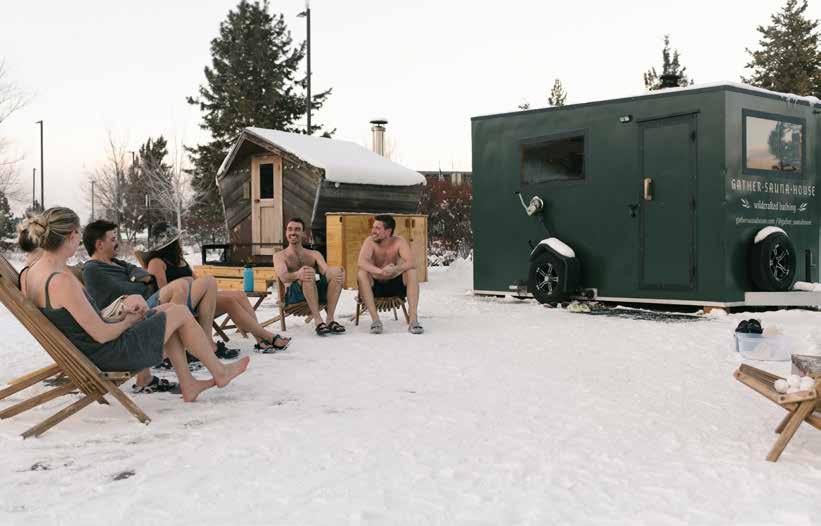
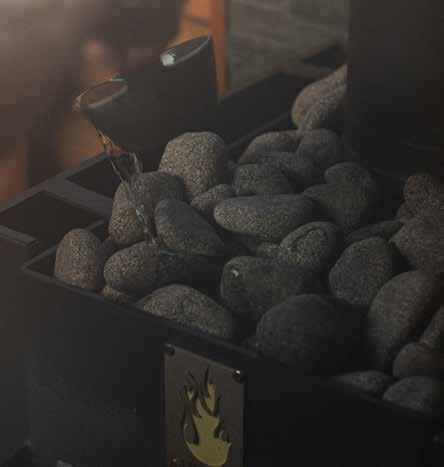
is only as beneficial as how well you can recover, he said. Alternating between hot and cold can speed that up.
For the hot portion of contrast therapy to work best, Reeves said you need an environment that’s at least 170 degrees. That’s when our cells activate a flood of heat-shock proteins that cruise around the body looking for and repairing damaged cells. The heat also ups your heart rate, which ups your blood flow and results in faster repairs. A sauna also stress tests our abilities to sweat, which trains our bodies to cool themselves more efficiently in the future.
Adding in cold is when things get interesting. Getting into water that’s roughly 40 degrees drastically reduces inflammation throughout the body, slashing pain. Coldshock proteins whirl to life and pick up the repairs. Feel-good neurochemicals such as dopamine, adrenaline, epinephrine and oxytocin surge into the blood stream giving us a euphoric rush.
To warm ourselves back up, our cells incinerate “brown fat,” a healthier fat than the “white fat” that’s great for the brain. The hot-cold combo can leave you in a better mood with less stress and anxiety and more confidence to face new challenges. “Plus I sleep like a baby,” Reeves said.
Me, too. Not long after I get home from Scandinavia, my wife and friends book a session at Gather Sauna House. I’m tempted to try it again, but ultimately chicken out. My wife struggles to push through the pain, while another friend, Erin Morgan, is hooked. She lights up when I ask her about it a few days later.
“I feel like that yoga shirt that says, ‘I’m just here for the Shavasana,” Morgan laughs. “Bring it on.”
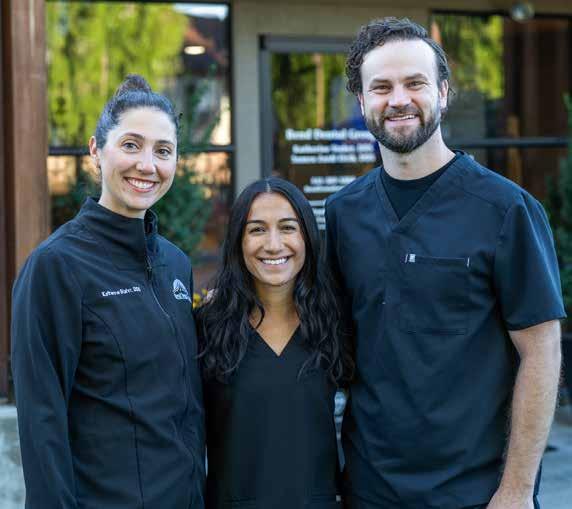
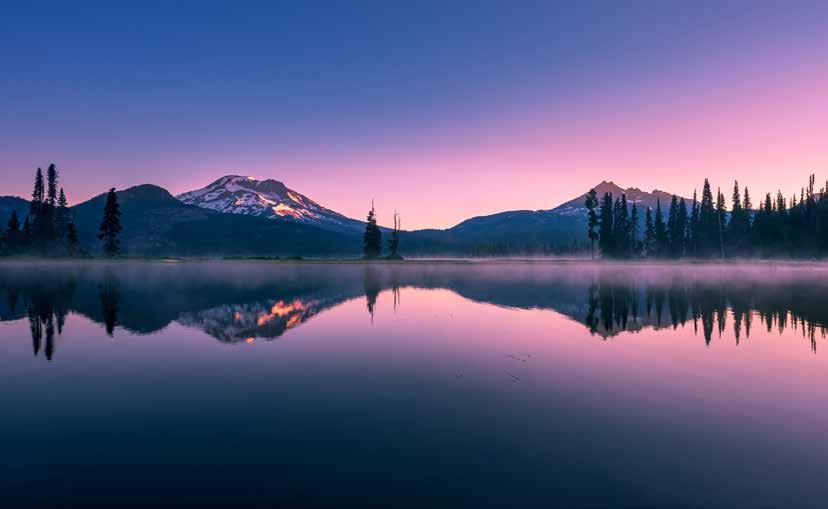
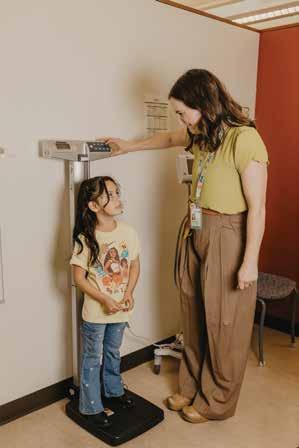
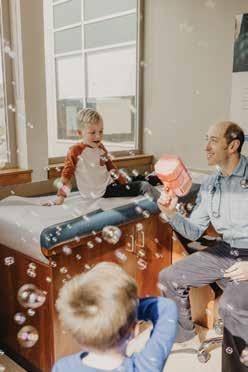


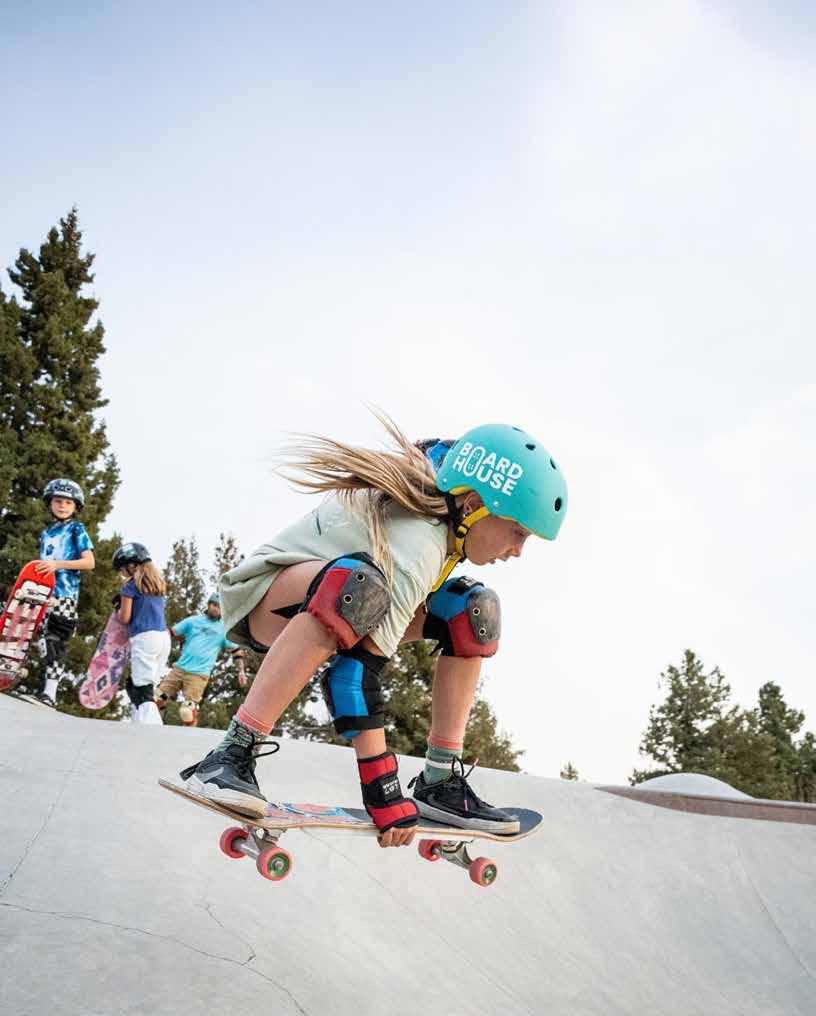
Creating an indoor skatepark and community hub for Central Oregon
WRITTEN BY SIENA DORMAN
There’s a skateboarding renaissance on the horizon. Caitlin and Tryg Bjornstad are the visionaries working to transform the seasonal Central Oregon skating scene into a year-round community. With the introduction of the Board House Society—an indoor skating initiative—the Bjornstads, along with their expanding team, are on the hunt for a 15,000-square-foot warehouse to anchor their growing community and house Bend’s only indoor skatepark. In its fundraising and community-growth phase, the Board House Society is rooted in an ethos of support, inclusion and stoke.
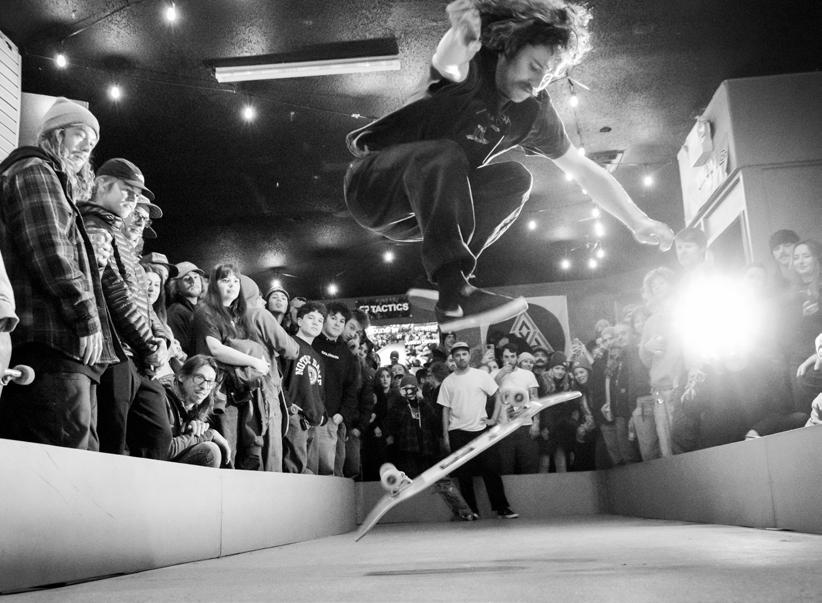
Skaters in town share the woes of skateboarding in Central Oregon. Existing skate parks are exclusively outdoors, affected by weather conditions such as snow and smoke, and are limited to daylight hours.
A skate community begins when young people are given year-round access to parks, according to Trent Bowman, a community partner with Board House Society and a team member from Bend’s Tactics boardshop. Bowman, who grew up in Southern California, witnessed firsthand how access fostered a withstanding love for skateboarding. After moving to Bend, he noticed kids’ interest in the sport dropping off without a consistent connection to it. He also feels the absence. “Me and my homies need a place to skate,” Bowman said. “We work at the shop until eight, and then we’re like, ‘Where do we go? It’s dark.’”
Wise to this frustration, the Bjornstads have dedicated themselves to creating a solution: an indoor hub where weather is not a barrier to getting on a board. The Bjornstads are keen on removing other barriers to skating, too. Board House will cater to every age and skill level, from little rippers to skate-moms in the making. The facility has plans for ramps and rails, along with coworking spaces, an art hub with graffiti walls and a space to relax and talk shop.

WE WANT TO MAKE IT CLEAR THAT THE MOMENT YOU WALK THROUGH THE DOOR, WE’RE SUPER PSYCHED THAT YOU’RE HERE.”
Accessibility is at the forefront of its mission, with systems for mentorships, affordable rentals and safety gear scholarships. “We want to make it clear that the moment you walk through the door, we’re super psyched that you’re here,” Caitlin said.
The decision to build a welcoming and consistent skate community was made in the summer of 2023, when Tryg was at a crossroads in his professional life. After 25 years of a leadership role in carpentry, where he was able to make positive impacts on company culture, a mandatory transition to remote work left him feeling isolated from the people he

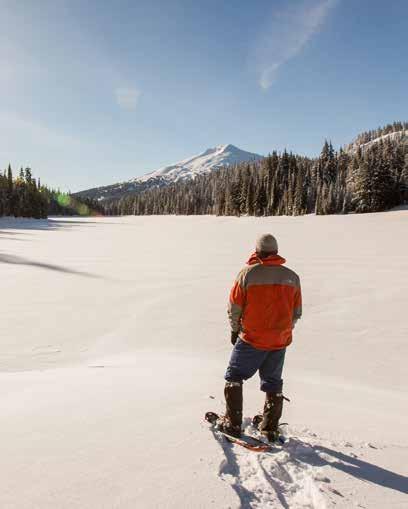
Tryg turned to his buddy, pro-surfer Garrett McNamara who set the record for surfing the world’s largest wave, and who knows a thing or two about chasing dreams. “He told me to make a list of the things I like to do and a list of the things I don’t like to do,” Tryg said.
He found himself staring at two lists he’d drawn up. The first was Tryg’s “good boards” list—snowboards, wakeboards and skateboards. His second list included less inspiration: being “bored.” Tryg chose the first list and from there, passion and purpose came together in the form of Board House Society. “If every day was wonderful, what would that look like?” Tryg said. “If you can create a place that looks like that, then you’ve just created a wonderful life.” See boardhousesociety.org , @boardhousebend

Learn more about Board House Society by listening to a conversation with Caitlin and Tryg Bjornstad on The Circling Podcast. Listen at BendMagazine.com/podcast uplifted in his work. Plus, he sought a way to contribute to the community.
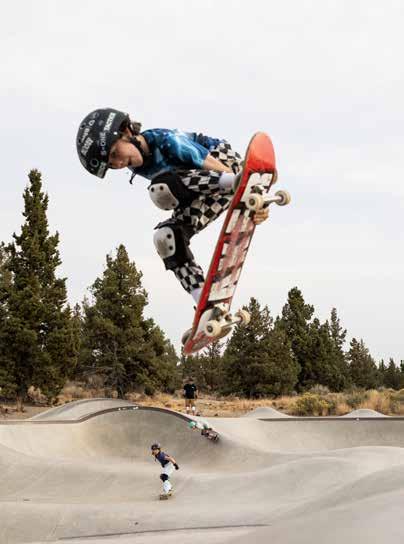
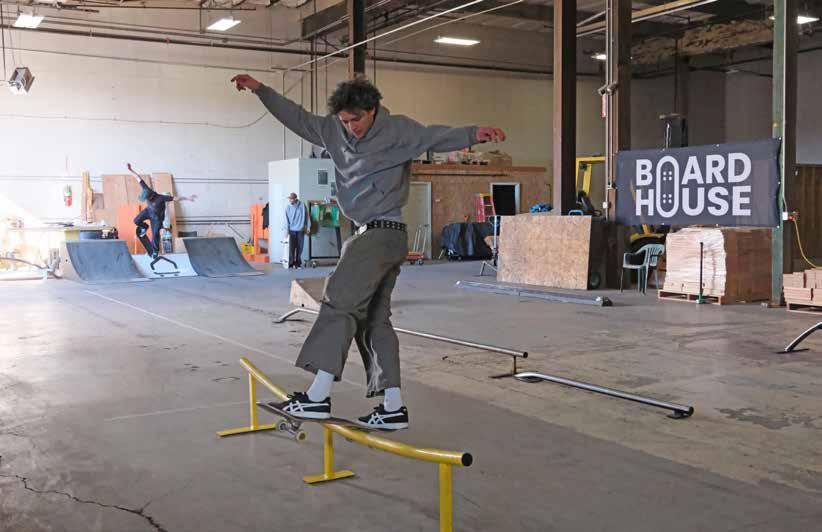
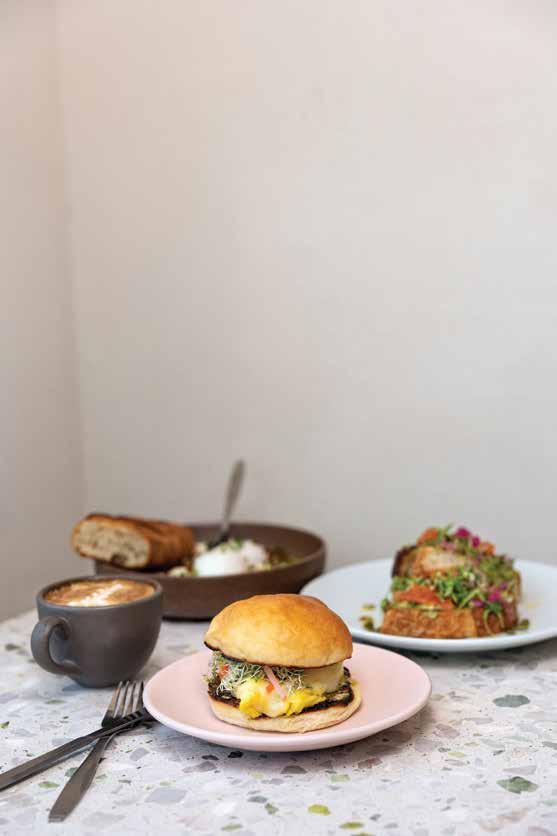
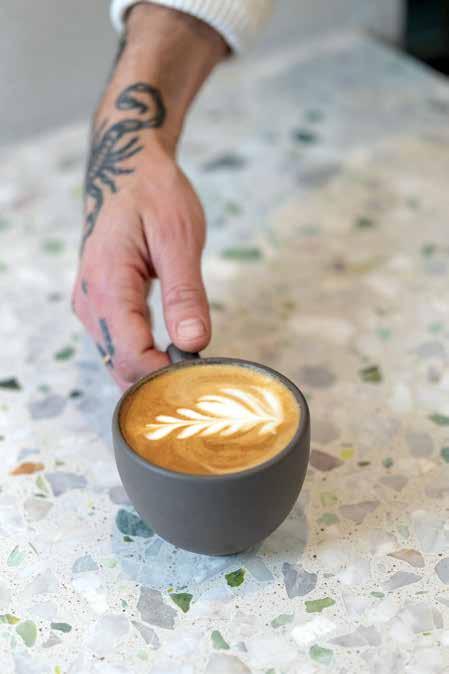
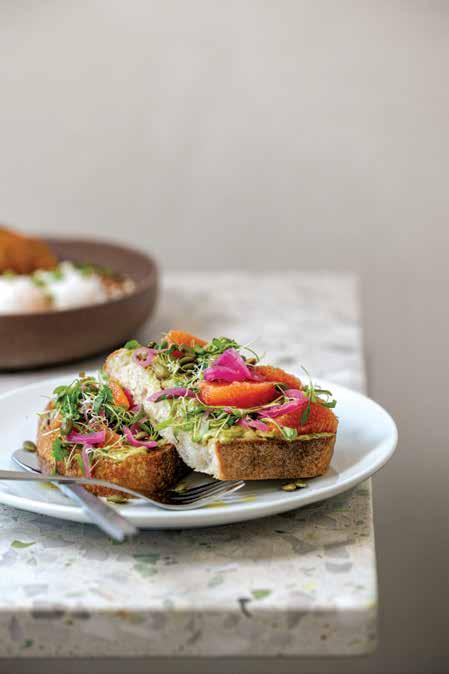
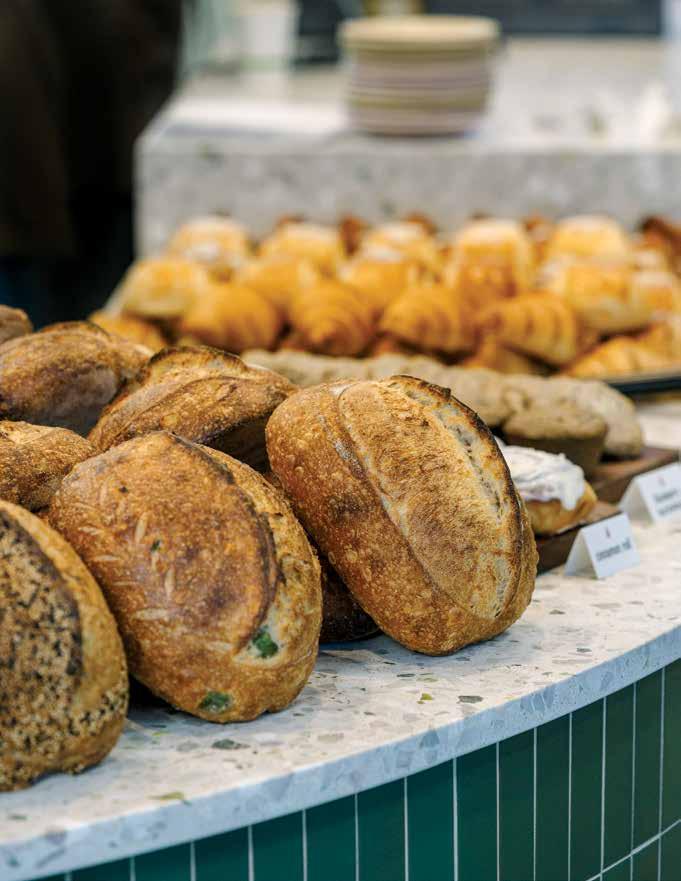



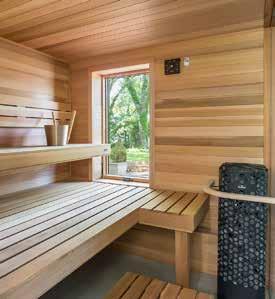

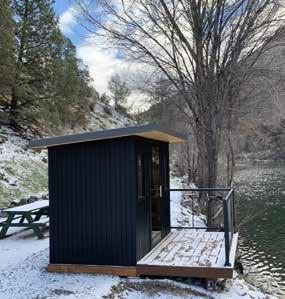
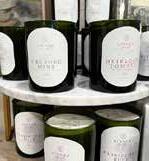
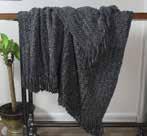

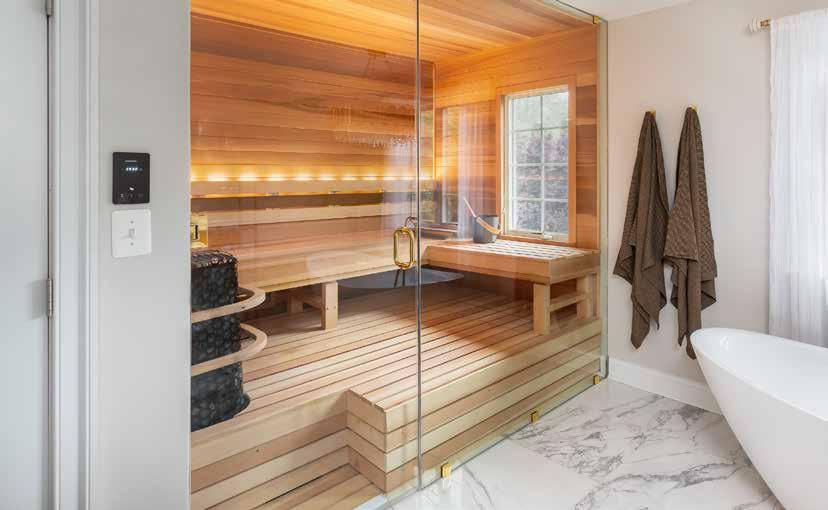
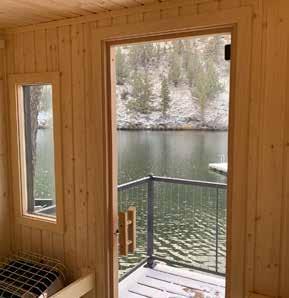
Nonprofits are the winner of Bend’s fundraising game card
WRITTEN
BY
SHEILA G. MILLER
PHOTOGRAPHY BY ALYSON
BROWN
Every Sunday morning, there’s a line of people at Silver Moon Brewing’s side door, waiting to indulge in a breakfast cocktail and throw money at a good cause.
This is Not’cho Grandma’s Bingo—six rounds of fun and fundraising games with host Dusty Riley and her partner, Stacia Guzzo, cofounders of YOUNI Movement, a company dedicated to promoting inclusivity and awareness at community events. The duo provides event planning, production and execution. As emcee, Riley brings high energy vibes and a pay-it-forward spirit to each gathering.
Not’cho Grandma’s Bingo started about nine years ago, when Riley was general manager of Silver Moon Brewing and planned the brewpub’s events. “It was a natural arm for Silver Moon to be a hub for the community and to support local nonprofits,” she said.
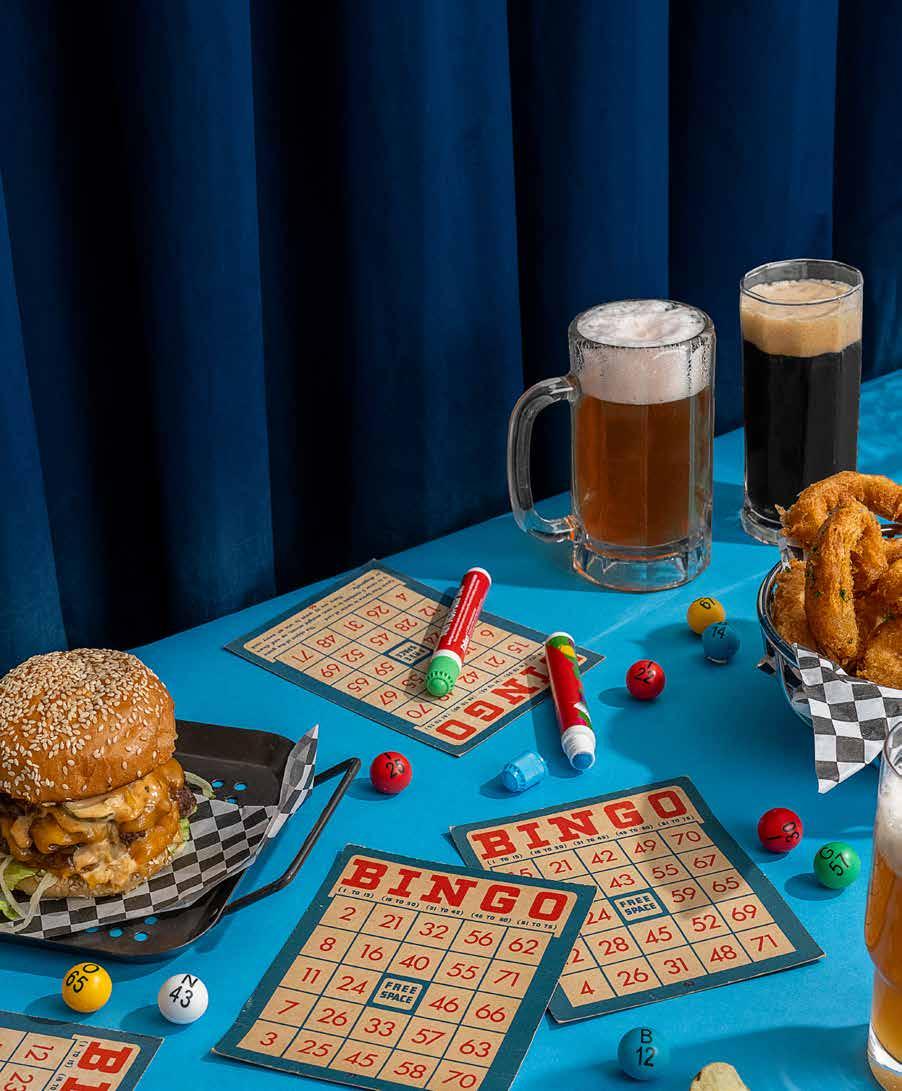

In 2016, the bingo games raised money for Deschutes County Sheriff’s Office Search and Rescue foundation each Sunday.
The bingo program continued to grow from there, and in 2024, almost 30 nonprofits benefited from the events at Silver Moon Brewing. Riley estimates that more than $2 million has been raised for organizations throughout the region.
Working closely with the featured nonprofit in the weeks leading up to an event, Guzzo and Riley design a program to meet the organization’s goals, from raising money or identifying new donors and volunteers to increasing awareness of a nonprofit’s mission.
“It’s very intentional. You may show up and think, ‘This is crazy chaos!’ But it’s carefully crafted. It might seem like this spontaneously crazy event, but ultimately we’re working for that communal uplift,” Guzzo said. “People in the audience aren’t even aware that we have goals in mind.”
In Oregon, bingo games are governed by the Oregon Department of Justice (DOJ). Nonprofits must apply for a bingo license, and there are restrictions and legal hoops to jump through. Each October, YOUNI Movement opens up its schedule for the coming year to connect with nonprofits.
Those interested in participating must meet all Oregon DOJ requirements, and representatives are asked to attend a Q&A. Upcoming beneficiaries include Healing Reins, Saving Grace, Mount Bachelor Ski Patrol and Bend Park and Recreation District. The schedule is full throughout the spring.
Deschutes Children’s Foundation Executive Director Cassi MacQueen is a longtime partner with YOUNI Movement, and the Foundation has fundraised through Not’cho Grandma’s Bingo many times over the years. “The participatory, highenergy bingo events they run are some of the most fun and effortless fundraising opportunities we’ve ever enjoyed,”
MacQueen said. “Being able to invite our supporters for a boisterous event that celebrates community and inclusion while furthering our mission? Yes, please!”
Noting that there is a trifecta that brings these events together, Riley explained how she and Guzzo, Silver Moon Brewing and the nonprofit all share in each other’s goals. “One of them,” Guzzo added, “is that we can inform and introduce the community to even more of the amazing things that are happening in Central Oregon.” See younimovement.com, silvermoonbrewing.com



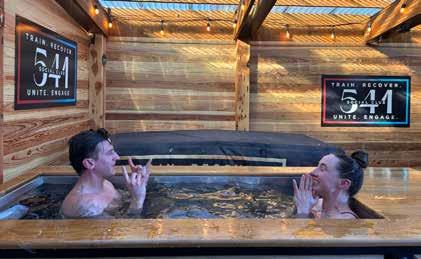
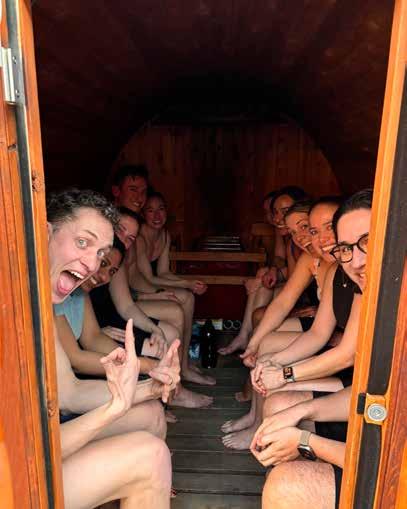

TDS® now offers Central Oregon the area’s fastest starting speed: game-changing 1 Gig Internet! It’s faster than you ever dreamed—and more affordable than you thought possible. The future of fast is HERE, and it’s yours for the taking!

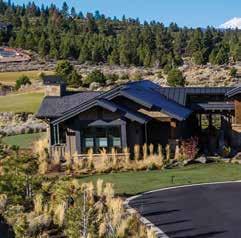
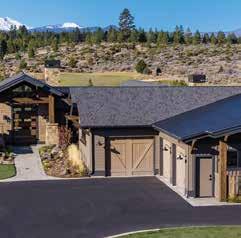
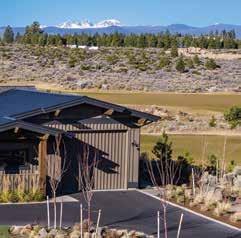

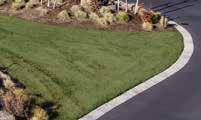
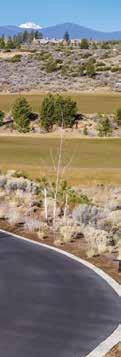
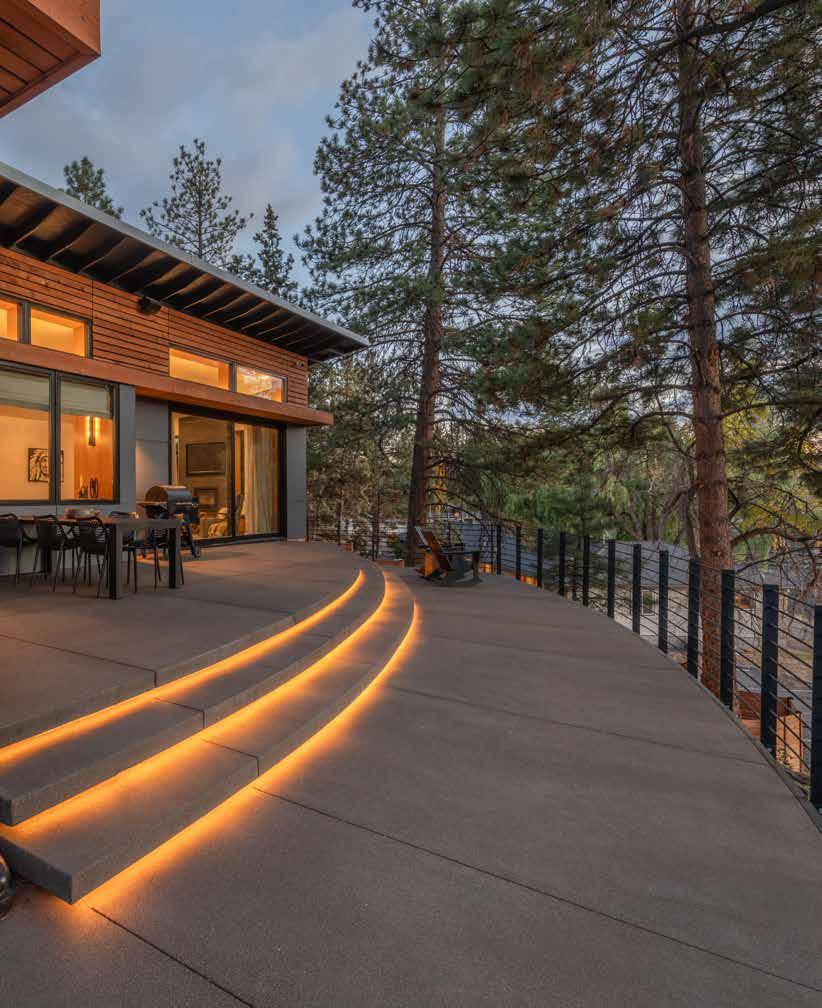
River Sol may be one of the world’s most sustainable homes
WRITTEN
BY
CASEY HATFIELD-CHIOTTI | PHOTOGRAPHY
BY
KAYLA MCKENZIE
Lisa and Scott May were not looking for a transformational building project when they noticed a “For Sale” sign while walking along the Deschutes River Trail one summer day in 2018. On a whim, they walked up the staircase to see what lay on the elevated property above First Street Rapids Park. With towering ponderosa pines and river views, they immediately felt at home on the land.
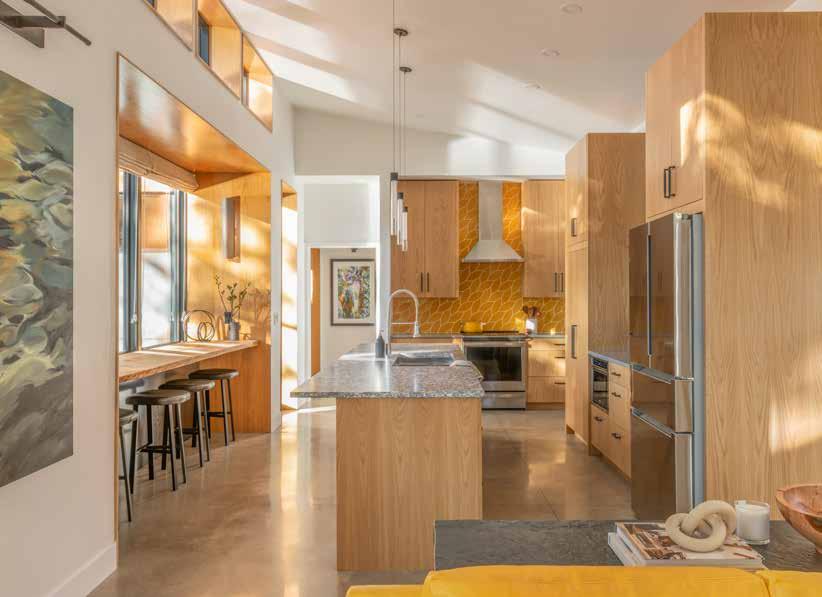
“It had a complete stillness to it, which is nurturing and soothing to the mind, body and spirit,” said Lisa.
They bought the property in March 2019, and the ideas immediately began swirling. The Mays didn’t want to build just any house. Both are deeply committed to sustainability: Scott is a food scientist focusing on regenerative food systems, and Lisa is a leadership coach who helps individuals and organizations unlock potential through science-based technologies. They decided to pursue a LEED-certified building concept and then heard about the International Living Future Institute and the Living Building Challenge (LBC). The “Mount Everest” of sustainable architecture, the LBC is the world’s most rigorous and aspirational green building certification with standards such as generating 105% of the energy used on site.
“There is a reason they call it a challenge,” said Lisa. “There were a lot of big hurdles to overcome throughout the process.”
The greatest was designing a water system that met the LBC criteria to use only captured water and manage wastewater to meet city and DEQ standards, she described.
The home, which they named River Sol, has stylish and functional bioregional modern architecture specifically adapted to help the structure sustain the elements in Bend. The shed roofs collect rain and snow melt, funneling it into a 15,000-gallon cistern—capturing enough water to use throughout the year.
The choice of architects for the project was easy for the Mays in light of their ambitions. They selected architects Al Tozer and Cecile Cuddihy of Tozer Design. Tozer and Cuddihy designed Desert Rain in Bend, the world’s first residential full Living Certified building. The Mays are in the Living Building Challenge “performance period” where they must occupy and monitor key metrics such as energy and water use for a year. They’ll learn if River Sol earns Living Certification by the end of 2025.
From the street, River Sol looks imposing. Creating a tall structure was the only way to position the solar array high enough to reach the sun above the site’s tall trees.
Once inside, the home is warm and inviting. Mimicking a deciduous shade tree, the roof overhangs keep the hot sun from touching the windows or the glass doors in the summer. Natural light filters in from every angle, and operable glass walls and windows let in cool breezes. In the winter, when the sun is lower, light streams inside, warming the concrete slab floors and living spaces.
“River Sol is incredibly well connected to place,” said Tozer. “When you are in the home, you are also outside the home because of the transparency of the walls and that interaction between you and the [outside] environment.”

IT’S LIKE A COZY TREE HOUSE WHERE YOU FEEL IMMEDIATELY CONNECTED TO NATURE AND RELAXED.”
Interior designers Jeannie Legum, Lisa Arballo and Taelor Lang of Legum Design understood the principles of the Living Building Challenge and used biophilic design—a philosophy that connects people to nature in built environments—to carry a sense of place throughout the home’s interior design. The team chose autumnal tones for the kitchen and main living area, which is anchored by a basalt wrapped fireplace at one end of the space that heats the entire home. The golden yellow kitchen backsplash consists of leaf-patterned tile emulating falling leaves. The tile in the primary bathroom shower recalls a pixelated rushing river. The home’s exterior is clad partly in reclaimed cedar planks from trees affected by the 2020 fires near Detroit Lake. In the primary suite, the wood comes from outdoors onto the ceiling inside and continues vertically down the wall behind the bed.
“It’s like a cozy tree house where you feel immediately connected to nature and relaxed,” said Arballo.
TOP:
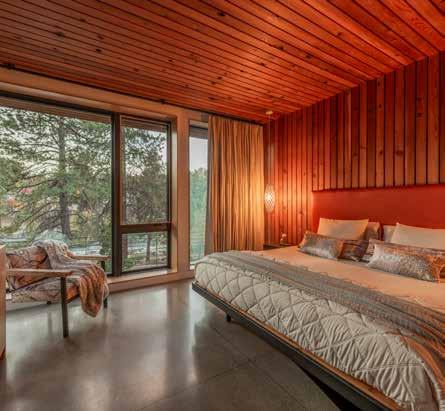
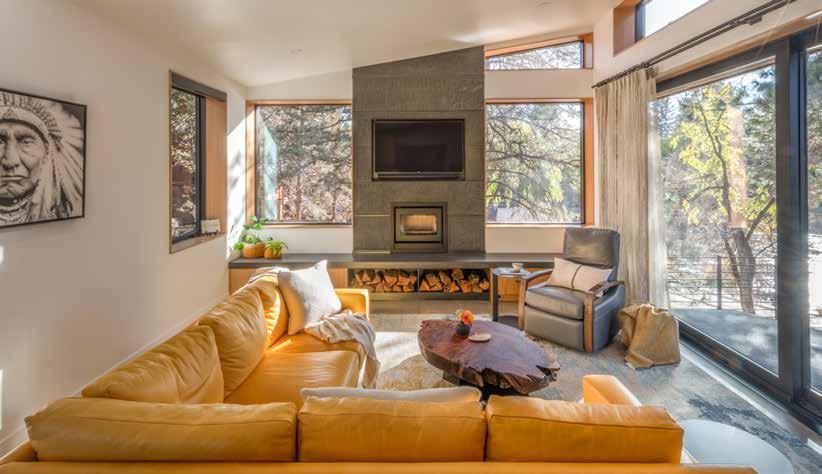
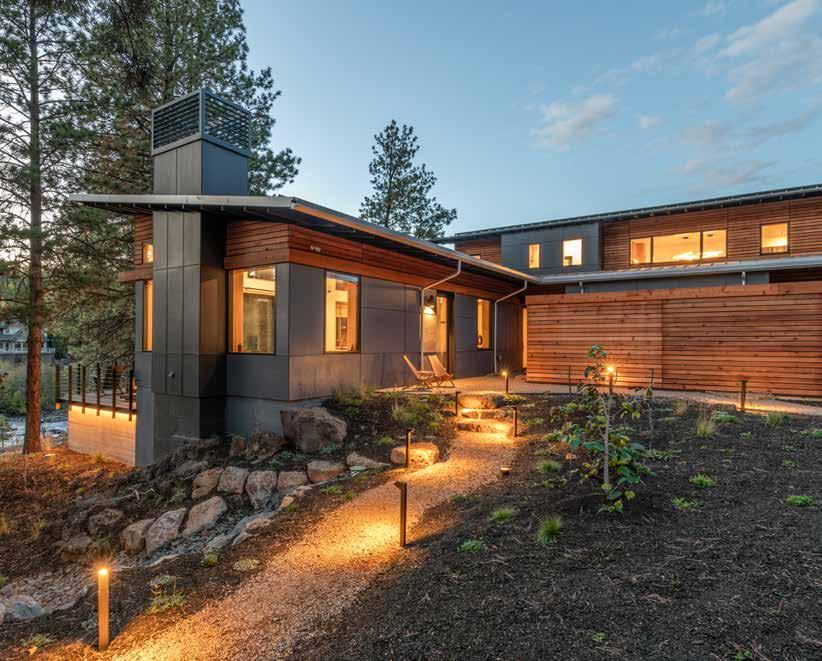
River Sol is made up of two separate dwelling units, and Lisa uses the second unit for her office and retreats. The home’s sweeping patio is tiered like an amphitheater and looks down onto a riparian environment and the First Street Rapids Park.
A showcase for artisans and artists specializing in sustainable furniture and art, every piece in the home tells a story. In the living room, the coffee table is made from a live-edge reclaimed walnut slab. The team from Ecobalanza in Seattle crafted the sectional from organic leather. The bed in the primary suite, a custom design from Modern Honor, features an asymmetrical steel wave base that recalls the river below. A colorful piece of regenerative art by native Bahamian artist Dr. Desiree Cox is not only beautiful; it’s a sensory experience. The viewer sees something new every time they look at the abstract patterns, colors and textures.
Similarly, the home is a living example of how architecture can be beautiful, functional and nourishing.
“This project aligns with everything we believe in,” said Lisa, “and embodies a sustainable way of being.”
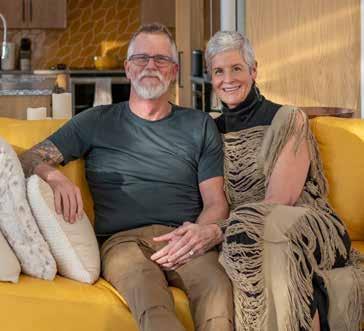
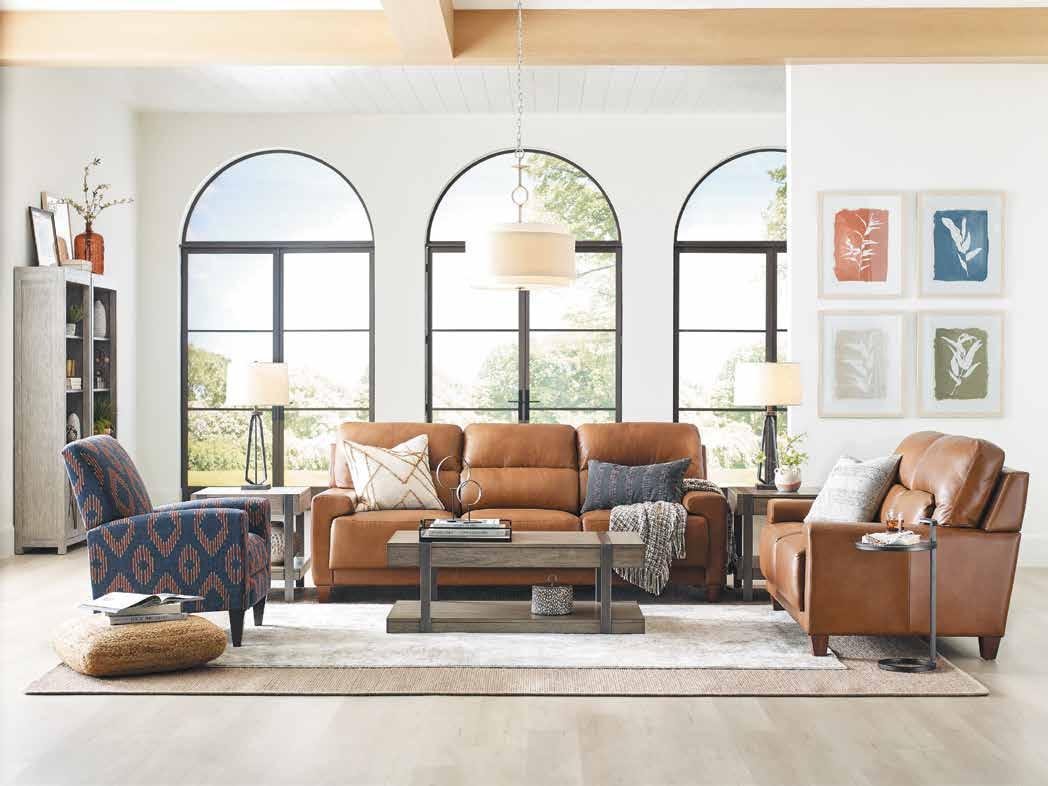
mission to combine ultimate comfort with stylish designs. That’s why we handcraft each piece using only the best materials and meticulous attention to detail. With furniture and decor for every room in the house, La-Z-Boy can create a seamlessly beautiful home.
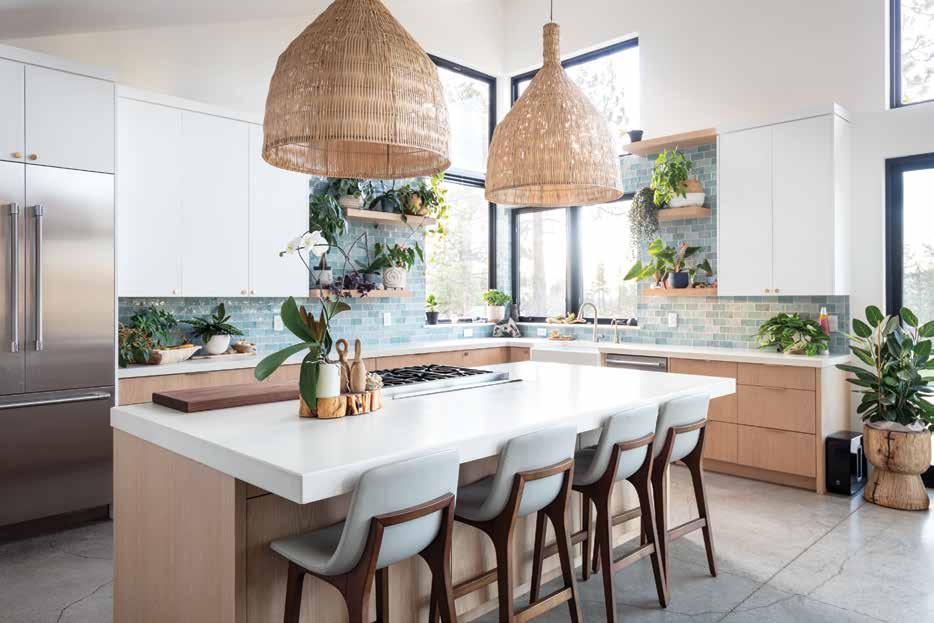
For spaces that work as beautifully as they look.
For spaces that work as beautifully as they look.
Begin your custom home build or remodel journey with us.
Begin your custom home build or remodel journey with us.
@dhbuilder s c o
@dhbuilder s c o
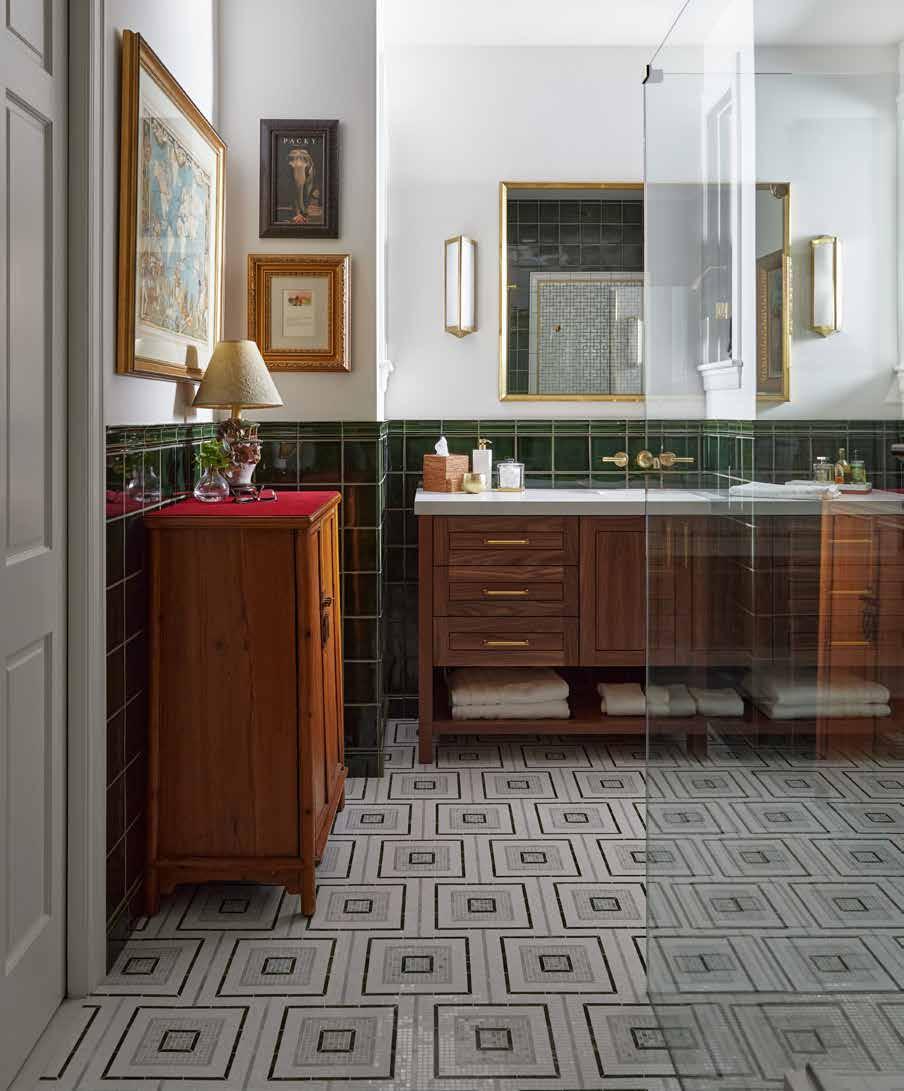
Fashion and interior deisgn intersect with an aesthetic that emphasizes quality, simplicity and elevated basics for timeless appeal. With a focus on craftsmanship, quiet luxury is characterized by soft color palettes, thoughtful accents and nods to history. Here, in the comforts of home, elegance offers refuge from a busy world.

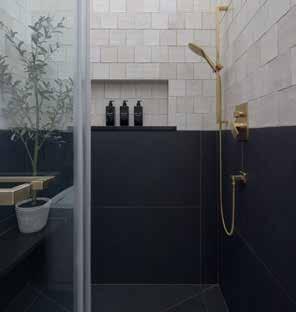


Come discover tens of thousands of books, public meeting and co-working spaces, a hands-on MakerSpace,
vibrant children’s discovery area, and ample seating. Enjoy the fast, free WiFi—or grab a book and check out the views!
Learn more about the Redmond Library and its energy-efficient design at dpl.pub/futureredmond
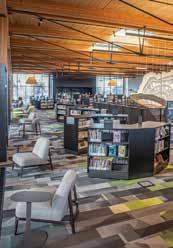
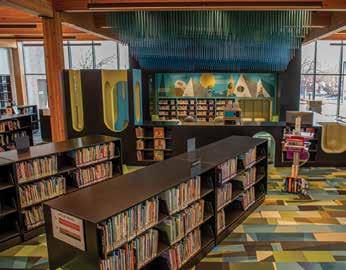
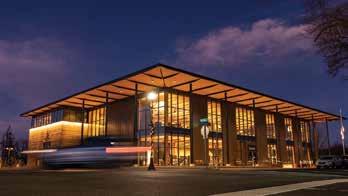
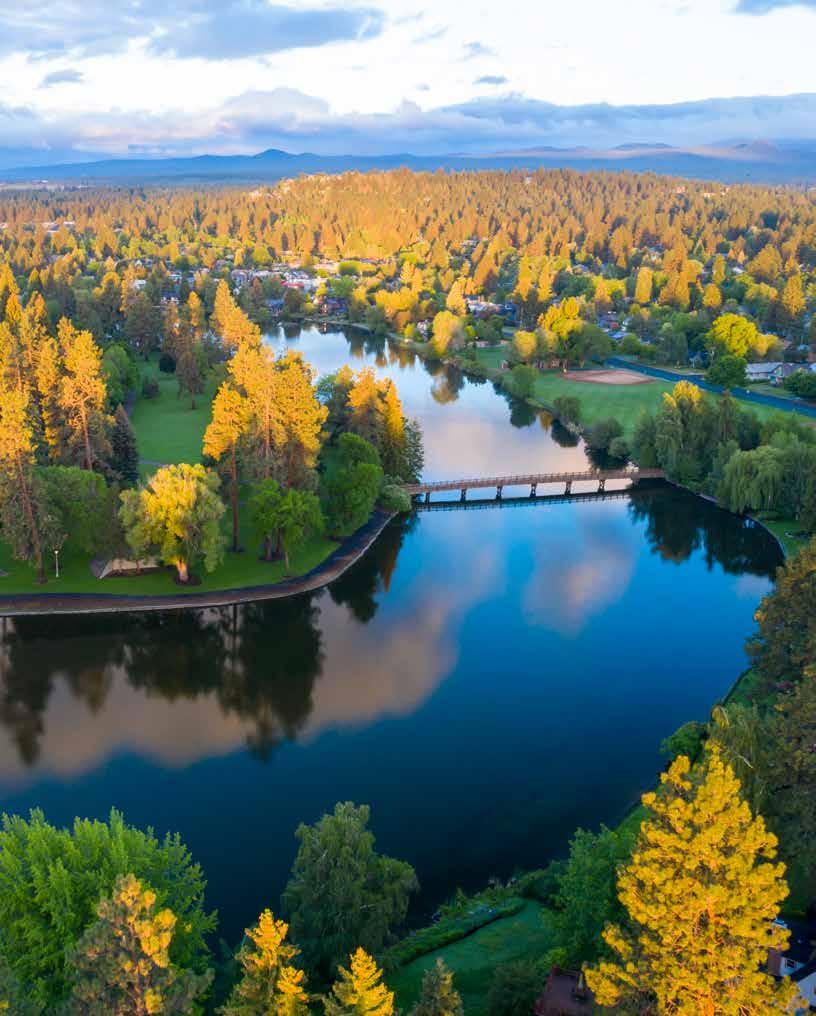
Envisioning Bend as the first nature-positive city
WRITTEN BY ELLEE THALHEIMER
Astrategy is emerging among businesses wanting to improve the state of the world; the term “nature-positive” refers to a global goal, and Bend could be a forerunner to the movement. “Bend has the potential to be the first city to have a systemic approach to mitigating human impacts on nature and climate, an epicenter for nature-positive strategies,” said Tony Hansen of Bend, director of natural capital at management consulting firm McKinsey & Company.
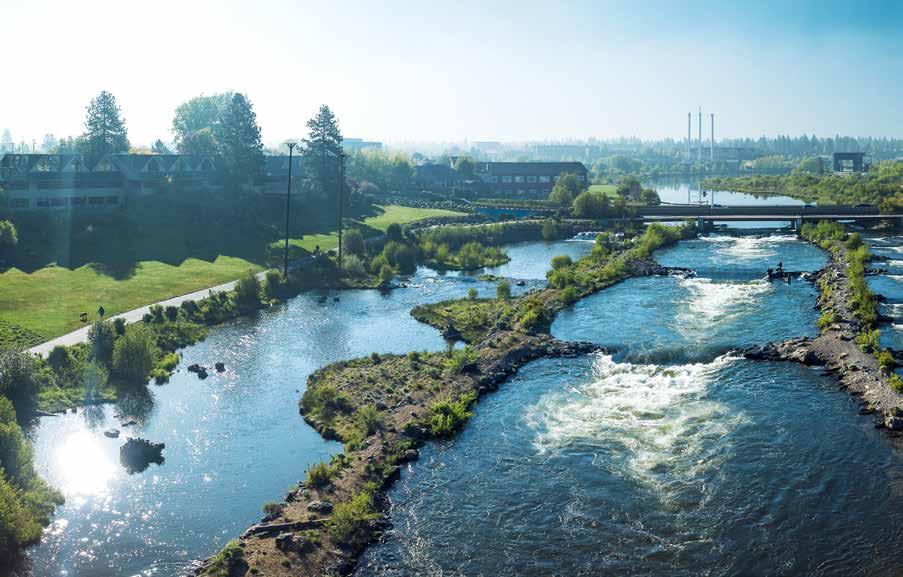
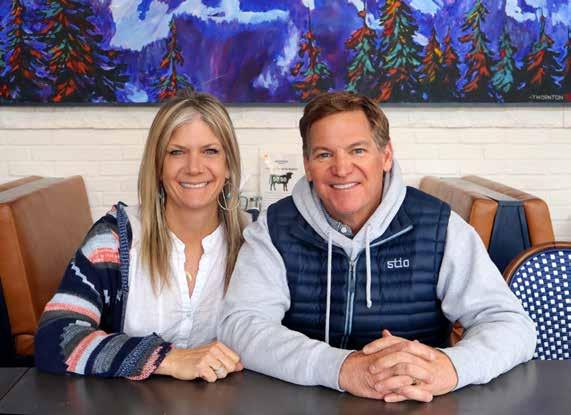
While many climate strategies address the carbon footprint, a nature-positive strategy considers the entire nature footprint. Emissions are one factor, but others include fresh water use, chemical pollution, forest coverage and biodiversity loss from top to bottom of a business’ supply chain. The UN’s Global Biodiversity Framework (GBF)—a pathway to halt and reverse dangerous and detrimental human impacts on nature by 2030—outlines these priorities. Hansen works with corporations and large public bodies to create practical blueprints to enact nature-positive initiatives, and there’s one small business in Central Oregon leading the way. “Mountain Burger represents the possibility of small businesses becoming nature-positive. It’s exciting to see who might follow suit in Bend,” he said. Located in NorthWest Crossing, Mountain Burger is the first in the area to tackle a nature-positive strategy. Local investors and Mountain Burger co-owners
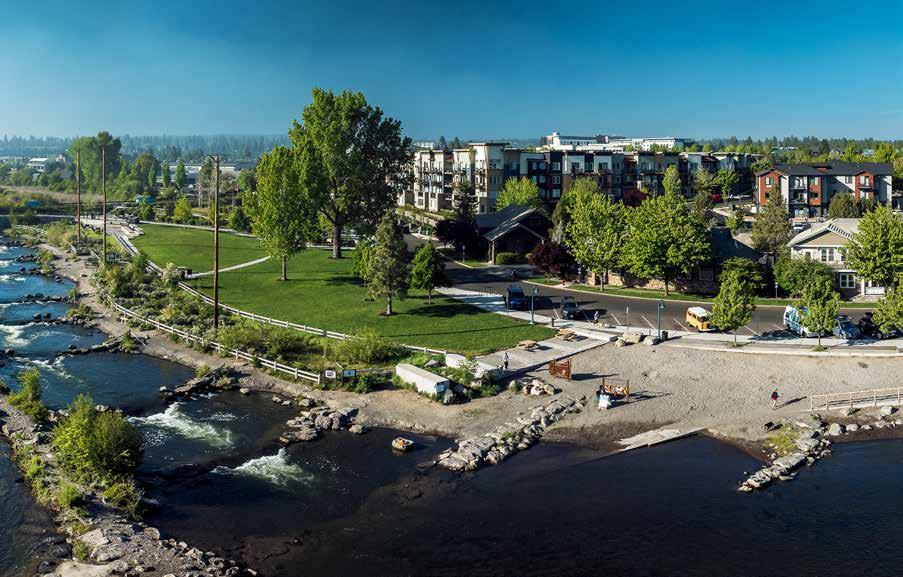
Sara and Dan Hobin wanted to act on the climate crisis, which they see affecting Bend in myriad ways. For instance, the summer wildfire smoke caused a 6% drop in tourism in 2024. “It’s time to think about dependency on natural capital, risk from natural disasters, environmental impact, and what I can do to reduce that impact with my business,” said Dan Hobin, who was previously founder and CEO of Bend software marketing firm G5.
Hobin, who had a climate action plan for Mountain Burger from the beginning, reached out to Hansen to deepen his understanding of how he could enact a nature-positive strategy. Unfortunately, the existing guidance isn’t tailored to small businesses such as Mountain Burger. So Hansen and Hobin brought Tanner Fields into the conversation. Fields, a sustainability consultant based in Bend, scaled the nature-positive model specifically for Mountain Burger.
“For the most part, the model is our brainchild,” said Fields, who once led
sustainability initiatives at Mt. Bachelor Ski Resort. “The nature-positive field is new. We are hoping models become templatable, making nature-positive strategies more accessible and easier to implement for small businesses.”
Fields’ work with Mountain Burger resulted in a 14-page assessment detailing Mountain Burger’s naturerelated dependencies, impacts, risks and opportunities. Mountain Burger had already integrated an electric griddle, LED light bulbs, motion sensor light switches, renewable energy, natural lighting and a composting and recycling program. However, 85% of its impact was from buying beef alone—the cattle industry is one of the most destructive to nature.
That revelation spurred the creation of a 50/50 burger made up of half grass-fed meat from a regenerative farm and half plant-based ingredients, such as onions, mushroom, shallots and nori.
“We are for meat eaters, plant eaters and everything in between. We don’t
Nature-positive strategies protect and mitigate impacts on the environment.
shame people; rather encourage them to consider eating less meat,” said Hobin, who notes that sales of the 50/50 burger are increasing as hoped.
The 50/50 burger is an example of what Hansen would call an opportunity that arises from nature-positive strategies:
“In our framework, there’s both defense (preventing climate fallout) and offense (creating opportunity). Mountain Burger discovered a unique, marketable product in the 50/50. Customers, employees, and investors are increasingly drawn to businesses that have good environmental practices.”
“I want to prove that you can have a sustainable restaurant with a successful business model,” added Hobin.
While other businesses in Bend don’t specifically apply the nature-positive model, some are moving forward robust sustainability initiatives.
Organisms in a single gram of healthy soil of the world’s GDP is “highly or moderately dependent” on nature and its services Hamburgers consumed by Americans each year
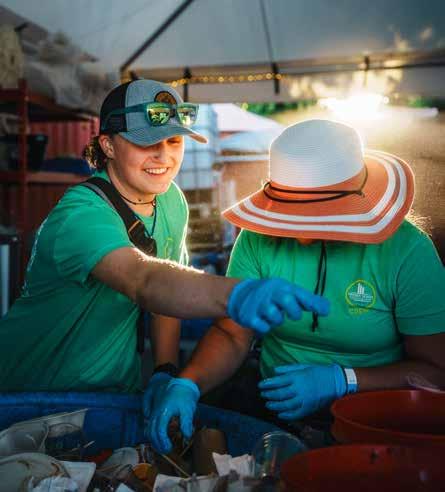
For Hayden Homes Amphitheater in the Old Mill District, it all started when musician Jack Johnson refused to play at venues with single-use water bottles.
“After that, we thought: What else can we do?” said Beau Eastes, marketing director at the Old Mill District. “We started recycling and upcycling more and more items. We take banners from shows that can’t be reused and make them into bags for staff. We collect random screws and nails to be donated.”
During shows, the waste stations—with trash, recycling and compost—are staffed by garbage concierges of sorts, who answer people’s questions about what bin to use. After a show, staff members sort the bins. If they’re attentive, they might find the “Trashy Golden Ticket,” an incentive hidden in one of the receptacles, which they exchange for a prize.
In 2024, the amphitheater’s landfill diversion rate was 87%, or 195,000 pounds of trash. In 2025, it plans to be 90%. This and other initiatives, such as bike parking and compostable tableware, make the amphitheater one of the greenest music venues in the country.
Local breweries are also doing their part. Alongside partnerships with conservation nonprofits, Deschutes Brewery has invested in energy efficient heating, cooling and lighting on its Bend campus. Worthy Brewing’s nonprofit, Worthy Garden Club, advocates for soil health, native pollinators and dark sky conservation.
“A lot of businesses might think there is nothing they can do,” said Fields. “They might be overwhelmed by the crisis. Some aspects of a nature-positive strategy cost money, which can seem like an obstacle. But everybody can do something. Even little [steps] count. It’s important to show up in any way you can.”
See naturepositive.org.

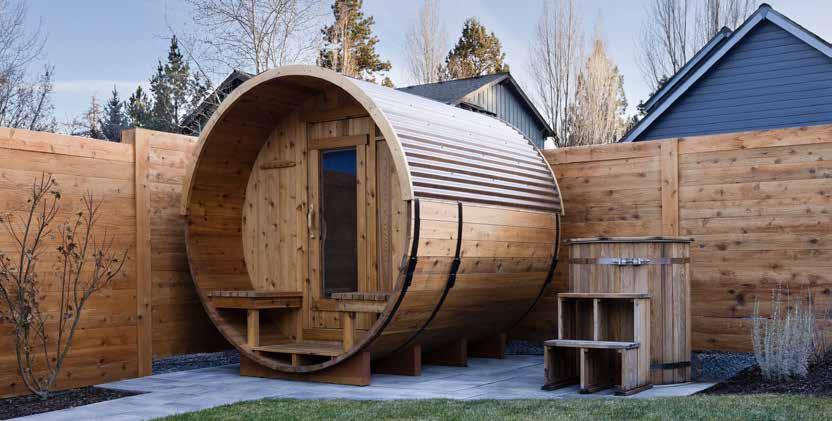

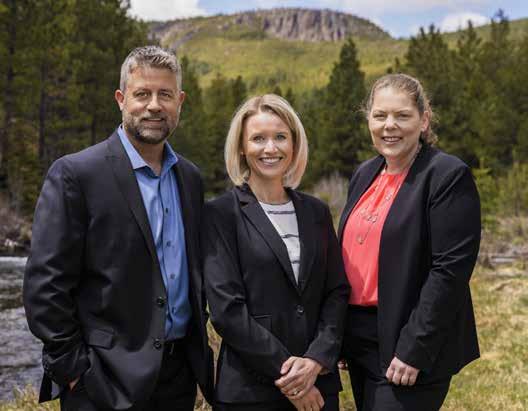

PAUL WALTON
Senior Vice President, Financial Advisor 541-617-6038
Paul.Walton@morganstanley.com
NMLS# 1906183 | Lic.# 4104014
HILLARY BEELKE
First Vice President, Financial Advisor 541-617-6009
Hillary.Beelke@morganstanley.com
NMLS# 1920555 | Lic.# 4008541
LAURA THOMPSON-BALL
Portfolio Associate 541-617-6023
Laura.Thompson-Ball@morganstanley.com
The Tumalo Ridge Group at Morgan Stanley 705 SW Bonnett Way, Suite 1200 | Bend, Oregon 97702 advisor.morganstanley.com/the-tumalo-ridge-group
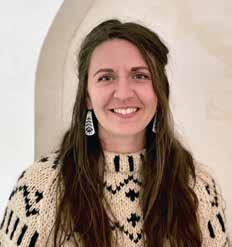
Camp Clay keeps the health of its members and the earth top of mind
A CONVERSATION WITH KATIE HENRY
Walking into Camp Clay, you’ll be greeted by artists working their hands through muddy clay or artfully glazing freshly fired creations. The ceramics studio is a welcoming space—the first of two goals that owner Jess Volk had in mind as she dreamed up the concept for her membership-based workshop. The second goal: To create sustainability in a craft that can create a large amount of waste. The result is a gorgeous and welcoming studio made for all, from first-time students and novice creatives to professional ceramicists, all with a keen eye on how to reduce the carbon footprint of clay work being fabricated. From reusing materials to understanding how slowing down the process reduces waste, Volk’s thoughtfulness to detail is clear. Bend Magazine visited the studio to learn more about Volk’s mission to keep clean while getting hands dirty.
What inspired you to open a studio focused both on community and the environment?
I wanted to set up a space that would make it easy to recycle and reclaim what we can, in an environment that almost guarantees the best circumstances so there is less waste. While there are a lot of ways to recycle ceramics, there is undoubtedly tons of refuse. Plus, we use water throughout the entire process. Sometimes, even in our best efforts, our work fails in the last firing and it feels like an entire waste of resources. I joke that in ceramics we practice nonattachment, but it is true, there is a lot of failure. It’s part of learning. I just hope to lessen the waste for a medium that I, and others, love so much. It has become clear that now is the time to act; we must do what we can right now to try and save this planet.
What processes do you use to help your sustainable practice?
We use two sinks with dedicated traps, one for clay and one for glaze. We did this with the basic intention of keeping clay and glaze materials from clogging our plumbing; but also I know there is so much energy that goes into mining, refining and distributing these materials that it would be a shame to simply throw them away. We reclaim the contents of the glaze sink trap and turn them into a new glaze.
I also purchased a 50-year-old pugging machine [a mill that mixes and compresses clay to remove air bubbles, which creates a workable product]. I fixed it up and now use the machine to aid in our clay-recycle process. Our reclaimed product is as good as brand “new clay”—new in quotations because much like rocks, clay is very old.
I am also in the process of harnessing the heat of the kilns to be redistributed through the building. Initially, we put the kilns into a room with an exhaust fan so that we didn’t have to breathe
in the fumes when the kilns started to burn off organic materials. The exhaust fans also helped to blow the heat out of the space. In the winter, I’m hoping to add new fans to blow the warm air into the studio after the kilns have burned off organics; they continuously put off heat for another 48 hours which we can use as a heater of sorts.
In what ways do you support the community of artists who enjoy your space?
I designed the space to be able to sustain the amount of members we have at capacity. The studio will never exceed 65 members, even with shared larger studios and a full work-trade program. We have two kilns now, but we have space for four, so it is my priority to be able to sustain these members and students without the work of others suffering. I believe that when members choose to work at Camp, they are entrusting me to have their best interest at heart. It is my commitment to this community and environment to continue to learn how to accomplish this in better ways.
Members can join Camp for a fee, but are there other ways to join?
Yes! We have a work-trade program where members trade helping around the studio in exchange for a full membership and even space to store their materials and works in progress.
The studio opened in July 2024 and the gallery in November. Are there any new additions on your horizon?
I am most excited to continue to polish the studio; it was certainly a lot to get everything up and running, and already I am making changes to systems I put in place in the beginning. I am really looking forward to getting my own studio space organized and going. I have so many ideas, and I can’t wait to get my hands back into clay.
See campclay.studio.

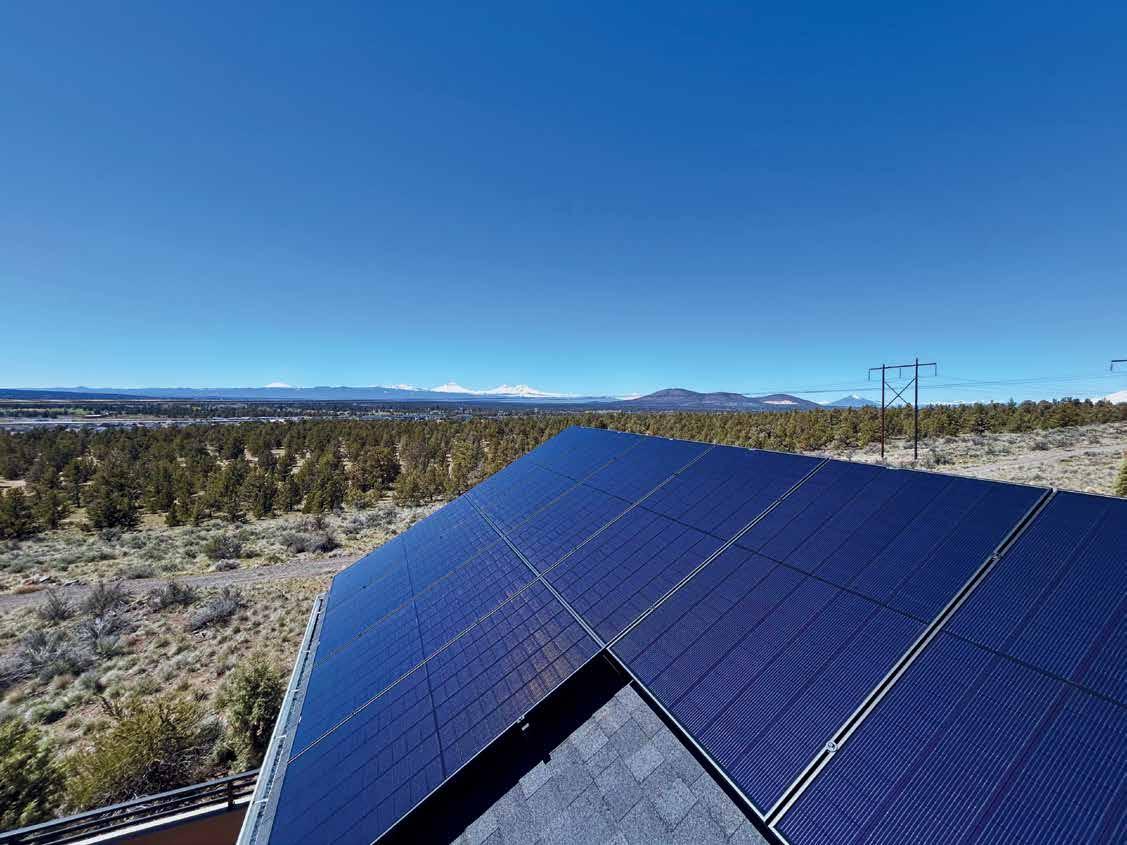




WRITTEN BY CHERYL PARTON
It’s no secret: Central Oregon is for lovers. At first sight, Bend’s cobalt-blue sky, snow-topped peaks and the Deschutes River make hearts skip a beat. Getting to know the area over time, layers of history and adventure reveal themselves and the commitment deepens. At Bend Magazine, we’re lifetime Central Oregon fans, and collectors of experiences. Our combined years of personal exploration give us the cred to share our recurring favorites—Best of Class–plus the lesser-known places we go to keep our relationship to Bend fresh.
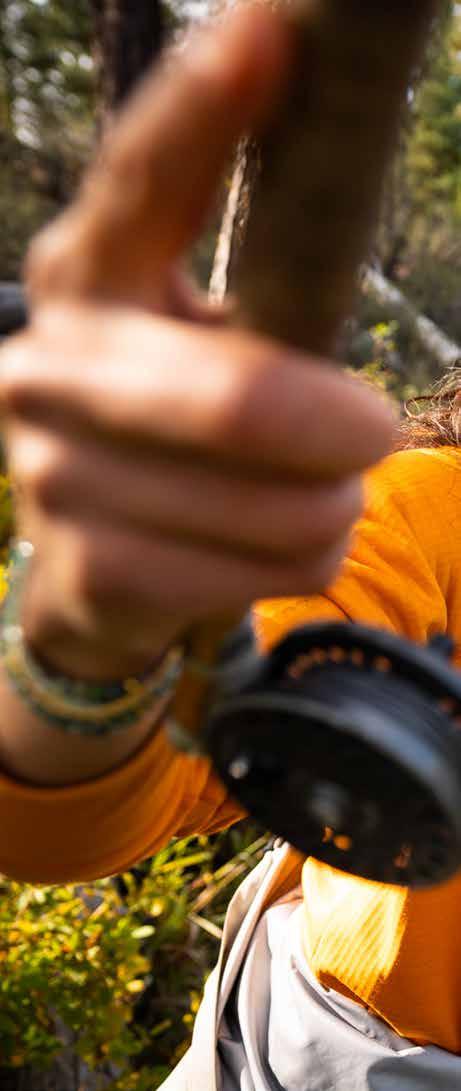
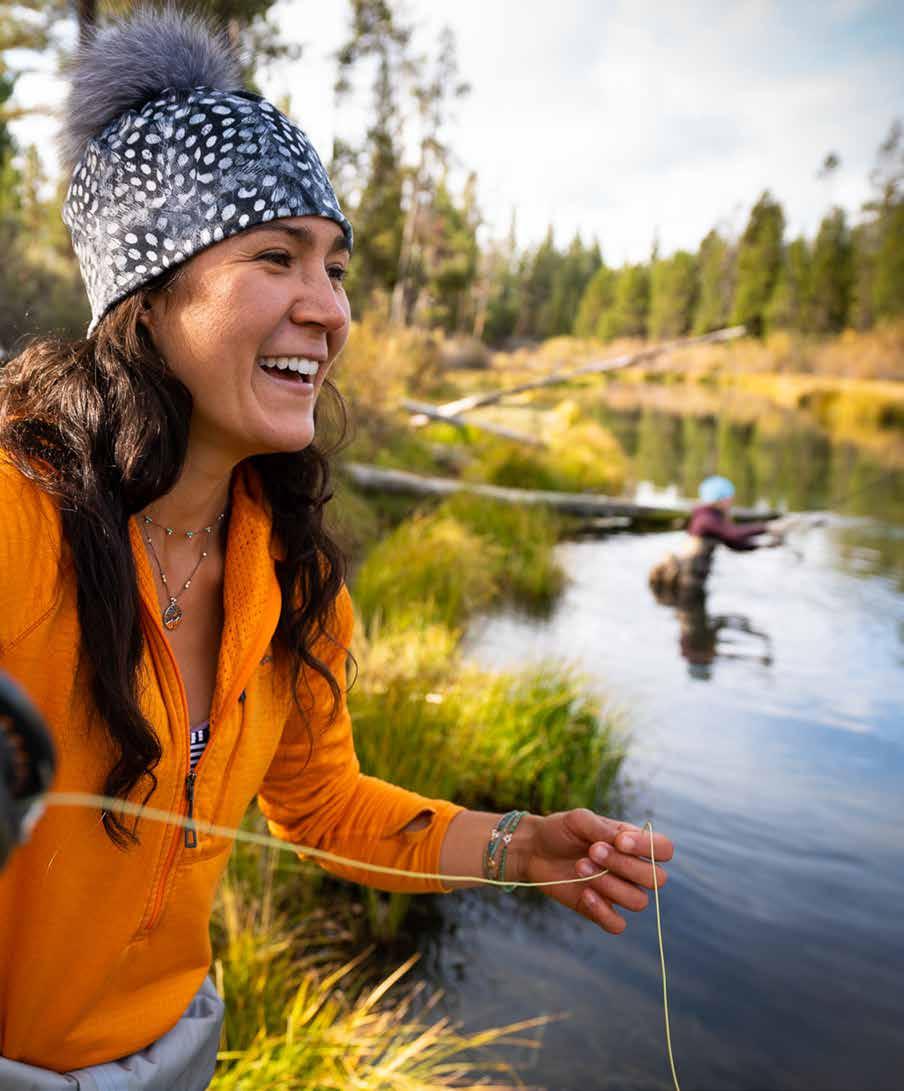
Visit Tumalo Falls in winter. See icicle formations hang from the falls as glacial waters race past snow-covered basalt walls. Be mindful of icy conditions underfoot.
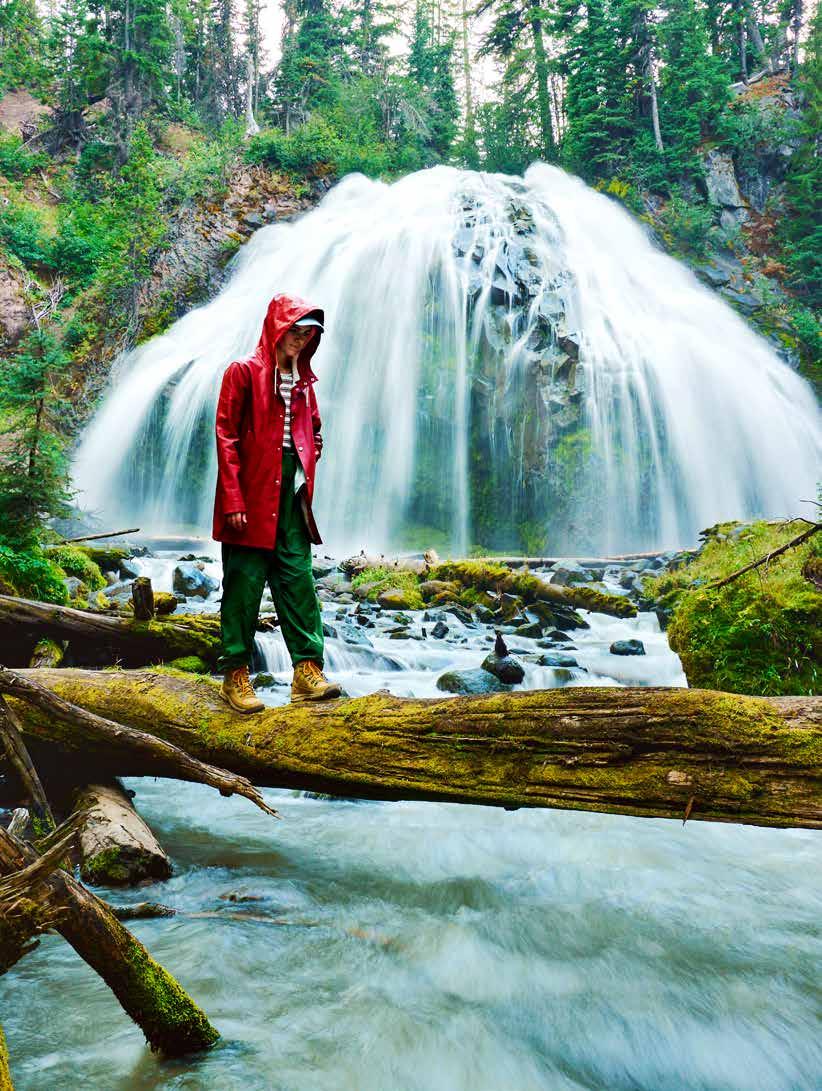
Highly photogenic, and with easy access thanks to the Deschutes Forest Service’s well-maintained trail, the 97-foot-tall Tumalo Falls is a perennial favorite. Finding parking can make it a hike to the trailhead, so we consider that part of the adventure.
It’s a mile hike to the main event, but this Sister’s area waterfall is worth the sometimes-sluething effort to find it. From downtown Sisters, drive 7 miles east on Elm Street and take forest roads to the trailhead. Follow a meandering, oft-ambiguously path to this treasure in the forest.
With its epic base, Bachelor speaks our love language. The earliest opening since ‘88, early ups for pass holders and the pop-up Boneyard Backcountry Bar at Outback Express, the mountain makes us feel like we’re still on a honeymoon.
To be tired of skiing is to be tired of life. Days are extended, and heart rates are elevated by skinning to Pine Marten Lodge. An uphill pass is free, and so are the views. March under Red Chair lift and enjoy time to rehydrate at the lodge before the ski down—a reward of earning your turns.
TIP: Mt. Bachelor offers Play Forever Thursdays: $99 lift tickets through March, with a portion of each ticket sale going to a Central Oregon nonprofit. Talk about local love.
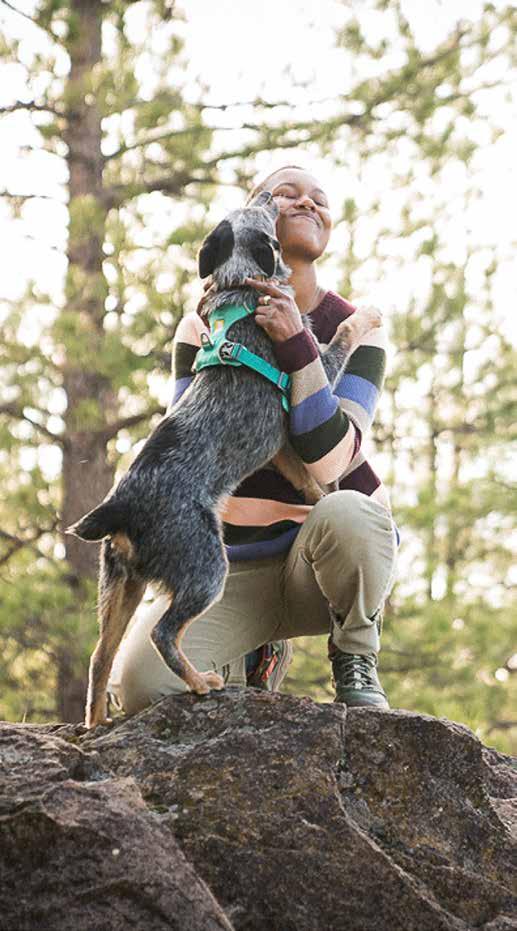
It’s a dream for dogs and humans: 3.5 miles of meandering trails through forest and boulders with a dip into the Deschutes River at the end. Maintained by the nonprofit DogPac, this off-leash area is accessed by River Rim Trailhead. Go ahead, get a little lost, and understand why Bend is considered one of the most dog-friendly cities in the United States.
Explore nine off-leash dog parks in neighborhoods throughout Bend. For fewer crowds, views of the city and woodsy trails close to downtown, try Overturf Butte Reservoir. Alpenglow Community Park, the newest gathering spot, offers Bend’s first agility course and a seasonal hydrant-shaped waterplay feature.
It's been almost 40 years since Deschutes Brewery put Bend on the craft beer map, and 15 since the birth of Boneyard’s RPM—and the treasure hunt to find its OG warehouse “tasting room” off Lake Place. Brewers keep things fresh by embracing Bend’s growing diversity: Boneyard brought us Khu Larb Thai Lager, and Master Brewer Ryan Atagi’s heritage gave Crux its newest flagship beer: Japanese rice lager Bochi Bochi. There’s no IPA in sight at Monkless, where Belgians are bellwethers.
Visit Hungry Hound food truck at On Tap for a Quarter Hounder with Cheese. With a veterinarian-approved, canine-only menu, the food truck and owner Bryan Du Toit are featured in the upcoming season of Amazon Prime’s show, “The Blox.”
Move over your barstool, O’Doul's. In case you haven’t noticed, N/A is here to stay, and flush flavor profiles are available without the ABVs. Black Butte Non-Alcoholic Porter won gold at the 2024 World Beer Cup. Go ahead: Ask out loud for an N/A IPA.
TIP: Mix brews and views of Mirror Pond at Bend Brewing Company. A calendar of free live music rolls out all summer, with periodic winter shows and plenty of space for dancing.
This mountain-biking mecca brought to us by Phil Meglasson and his friends—who built the system starting from deer paths in the ‘80s—has a ride for everyone. From ribbony trails to technical natural ledges, leaps and “Whoops,” riders could make the trailhead a base for a lifetime of MTB adventure and never be bored.
Tiddlywinks debuts two jump sections this spring, newly refreshed and ready to ride after heavy maintenance from Dirt Mechanics and Central Oregon Trail Alliance. From Wanoga, the Tiddlywinks-Funner loop offers a smooth, flow trail plus rocky sections and berms. Parking is plentiful, and dogs are welcome.
There’s no taste like home, and nothing compares to a bite of beignet with honey butter at Pine Tavern, one of Bend’s original restaurants—open since 1936. From classics with a homage to history, such as McKay Cottage, to newcomers such as Hawkeye & Huckleberry with its nod to kitschy cowboy culture, we love the variety of creative restaurateurs in Central Oregon. An array of cultures, flavor profiles and people spice up the culinary scene.
These are communities within communities— bringing food and people together, and don’t forget the beverages. Many of the lots include taps, plentiful tables and events such as live music or trivia nights. In Bend, find The Lot, Midtown Yacht Club, The Office at Silver Moon, On Tap, The Patio at 9th Street Village, The Pine Shed, Podski, Ponch’s and River’s places. In Madras: The Spot; Redmond: General Duffy’s Waterhole and Wild Ride Brewing & Tap Room; Prineville: Corral Tap Room & Food Carts; Sisters: The Barn and in Tumalo: The Bite.
TIP: Find a niche, and go with it. Try Big Ski’s Pierogis, Himalayan Bites or gator tail at Southern Accents. Tots! serves its namesake nuggets more than 30 ways, and at every meal. Craving dessert? Sample Birdsong’s seasonal New Zealand-style fruit ice cream or adult-themed cookies at Kook’i.
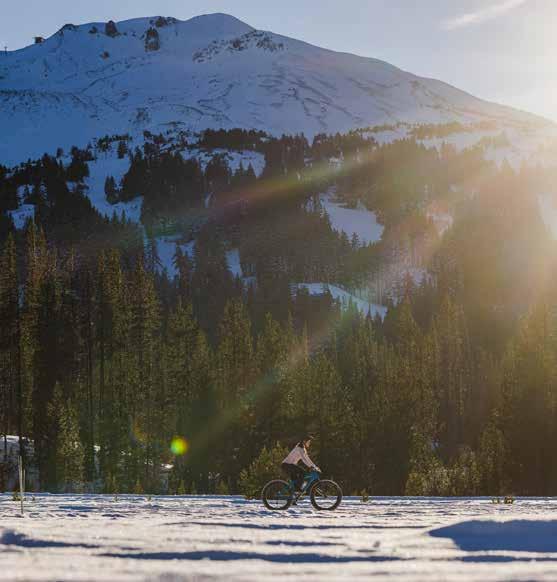
Rent a fat bike in Bend to ride at Wanoga while there’s snow on the ground. After the melt, watch for 20 miles of new trail to be added during summer 2025.
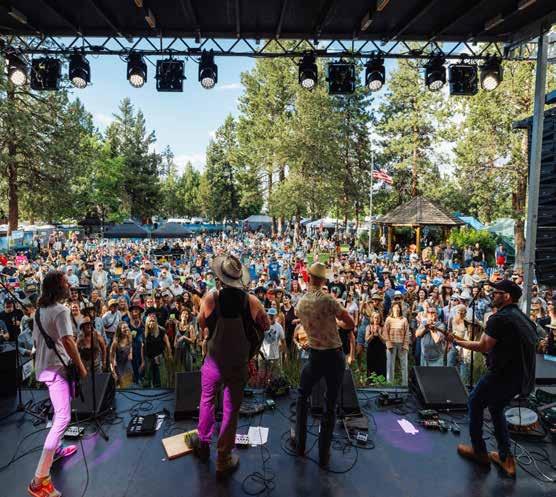
There are about 260 miles of trails in the Three Sisters Wilderness, but the 6-miles roundtrip to No Name Lake is one of the most quintessential Bend hiking experiences. It has expansive views of Mt. Bachelor and Broken Top Crater, a babbling creek and seasonal blooming flowers along a trail full of uphill climbs mixed with flat breaks. At the top, find a surprise: No Name Lake—some say there are no words to describe its beauty. Even without a name, it attracts more than its fair share of attention, which is why securing a permit for the trailhead is like winning the lottery.
From its trailhead outside of Sisters, Tam McArthur Rim hike is a 5.5-mile round-trip climb through alpine terrain that opens up to views of Three Creeks Lake and beyond. For the hardy, continue on to Broken Hand and to the rim above No Name Lake which doubles the mileage but makes for a priceless experience. Permits to Tam McArthur Trailhead are required, but aren’t as competitive to secure as those for Broken Top Trailhead.
One of the first shows that put Bend on a music map, Coldplay took the stage in 2003 to set an auspicious precedent for performances to come. With a stage expansion in 2020 and an idyllic setting along the river for attendees and artists alike, Hayden Homes Amphitheater brings Central Oregon a summer of love—one that returns yearly like your favorite song on repeat.
They may have smaller stages, but big talent shows up in Bend at Commonwealth Pub, Domino Room/Midtown Ballroom, Silver Moon Brewing, Tower Theatre, Volcanic Theater Pub or Father Luke’s Room at McMenamins Old St. Francis School. High Desert Music Hall and General Duffy’s Waterhole in Redmond do plenty of sound checks, as does The Belfry in Sisters. Year-round, Central Oregon is alive with the sound of music.
TIP: For almost 20 years, Bend Roots Revival has celebrated music of Central Oregon artists. Local festivals keep us rooted: 4Peaks, Big Ponderoo, Cascade Equinox, FareWell Festival and Sisters Folk Festival make all of the high desert a stage.
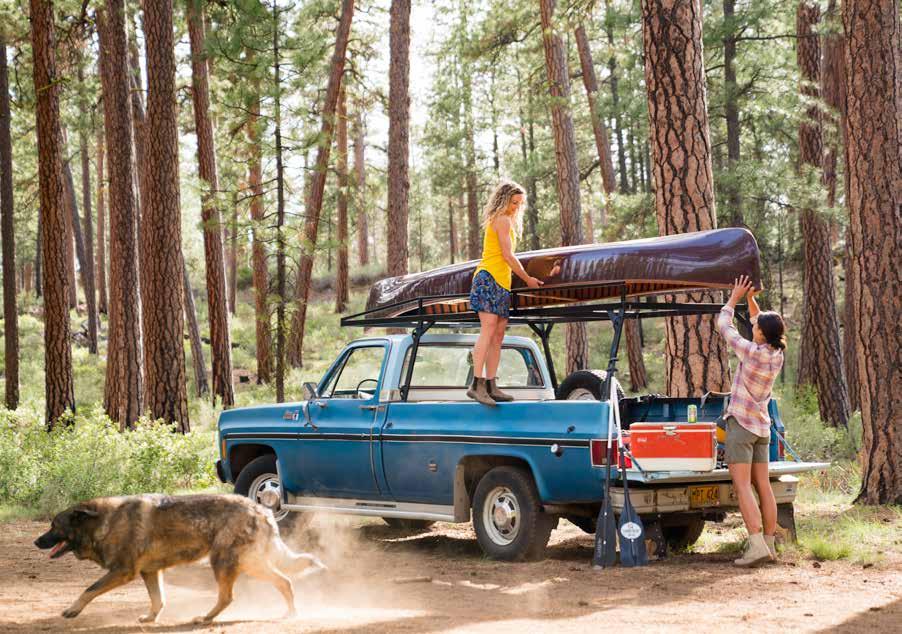
Camp at Three Creek Lake Campground to get an early start at the Tam McArthur Rim trailhead .3 miles away. Waking up at camp gets you closer to a quiet start or for fishing first bite on Three Creek Lake where brook and rainbow trout await.
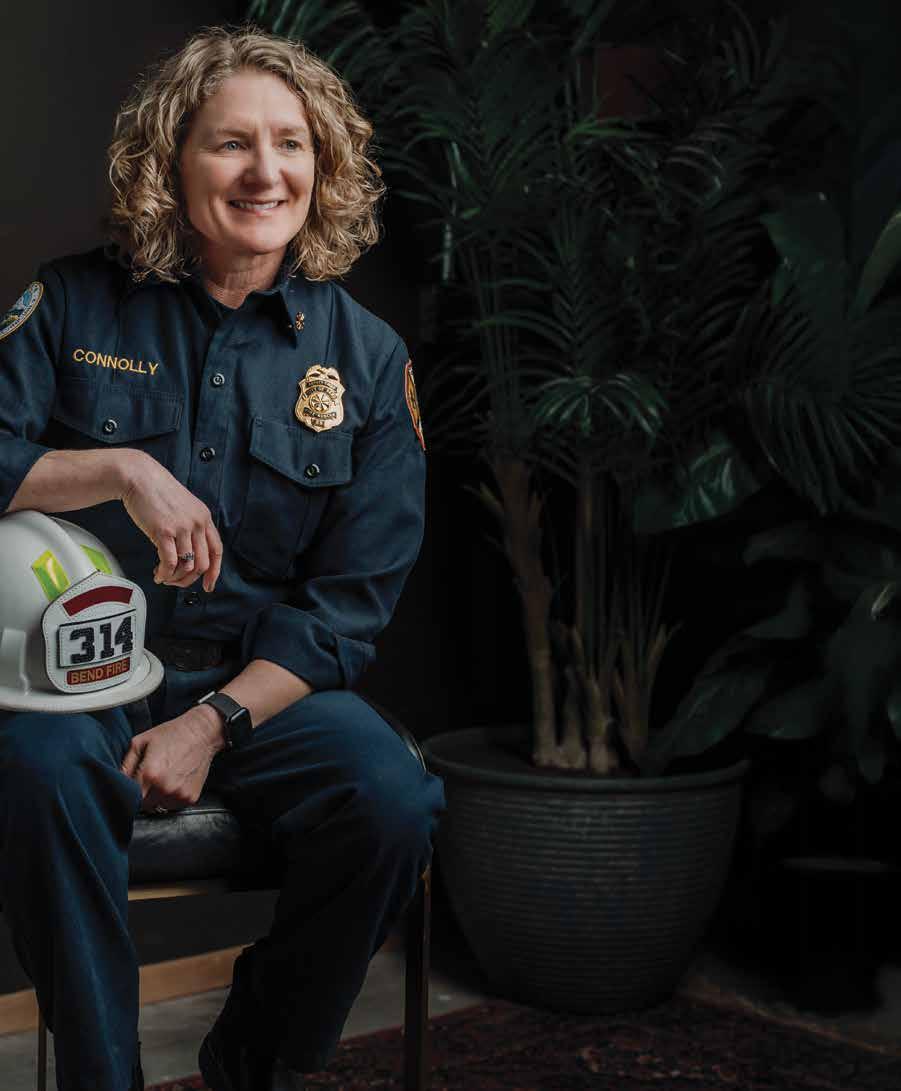
WRITTEN BY SUZANNE JOHNSON
PHOTOGRAPHY BY BENJAMIN EDWARDS
SHOT ON LOCATION AT DOGWOOD AT THE PINE SHED
More than a half century ago, women’s work conjured visions of homemakers in aprons or Rosie the Riveter rolling up her sleeves during wartime. Generations of women have fought to open doors to greater opportunities, and their efforts have paid off. With grit and perseverance, women are thriving in careers once dominated by men. For Women’s History Month, the spotlight is on a sampling of Central Oregon professionals who have broken through stereotypes. These women followed their passions, embraced challenges and have elevated the lives of others along the way.
TRISH CONNOLLY, DEPUTY FIRE CHIEF
“I never intended to be a groundbreaker. I just wanted to do this work,” said Trish Connolly of Bend Fire Department. In 2020, when Connolly was its first female firefighter, only 2% of career firefighters across the country were women. Today, Connolly serves as deputy chief at Bend Fire and Rescue, and her work lifts the department as a whole. “We have such talented, capable people and an open, caring culture. My goal is to help each [person] work to their highest ability,” said Connolly. Women now make up only 5% of firefighters nationwide, and Connolly emphasizes the need for more. “Firefighters need physical fitness, but not brute strength. The great majority of emergency calls are medical, and we need a diverse team of responders who can solve problems in different ways,” she said.
One piece of advice she received early in her career has stayed with her. “My mentor reminded me I was hired as a female, so I should lead as a female. Lead as my authentic self. That helped me step into my role and trust myself. I think that advice is something more women should hear—to not be afraid to lead as a woman.”
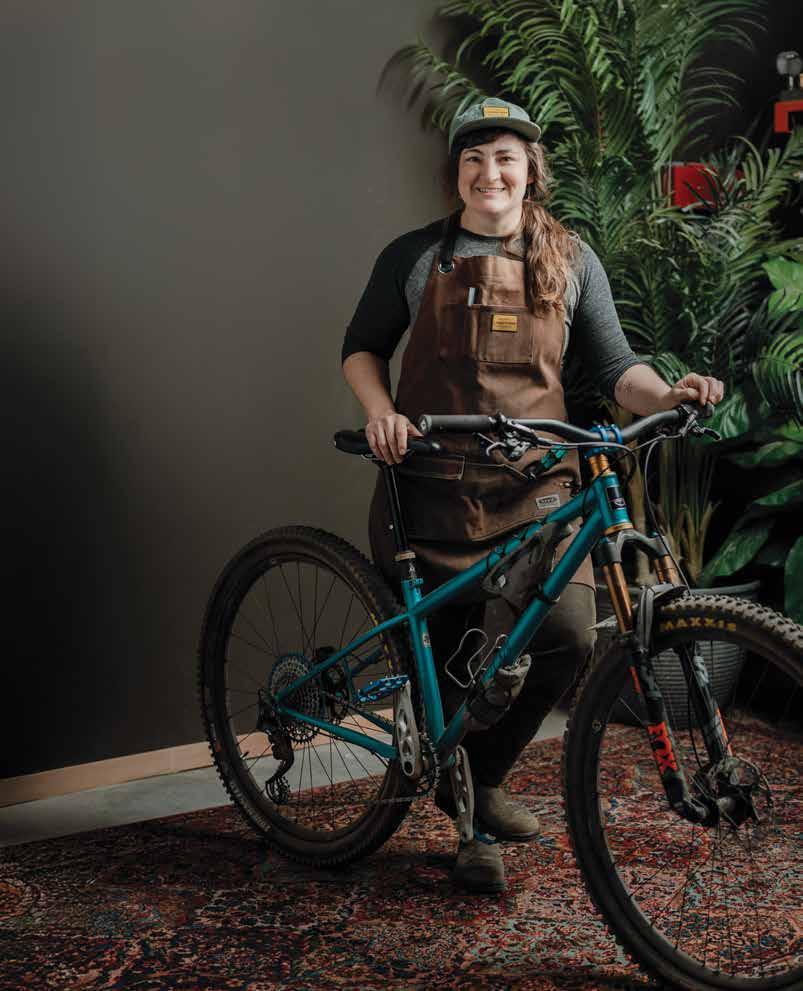
JULIA SPARKS, BIKE GURU
While Bend’s singletrack hums with female bikers, it’s a different story elsewhere. Nationwide, only one in five mountain bikers is a woman, and even fewer work on bikes or in bike shops. For Julia Sparks, a love of adventure biking runs in her family and drives her business, Chariot Bike. Working as a bike mechanic for more than a decade and inspired by her grandmother, who rode across the country in 1948 on a bicycle named Chariot, Sparks launched the Chariot mobile bike repair van in 2020. After five years of growth, Chariot Bike now fills a storefront stocked with gravel and mountain bikes, bike repair stations, bikepacking gear, community event space, and coming soon: a coffee bar. Sparks has kept the space flexible for DIY repair workshops and other gatherings. “Without our Bend community, Chariot would not exist," she said. On her rare days away from work, Sparks follows her grandmother’s example and rides her bike into nature. “Bikes get you outdoors. You forget the rest of the world and recharge,” she said. “I just want more people to get on bikes.”
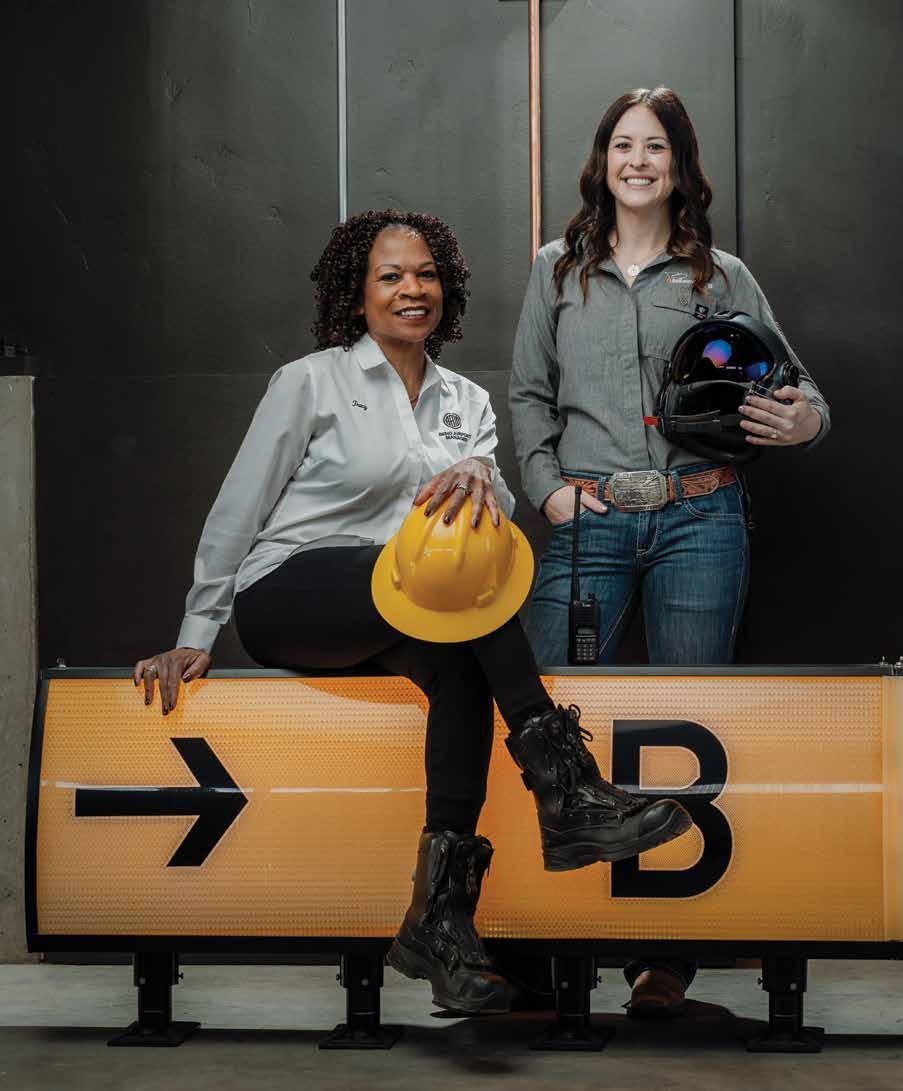
TRACY WILLIAMS, BEND MUNICIPAL AIRPORT MANAGER
Overseeing the action and safety at an airport is a critical part of aviation and requires specific skills, such as an Accredited Aviation Executive (AAE) certification. Only 20% of AAE-certified airport executives are women, and Central Oregon’s Tracy Williams is among them. Williams served eight years on active duty in Air Force Command and Control, tracking aircraft and weapon systems globally. Along the way, she earned undergraduate and graduate degrees in aeronautics, her pilot’s license, and established herself as a leader in airport management.
“I breathe aviation; I thrive on the fast pace. But I was ready for a balanced life. That’s what brought me to Bend,” said Williams. When Williams accepted the Bend Airport manager position in 2020, she set her sights on raising the regional airport to a higher level of safety and technology with the addition of an air traffic control tower. “Years ago, the Bend Airport was a sleepy operation. We’re not sleeping anymore,” said Williams. The airport has approximately 140,000 takeoffs and landings per year as the third busiest airport in Oregon, and the tower is long overdue. Breaking ground in December 2025, the new 115-foot control tower will add a critical layer of safety for pilots, who currently must talk to each other directly. “Guiding this project to completion feels like a capstone. If I could choose a legacy to leave, it’d be this tower.”
The first woman to earn a helicopter pilot license was Ann Shaw Carter, in 1947. Since then, helicopter flying has expanded into many sectors, yet the percentage of female pilots has grown slowly, barely nudging past 10% in 2023. Sami Gotschall,of Bend sees a world of opportunity for more women in aviation.
After completing her training at Leading Edge Aviation in Bend in 2018, Gotschall flew helicopter tours over the Grand Canyon and Hoover Dam and worked as a flight instructor. Then the Camp Fire raged through her childhood hometown of Paradise, California, a disaster that compelled Gotschall to use her skills to fight wildfires. She shifted to aerial firefighting, flying in quick-response firefighters and water buckets in a Bell 407. These days, her work helps prevent wildfires from starting. As a utility flyer, she carries crews and equipment on external long lines into remote areas for power line repairs. It’s precision flying that requires a calm demeanor, persistence and spatial awareness, according to Gotschall. “I stay on high alert because human beings are attached to the line hanging below me. Getting them to the exact spot takes finesse, a soft approach. Using both hands and feet, and sometimes my head is out the window, I consider the weather, the aerodynamics and the mechanics of the load,” she said. “Getting the linemen back safely at the end of the day is the best reward.”
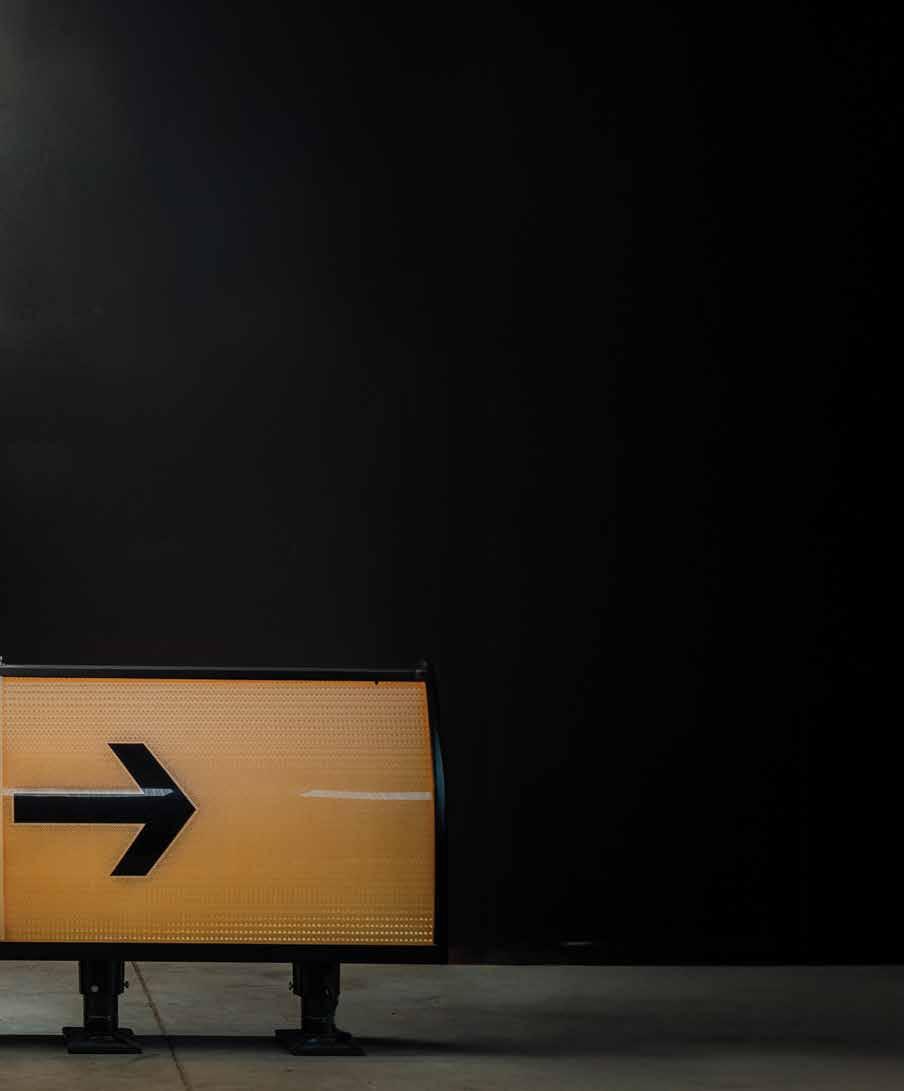
"THERE'S A WORLD OF OPPORTUNITY FOR MORE WOMEN IN AVIATION."
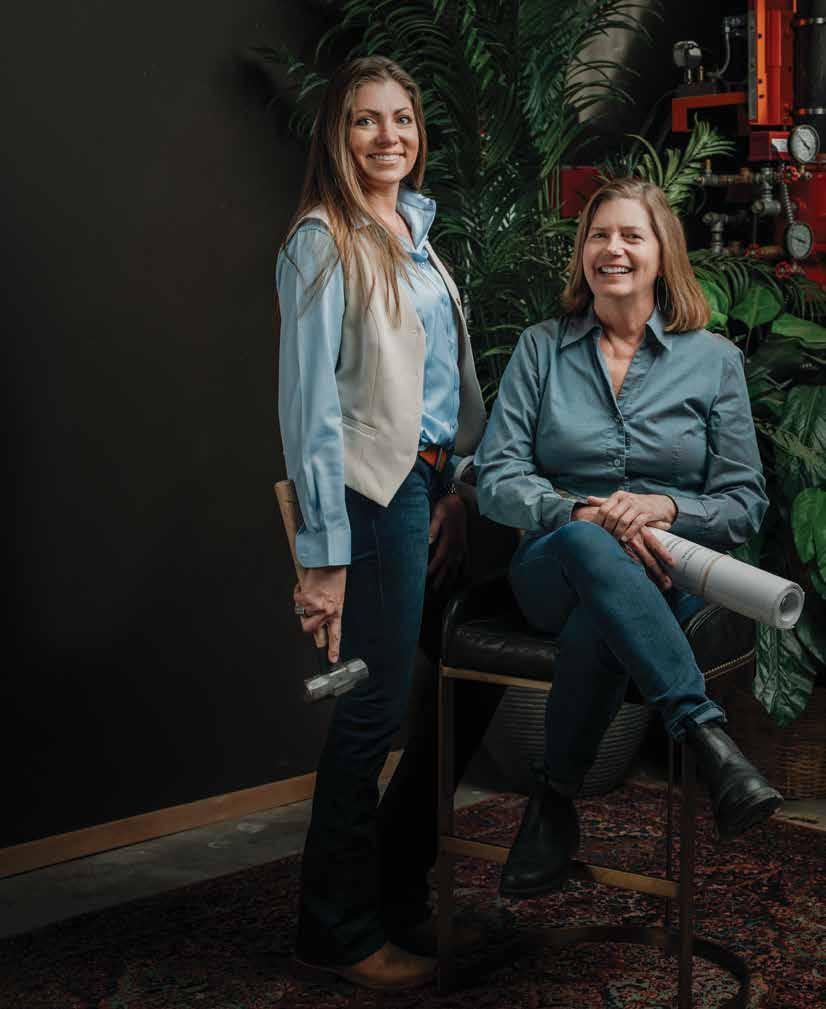
KATIE PENDLETON, HOMEBUILDER & KAREN SMULAND, ARCHITECT
A woman’s place hasn’t traditionally been in building a home. Today, women make up just 10% of the construction workforce, and the numbers are similar for residential contractors. When Katie Pendleton began her career, she knew there could be obstacles, but she didn’t let that hold her back. She gained valuable experience in commercial building, but had a passion for creating beautiful homes. In 2020, Pendleton launched The Fort, her residential construction business.
Working in construction means constant problem solving and collaboration with architects, subcontractors and clients. For Pendleton, that requires strong relationships. “I never take respect or trust for granted; I earn it through my work,” she said. This year, Pendleton will serve as president of the Central Oregon Builders Association. While construction has been slow to open doors, the number of women in architecture has steadily increased in number from 20% in 2000 to nearly half of all new architects in 2023. Architect Karen Smuland appreciates the balance between art and science in the field of architecture. As a registered architect with LEED Accredited Professional certification, Smuland weaves sustainability into her designs. “Most of my clients want a fire-wise approach, and lean toward net-zero energy usage through solar panels and responsible design principles,” she said. Smuland's designs aim to bring the outdoors in, with natural light and intentional views to connect to nature.
Architecture relies on technical knowledge, physics and mathematics, but art is what makes a design special, according to Smuland. “Feeding that creative spark is important, even when other parts of the work try to take over,” she said.
MICHELLE
Craft brewing has long been considered a guy’s world, but kombucha breaks that mold. Industry organizations estimate 40% of kombucha companies today are women-owned with female brewers. Bendites Michelle Mitchell and Jamie Danek brought this trend home when they launched their kombucha company during the worst recession of this century.
In 2008, Mitchell and Danek got together for a glass of Mitchell’s homebrewed kombucha. Inspired by its health-boosting probiotic vitality, they began selling gallon jugs of the bubbly, non-alcoholic brew. They never imagined they’d still be making kombucha 16 years later as a national brand, with 160 employees and in 2024 its 100 millionth bottle rolling across the production line.
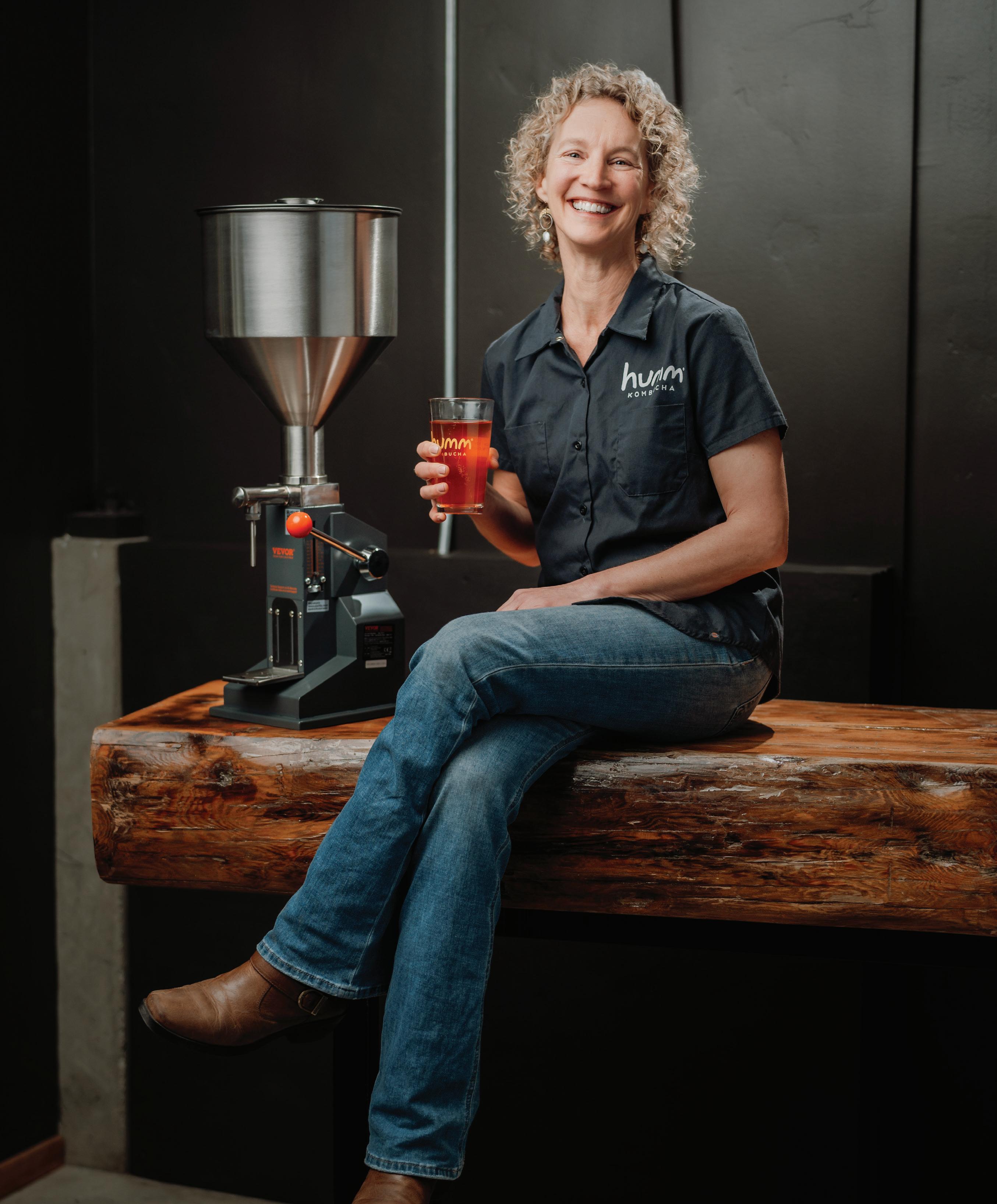
“It’s always been about making people feel great, internally and externally,” said Mitchell. The pair grew from single jugs to a full-scale brewery by holding true to their core values: healthy business, partnership, quality and optimism. That translates to fastidious quality control, responsible fiscal planning, and building a team that feels like family, according to Mitchell.
As Chief Culture Angel, her unofficial title, Mitchell is responsible for worksite culture and community engagement.
“We rely on both hard science and what I call heart science, meaning intuition and creativity to solve problems,” said Mitchell. “And, we have an amazing brewing community in Bend that helped us every step of the way.”
For aspiring entrepreneurs and brewers, Mitchell has some advice. “Ask tons of questions. Gather information. Reach out to collaborate, but trust your gut to bring your idea to light.”
RUNNERS TAKE IT STEP BY STEP TO CROSS A FINISH LINE AT 26.2 MILES
WRITTEN BY LEE LEWIS HUSK
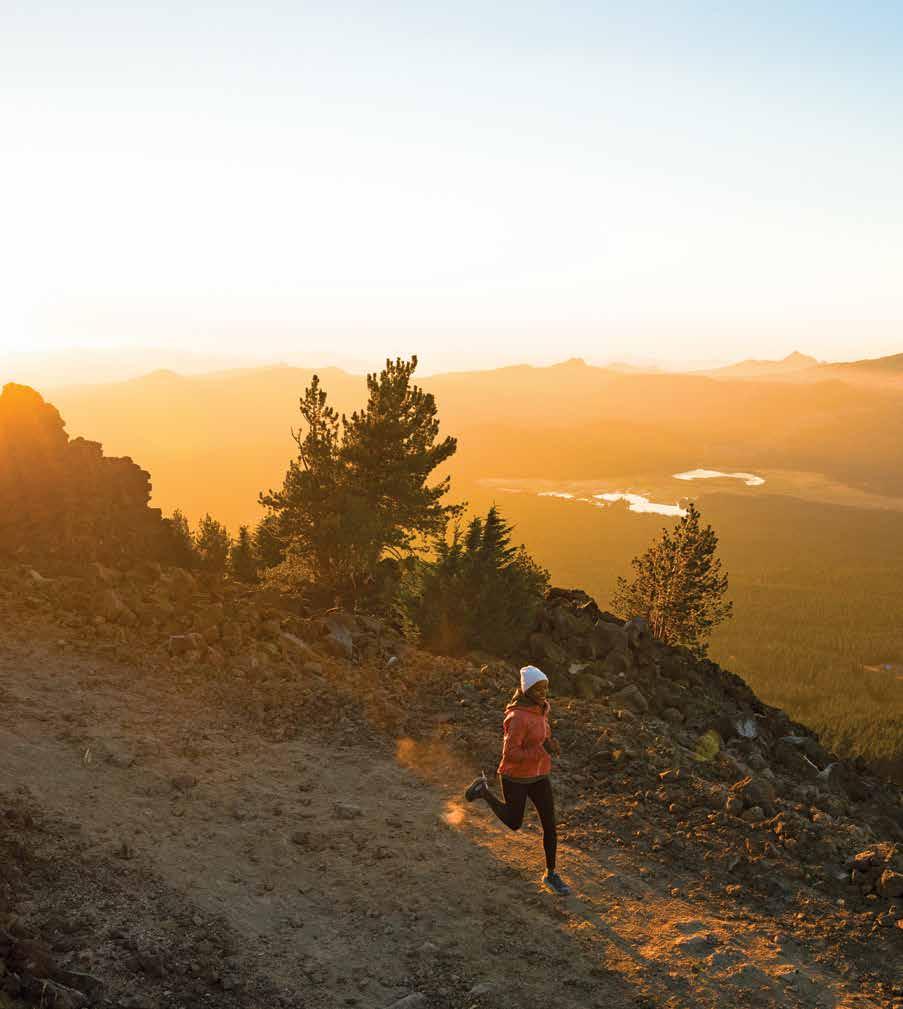
BY
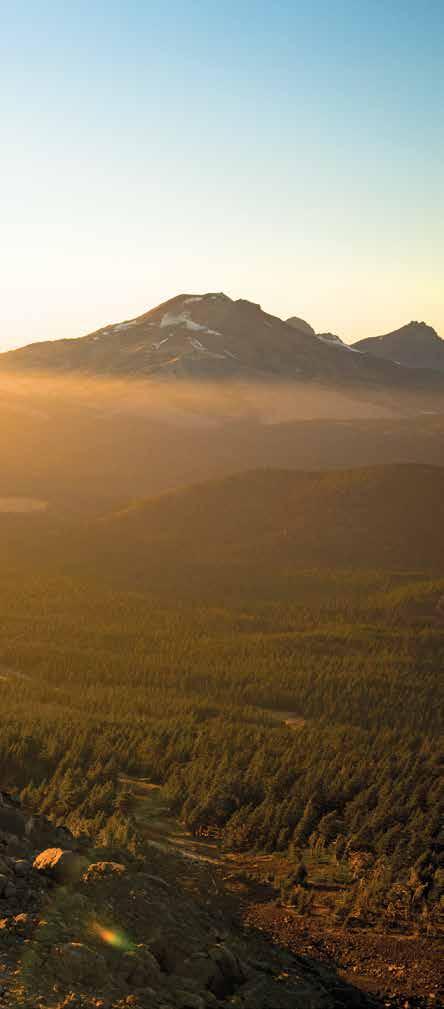
f finishing a marathon is just putting one foot in front of the other roughly 55,000 times, why don’t more people do it? Fewer than 1% of Americans ever will. Standing at the start line of the Berlin Marathon in September 2024, I asked myself the same question.
Despite having run 11 marathons, I’ve battled plantar fasciitis, hip pain requiring cortisone shots and, at 72 years old, a depleted pool of training partners. As I waited for the race to begin, doubt crept in—could I even make it to the finish?
A marathon is so much more than 26.2 miles. To give the distance some respect, it’s like running from southwest Bend to Sisters—not exactly something to attempt without preparation. But where does training even begin?
Fortunately, Oregon is one of the best places in the country to take the first steps. It ranks fourth in marathon participation per capita, trailing only Massachusetts, Colorado and Vermont. As the birthplace of Nike and home to Eugene’s legendary Hayward Field, Oregon boasts a deep running culture, an outdoor fitness ethos and a relatively mild climate—ideal for long-distance training.
Central Oregon has its own bragging rights as a long-distance running hotspot, with three marathons (Bend, Pacific Crest and Haulin’ Aspen), several ultramarathons and dozens of shorterdistance races. Bend-based running coach and competitive ultramarathoner Ian Sharman sums it up: “This is a big running town for long distances and ultramarathon training. It’s easy to get out the door and run trails.”
For Sharman, understanding why someone wants to run a marathon is key to building the right training plan. Are they aiming simply to finish or looking for a scenic race destination like Bend? Do they prefer a hilly challenge or a fast, flat course? If they’ve conquered half marathons, are they ready to go farther? Or if they’ve run full marathons before, are they chasing a personal best? Regardless of motivation, he said three to six months is what it takes to be ready on race day.
When it comes to training, few names carry more weight than Hal Higdon, often called the godfather of American running. Author of 36 books, including Marathon: The Ultimate Training Guide, he has completed 111 marathons, with four overall wins and numerous age-group victories. His experience informs his widely used training plans that have helped thousands reach their marathon goals. His 18-week novice program has a 99% finish rate. “It’s very doable,” he said, “and after a runner’s first marathon, we can take them into more advanced training, one that will challenge the best-conditioned runners.”
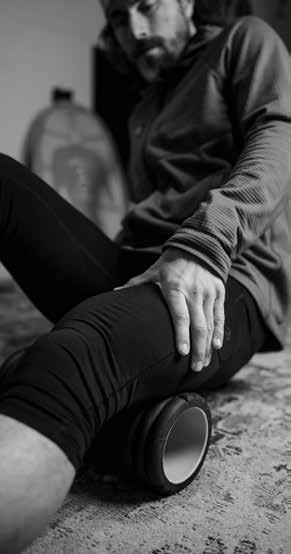

Colton Gale, manager of FootZone Bend and winner of the Oregon Cascades 100-mile ultra this past August in a record 14 hours and 36 minutes, said that Higdon promotes a sensible walkrun strategy that, over time, shortens the amount of walking time and lengthens the running part. “It helps promote endurance, grow stamina and patience,” said Gale.
That aligns with a final piece of advice Higdon shared: “Start slow, which applies to everyone from those who have never run a marathon to experienced runners who want to avoid going too fast in the first two miles—they can pick up the pace later. It’s an easy approach that will help anyone get to the finish line.”
Local runners have plenty of support. Summit High School crosscountry head coach and Bend Marathon co-race director Kari Strang highlights Central Oregon’s many coaching options, from professional trainers such as Sharman who offer individualized custom plans, to group runs with the Central Oregon Running Klub, FootZone and others. “A running buddy or group makes training fun and motivating, and keeps you accountable,” Strang said. She emphasizes consistency over hard workouts where a runner can’t do anything for days afterward.
A lifelong runner, Strang is passionate about introducing others to the sport and encouraging them to look beyond just logging miles. “People put so much energy into workouts but often overlook the essentials—sleep, nutrition, hydration and crosstraining, like strength work,” she said.
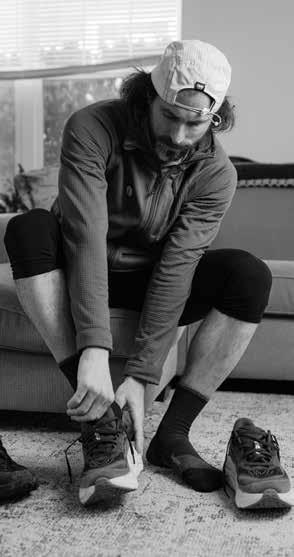
STRETCH: When it comes to training, it’s important to invest time in the essentials, such as stretching, rolling fascia and allowing time for repair between runs.
STRENGTHEN: Nutrition is one of the foundations for healthy running. Fuel and hydrate the body before, during and after training.
STRATIFY: Make sure shoes fit properly and offer any necessary corrective support.
Getting the physical elements right is essential, but many long-distance runners will say the mental part is just as crucial. “We often set limits on ourselves. We’re capable of so much more than that,” said Strang. “Running is a sport that continually pushes you and shows others what you’re made of.”
Ultramarathoner Sharman said that as a coach, he enjoys seeing people who are newer to the sport do something they never thought they could do. “There’s a lot of value in getting into it and embracing the suck. When you’re doing a [longdistance] race, you get exhausted, but it’s a good suffering.”
Marathon participation has surged during the past 25 years, peaking in 2013 with more than half a million United States finishers. Numbers dipped for a few years as half-marathons gained popularity and races were canceled or held virtually during COVID-19. Still, major races such as New York, Boston
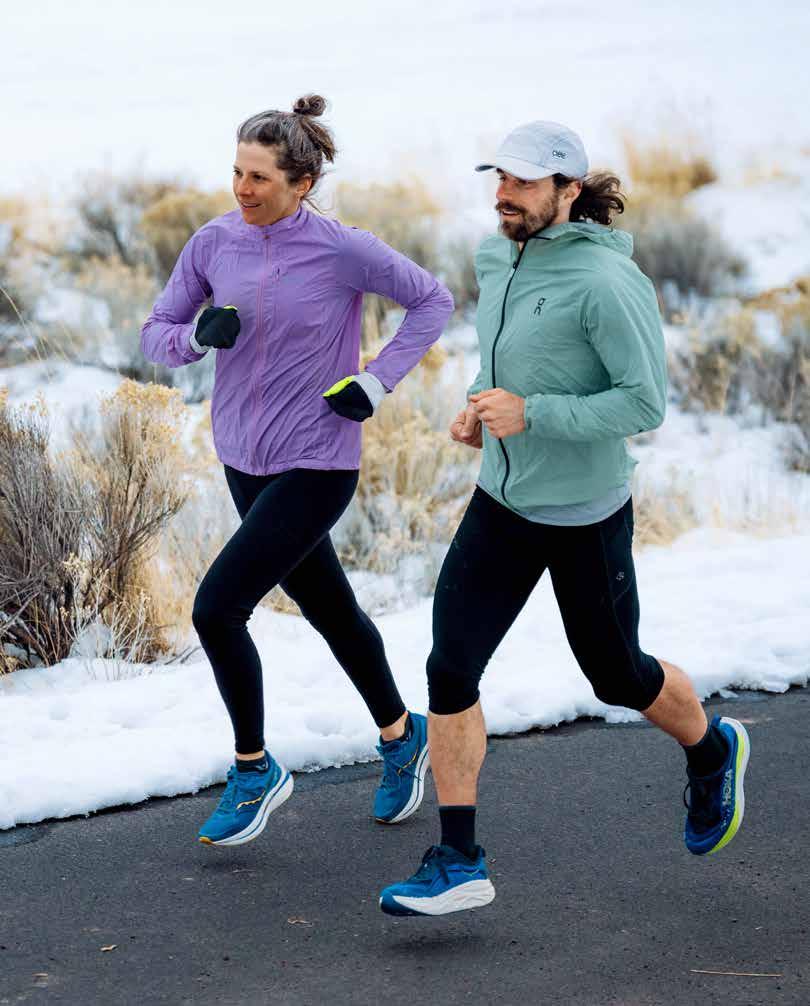
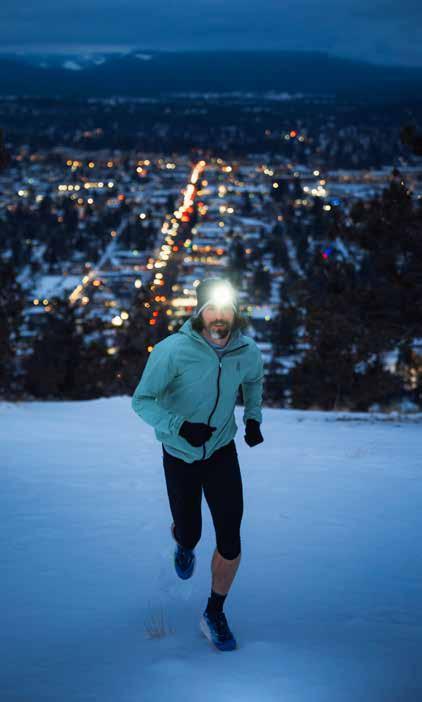
Long-distance running offers many benefits: scenic trails, improved fitness, new friendships and even exotic travel. However, the sport also carries risks, with published studies showing that up to 50% of runners experience lower extremity injuries. Knees are most vulnerable, but issues can arise anywhere from the hips to the feet.
For Bend audiologist Amy Winkler, that risk became a reality after completing dozens of marathons—including the Boston Marathon in 2016— when she was sidelined by persistent heel pain. She underwent surgery in 2020 for Haglund’s deformity, a bony heel growth, and felt
"THE MIRACLE ISN’T THAT I FINISHED. THE MIRACLE IS THAT I HAD THE COURAGE TO START.”
and Chicago marathons now have record applicants. Women make up nearly half of all participants, and the number of runners older than 50 is growing. First-time marathoners account for 40% of finishers, proving that marathons aren’t just for elite Boston qualifiers. In Central Oregon, runners can easily access scenic trails and roads outside their doors to facilitate training. Many will use local half-marathons for training, such as the Salmon Run (April 19, 2025) or Haulin’ Aspen (August 9, 2025). The Bend Marathon (April 13, 2025) is, “an honest course that has some grit to it,” said co-race director Strang. “We don’t have a lot of people calling it easy, but it gives people bragging rights and is always cool.”
As I approached the Brandenburg Gate, I was reminded of what well-known Running World columnist and motivational speaker John Bingham wrote: “The miracle isn’t that I finished. The miracle is that I had the courage to start.” Crossing the line comes down to experience and digging deep, step by step: I was greeted by my family, marathoners themselves, and I embraced my husband, tears streaming down my face with the sheer joy of completing my 12th, and final, marathon.
strong enough in 2022 to enter the Haulin’ Aspen Half Marathon—until the pain returned.
Rob Hollander, an orthopedic physical therapist and cofounder of Alpine Physical Therapy, attributes most running injuries to overuse. “If an athlete loads tissue beyond its ability to adapt—running 25 to 60 miles a week without proper rest—injury is likely,” he said. His advice? “If pain affects your ability to run, scale back. Give your body a break.”
Still, race day is a powerful motivator. “Everyone has a goal, whether it’s finishing in the top 10 or completing a first marathon,” Hollander said. “Crossing that finish line is a rad feeling.”
Winkler shifted gears, turning to gravel biking and HIIT classes. Now, she hopes to run the Eugene Half Marathon this year and gradually build back up to 26.2 miles.
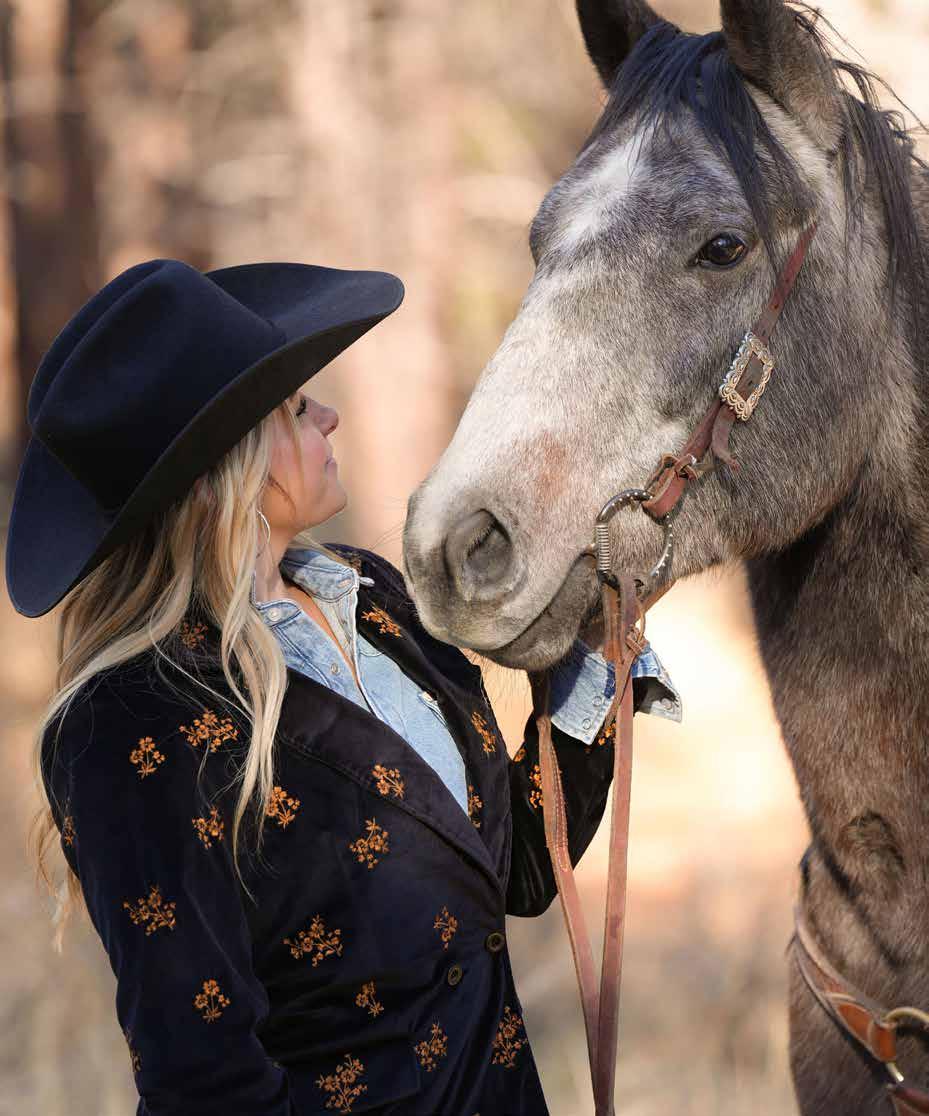
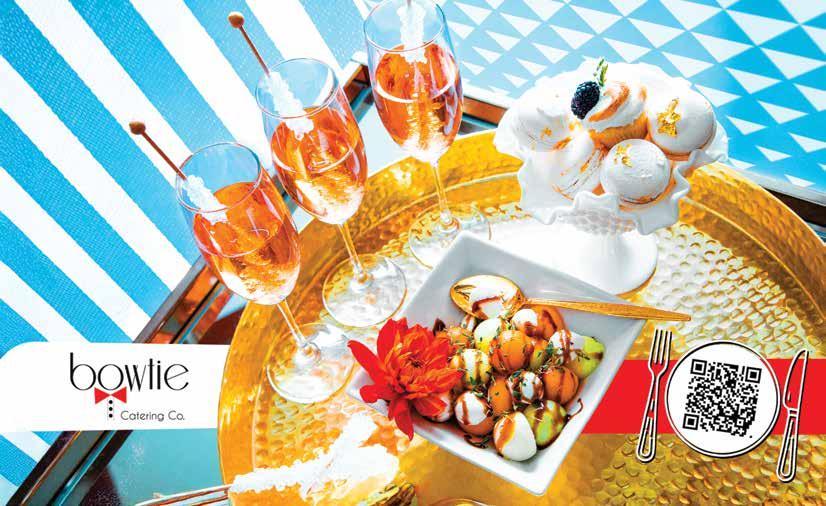


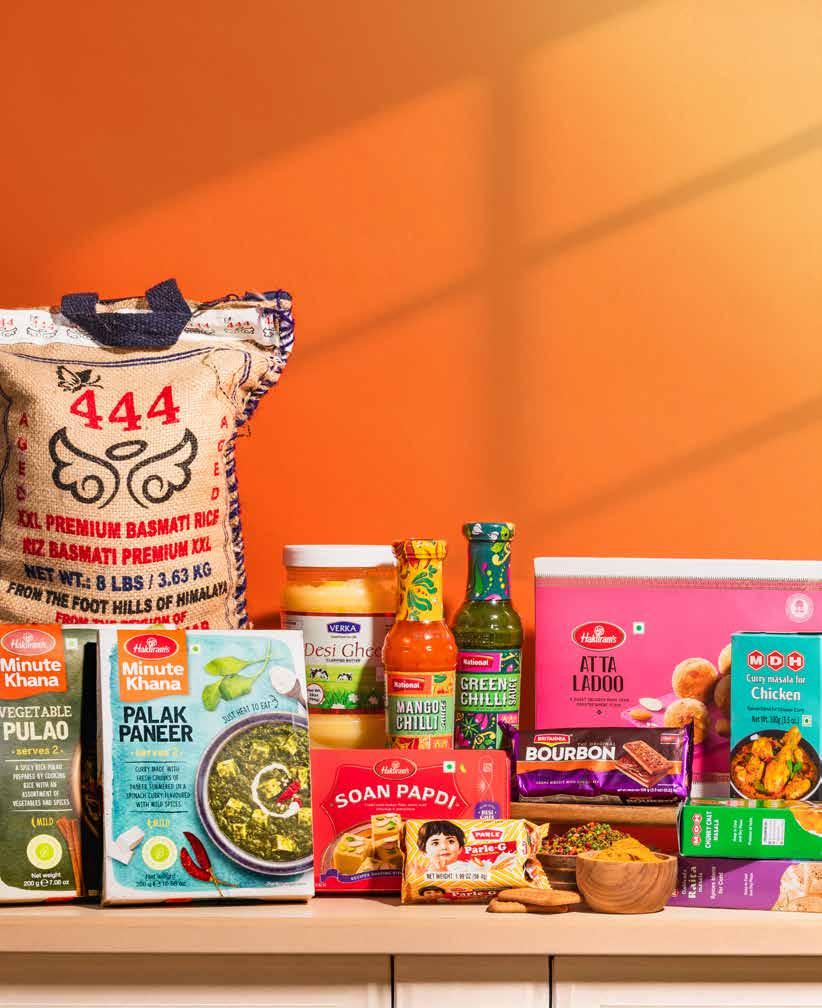
WRITTEN BY MARGOT BIGG
PHOTOGRAPHY BY TINA PAYMASTER
Bend’s Indian eateries will take you on a culinary journey through the subcontinent, from the expansive plains of the North to the sunny tropics of South India. Without leaving Central Oregon, you can try rich curries, hearty flatbreads, fragrant rice dishes and sweet desserts. With a new Indian market in town—the first of its kind in the region—you can even experiment with the rich and varied tastes of India from the comfort of your own kitchen. And contrary to popular belief, Indian food doesn’t have to be spicy. Just ask for the level of heat that suits your palate and dig in.

Located in the parking lot of SE 3rd Street’s Cascade Lodge, Anita’s Kitchen is proof that great things can come in small packages. The food truck opened in July 2021 and quickly gained popularity thanks to a solid menu of rich North Indian homestyle dishes, prepared with love by owner Anita Chopra. Chopra hails from the Punjab region of India—an area known for its rich culinary traditions—and has been passionate about cooking since she was 10 years old. This passion, and her love for feeding others, led Chopra to open the food truck. “It’s the easiest way to connect with customers and give them a taste of my culture,” she said.
The menu at Anita’s features rich North Indian favorites, including dal makhani (black lentils cooked with plenty of butter), palak paneer (spinach and cheese curry) and butter chicken (chicken cooked in a buttery gravy). Chopra also offers a special dish that’s hard to come by outside of India: bhalla papdi chaat. This popular roadside treat—chaat refers to street food snacks in India—features a mélange of spongy lentil fritters and crunchy, cumininfused crisps doused with slightly sweet plain yogurt and topped with a tangy tamarind sauce. The result is a taste-it-to-believe-it mix of textures and flavors that collectively create an adventure in every bite. See anitaskitchenbend.com.

If you’ve had Indian food in Bend during the past two decades, the chances are high it came from Taj Palace, the longest-running Indian restaurant in town. Originally located downtown, the local favorite beckoned hungry guests with its sumptuous buffet. In 2022, Taj Palace moved into a larger space on South Highway 97, and the food remains as flavorful as ever. While most Indian restaurants in the United States—including Taj Palace—serve plenty of North Indian classics such as dal (lentils) and chicken curry, Taj Palace also offers South Indian dishes, an homage to owners Nagendramm and Pullareddy “Reddy” Lakireddy’s southern home state of Andhra Pradesh. Must-try South Indian dishes include idlis —fluffy, spongy rice-and-lentil cakes—and masala dosas‚ ultrathin crepes made of lightly fermented rice-and-flour dough and stuffed with a warming—but not too spicy—mashup of fragranced potatoes and onions. Both idlis and masala dosas are traditionally served with coconut chutney and sambar, a light vegetable and lentil soup. If it’s your first time trying South Indian food, order the Taj Combo and get one masala dosa and two idlis. To sample a little bit of everything, make a beeline to the buffet, which features a changing selection of vegetarian and meat-based curries plus pakoras, rice, naan and sweet treats. See tajpalacebend.us
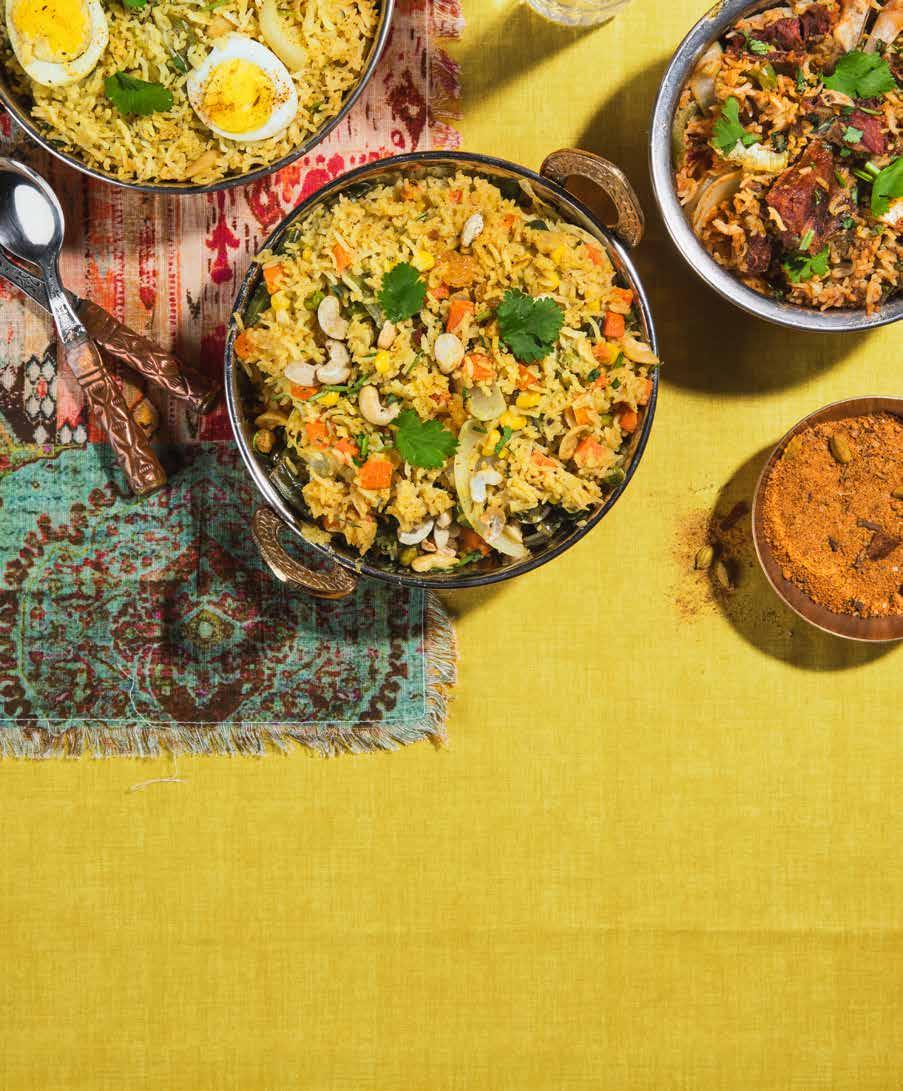
Tucked into what may seem to be an unlikely location within the Shilo Inn on Bend’s north side is the city’s newest Indian restaurant: Real Taste of India. Owners Raja Ram Pundir and Sam Saurabh are cousins from the North Indian state of Haryana who bring years of experience with them, having operated Real Taste of India branches in Roseburg, Medford and Klamath Falls before moving to Bend. Since opening their restaurant in January 2024, they’ve gained a steady customer base, in part because of their massive menu, which features a variety of dishes ranging from shrimp vindaloo to nine types of biriyani, an aromatic rice dish cooked with meat, vegetable or both. However, the hospitality of the owners shines through.
“My father taught us that we’re running this restaurant as a family, so it’s important to treat our customers as family,” said Saurabh. Real Taste of India isn’t just a restaurant, either. In November 2024, the pair opened Central Oregon’s first Indian market. Although it occupies one corner of the restaurant, the shop stocks a serious collection of Indian goodies, including hard-to-find spice mixes. They have plenty of Indian treats, too, including Parle-G cookies, perfect for dunking in tea, and namkeen, a collective term for savory, crunchy snacks made from dried beans, lentils or peas, and flour. Don’t see what you’re after? There’s plenty more inventory in the back, and Saurabh makes weekly trips to Seattle for stock, so just ask. See realtasteofindiabend.com





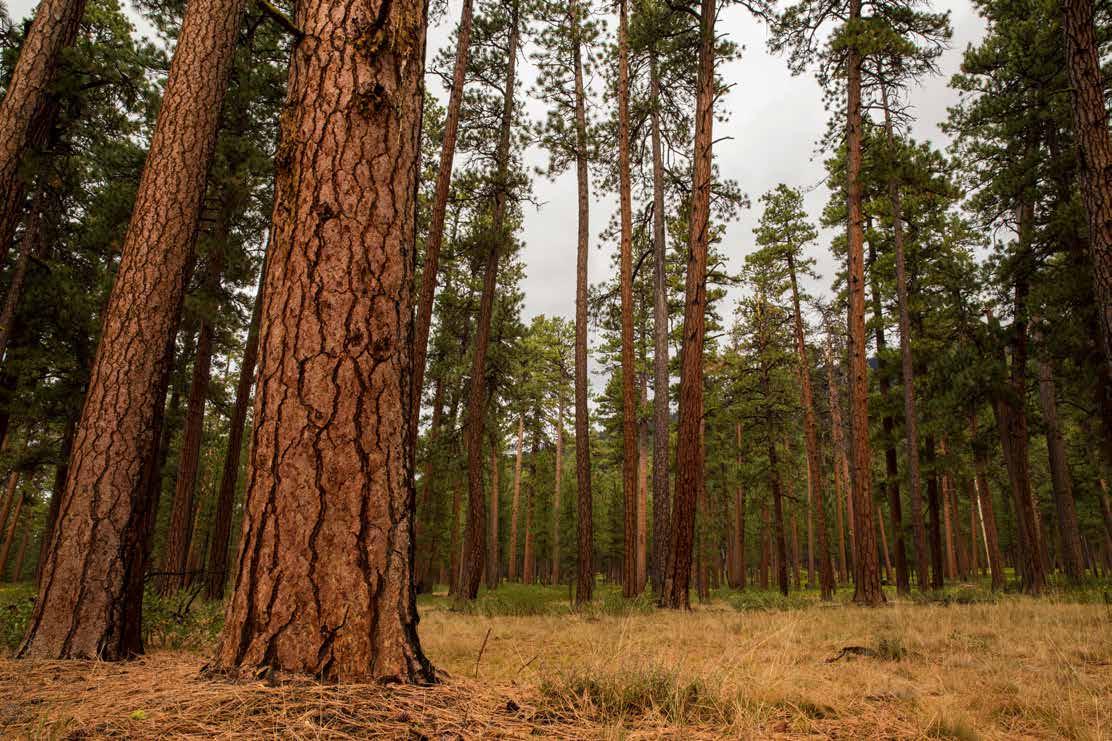
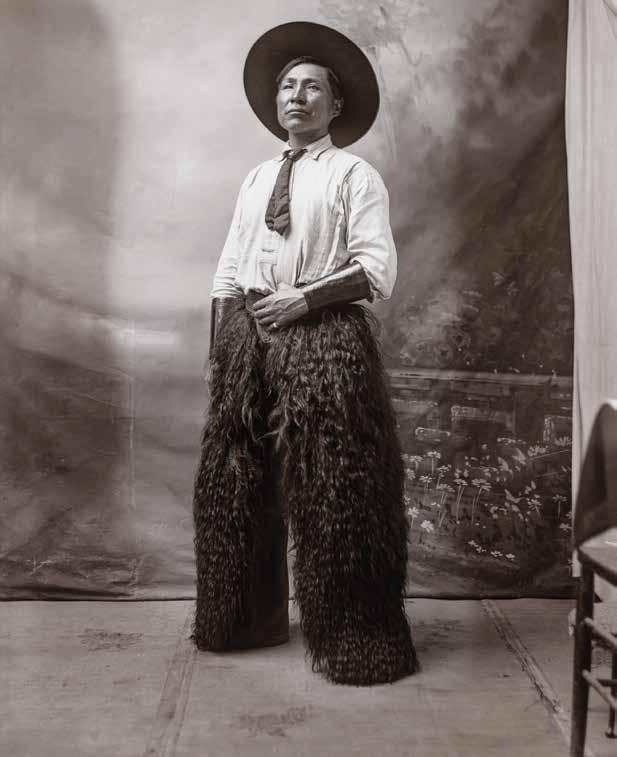
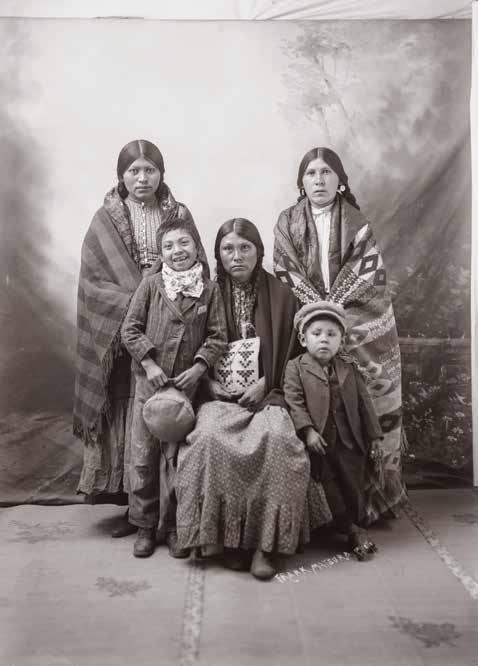

Add an extra zing to your meal with these tasty additions
SAMOSA
A quintessential on-the-go snack, and a popular appetizer at Indian restaurants around the world, samosas are triangular savory pastries that are usually stuffed with a mix of peas and potatoes and then deep fried to crisp-on-the-outside, softon-the-inside perfection.
If you’re a fan of French fries or onion rings, you’re sure to love pakoras, crisp deep-fried fritters breaded with chickpea flour. Spinach, cauliflower and onion pakoras are all popular options—they’re best enjoyed with a piping-hot cup of milky masala chai.
India’s answer to the milkshake, a lassi is a rich, yogurt-based drink that makes a great accompaniment to spicy dishes—the cooling effect of the yogurt balances out fiery flavors. Try a mango lassi, flavored with India’s national fruit.
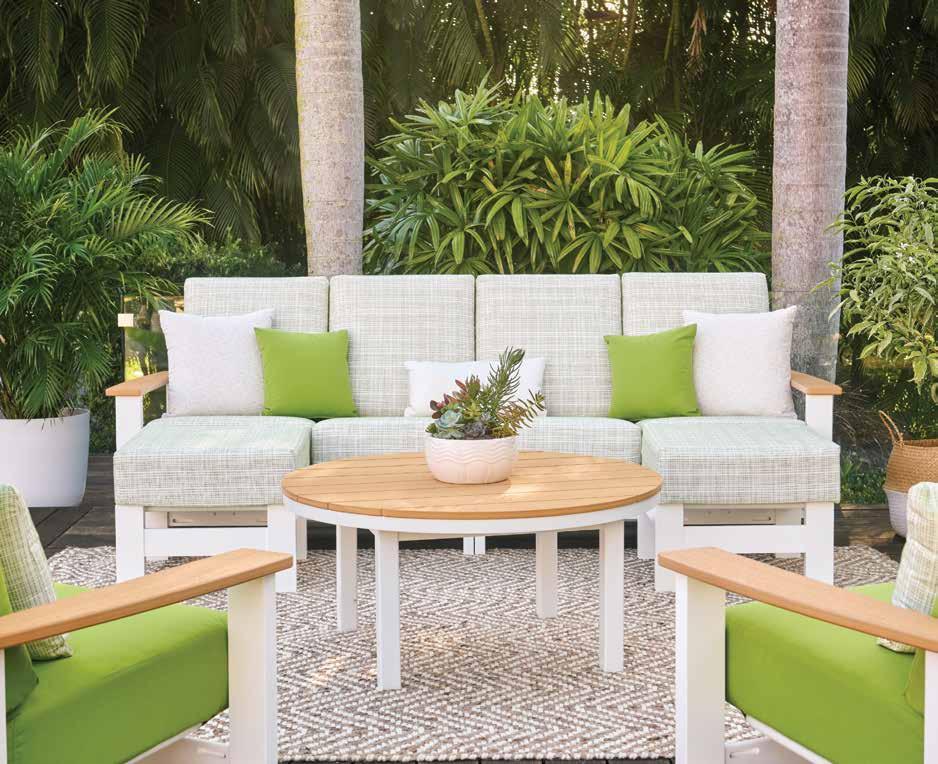
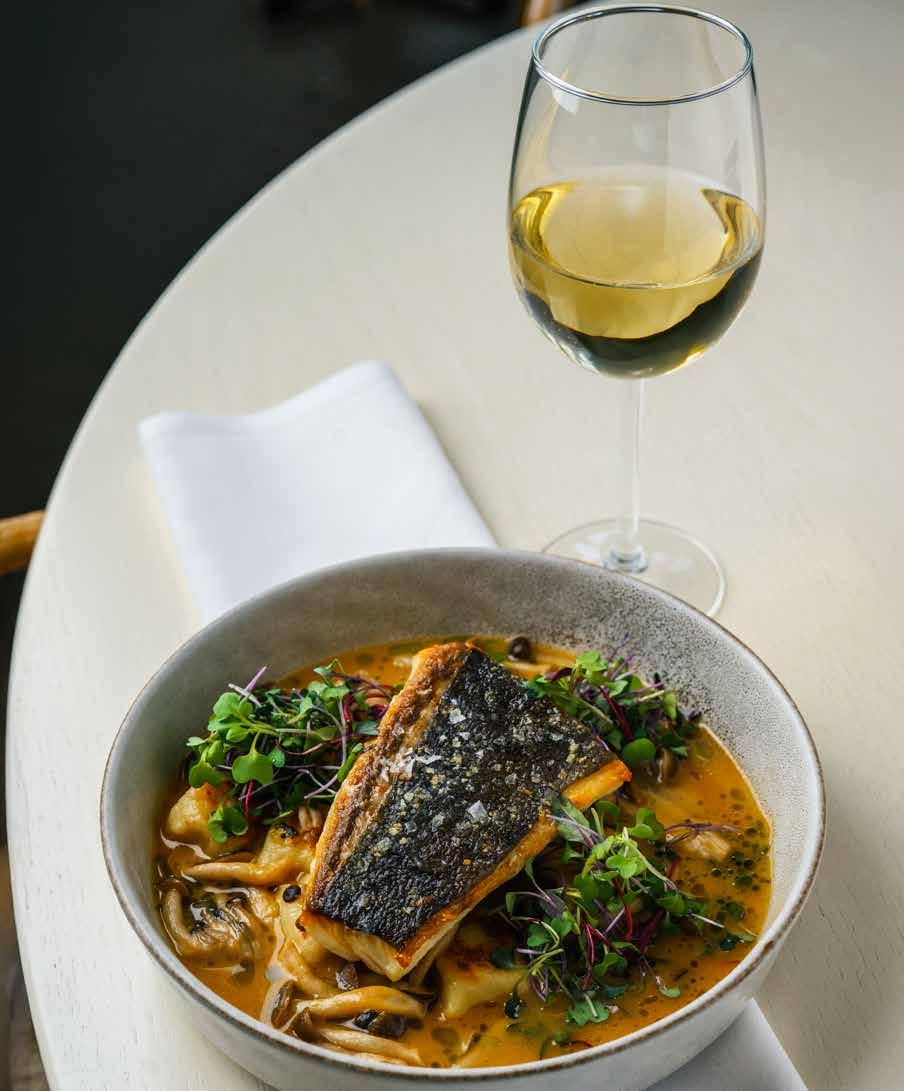
Hook & Plow celebrates local bounty, from coast to ranch
WRITTEN BY CATHY
CARROLL
PHOTOGRAPHY BY TAMBI LANE
Lauren and Lisa Cassity grew up loving Bend since the ‘80s, coming here with their parents from Hawaii every summer and winter break. Their taste for Central Oregon was shaped by learning to snowboard at Mt. Bachelor, while their culinary sensibilities were formed in Oahu and Southern California before the twin sisters moved to Bend and opened Hook & Plow restaurant in 2023.
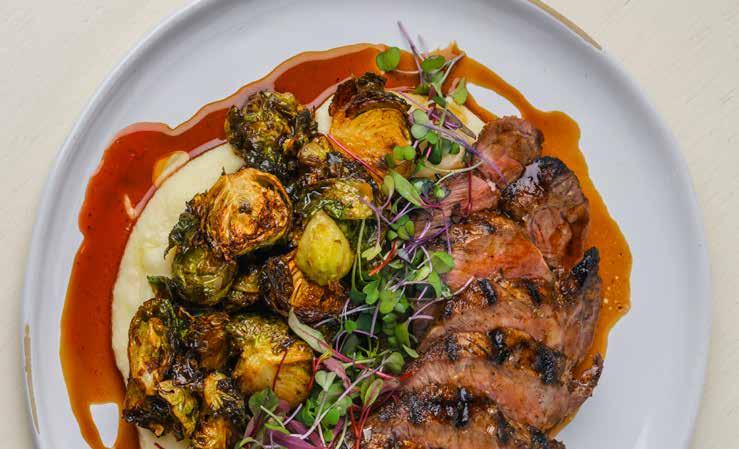
Growing up on Oahu, nightly dinner at home reflected local culture, from sashimi to Hawaiian barbecue, and rice at every meal. As teenagers, the sisters’ first jobs were in restaurants. “Hawaii is such a mixing pot of culture and diversity—[with] all sorts of different styles of food, like Japanese, Filipino, Hawaiian, obviously the fresh fish, all of these different cultures melding together in one location on an island,” said Lisa. “We started being really passionate about food and different cultures early on.”
They earned bachelor’s degrees: marketing for Lisa, finance for Lauren, and headed to the corporate world, but realized it wasn’t for them. They landed in Southern California, managing a little beach bar in the early 2000s, learning everything about running a restaurant. By 2014, they opened the first Hook & Plow in Hermosa Beach, just as the farm-to-table movement was in full bloom. Local restaurants hadn’t yet embraced that ethic, so they focused on it in their new endeavor, serving local seafood, organic farm fare and wine and beer crafted in the area. Two more Hook & Plows, in Manhattan Beach and Redondo Beach, followed.
The Cassitys had always dreamed of living full time in Bend though, and by 2022 they’d both moved to Central Oregon with their families and opened the fourth Hook & Plow. The “hook” part of the dining concept begins with briny, sweet Pacific Northwest oysters, glistening on the half shell with fennel mignonette and tomato ponzu alongside them. A nod to the Cassity’s roots, Hawaiian-style ahi poke is layered artfully with avocado, scallion and cucumber. House-made poke sauce brings a subtle zing; tortilla chips, a complementing crunch.
Entrees such as pan-roasted halibut with delicate bunashimeji mushrooms in dashi broth with house-made ricotta gnocchi, freeze-dried corn and microgreens change with the seasons. Diver scallops are seared and served with risotto al nero—arborio rice with black, buttery squid ink, Calabrian peppers and delicate, parsley-esque chervil.
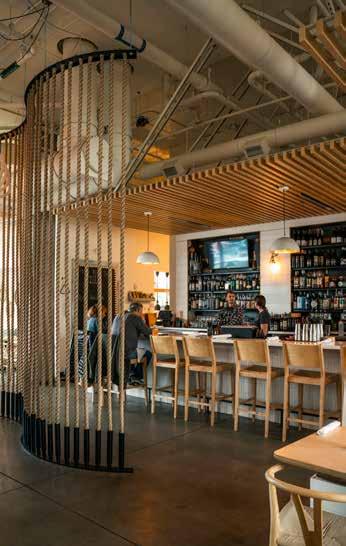

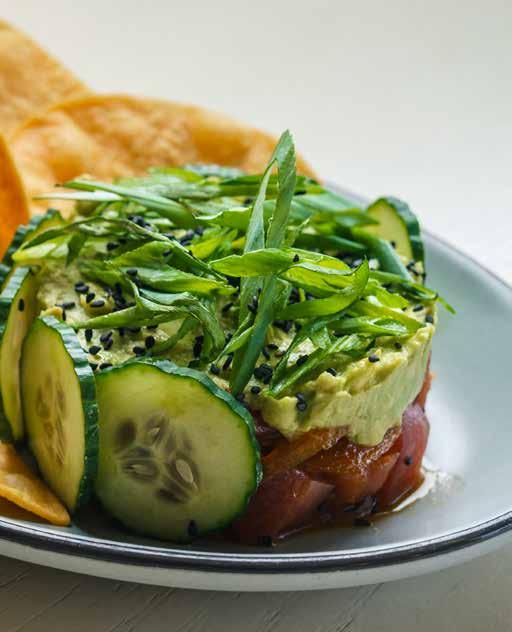
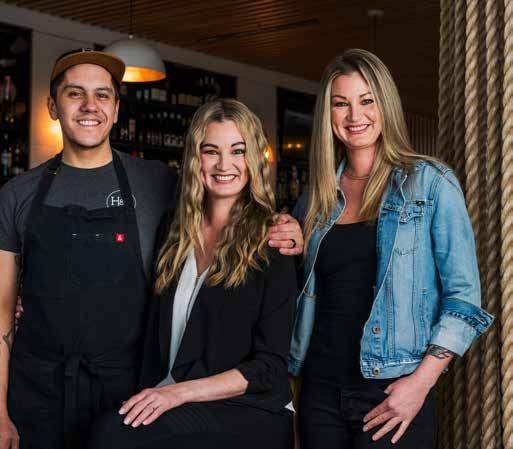
CLOCKWISE: Grass-fed beef with Brussels sprouts, Ahi Poke, Chef Ryan Ohmert (left) with Lisa Warren (middle) and Lauren Coplean (right).
From the “plow” comes dishes such as grassfed beef from an Oregon-based cooperative of ranchers. Slices of perfectly grilled steak top potato puree, beneath a rich peppercorn demi-glace and seasonal vegetables such as lemon-garlic Brussels sprouts. Burgers are heightened with sweet onion jam, rich gorgonzola and crunchy, fried shoestring onions, sandwiched between a toasted brioche bun. Executive Chef Ryan Ohmert brings a passion for making fresh pasta and a style aimed at letting great ingredients shine. “I’d much rather us do ‘simple-done-well’ than overcomplicate something, making [the menu] unapproachable,” he said. Creative cocktails follow suit, such as the brown butter old fashioned, which blends bourbon with butter, browned to a smooth nuttiness, and walnut bitters for a cool drink with warm, round flavors. Chilly high desert nights call for a pear hot toddy with Oregon pear-infused vodka, brandy, cinnamon, honey and lemon.
It all happens in an ambiance that Lauren designed using details such as a drape of nautical ropes, blonde wood and round mirrors that suggest portholes. The effect is cozy and beachy, matched with a culinary journey reflecting the Cassitys’ past and present, which the community is pleased to embark on, too.
The Hook & Plow Bend
210 SW Century Drive, Suite 150, Bend thehookandplow.com
What’
Lauren and Lisa Cassity didn’t stop with Hook & Plow on Century Drive. They launched Cassity’s Bar and Grill in fall of 2024 to serve libations and pub fare. Find multiple styles of wings (Buffalo/BBQ/garlic parm/Nashville hot/Korean umami), fish tacos, burgers and hot dogs to nosh on, plus a spacious patio with a firepit. The sisters’ reach extends to The Village at Sunriver where they opened The Fold Craft Pizza + Kitchen in 2020.

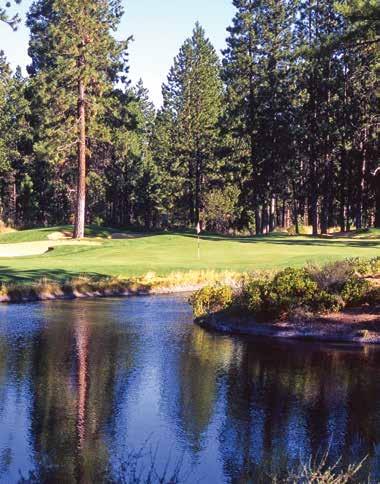
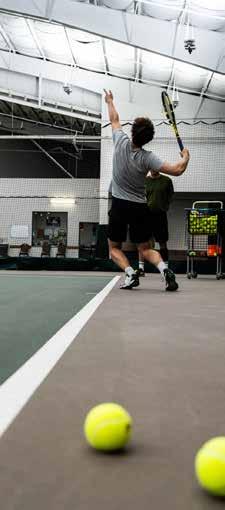

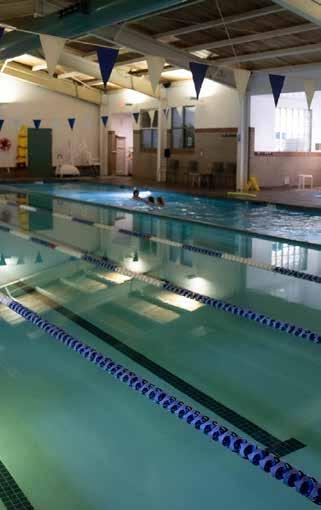
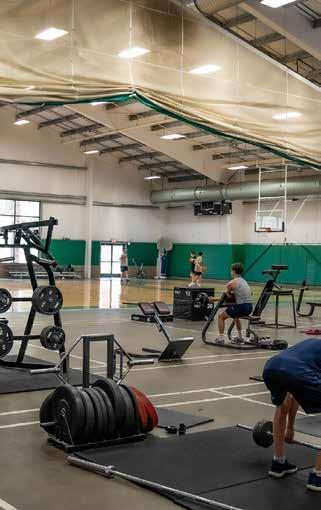
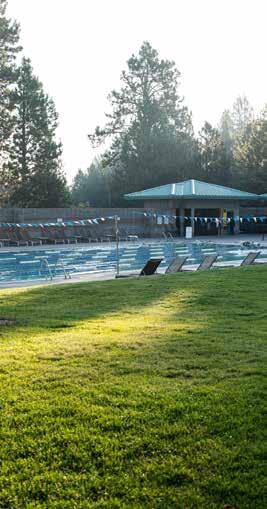

WRITTEN BY MAISIE SMITH
PHOTOGRAPHY BY TINA PAYMASTER
Some cocktails arrive quietly. Others command attention. At JIĀ Asian Street Kitchen, drinks don’t just get poured—they ignite, smolder and swirl in a spectacle of fire and smoke that turns heads and silences tables. It’s mixology as theater, drawing inspiration from the bustling street markets of Asia, where heat, aroma and movement pull people in. Behind it all is Tou Meechukant, an adventurous mixologist who understands that great drinks aren’t just tasted; they’re remembered. “I want people to follow their senses, like you do at a night market,” he said. “You see the flames, smell the smoke and you’re immediately captivated.”
Fire and Smoke is part cocktail, part controlled burn. Oaxacan mezcal, Aperol, citrus and agave are shaken with jalapeño for a cocktail that’s smoky, spicy, sweet and tart all at once. But the real show starts tableside.
“I wanted even more depth,” Meechukant said. “So I found a way to infuse actual smoke into the drink.” He drops wood chips into a smoking device, hits them with a torch and traps the fragrant swirl under a wooden cap. A few beats later, the cover lifts and the smoke drifts into the drink, enhancing the mezcal’s rich edges. Each nuanced sip shifts between fire and fruit, depth and brightness, intensity and ease.
Tiki Torch plays faster and looser—equal parts riot and ritual. A towering, grinning tiki glass filled with Sailor Jerry rum, ginger beer, pomegranate, lemon and pineapple arrives at the table. Then, the flourish: a dusting of cinnamon powder, a kiss of fire from the blowtorch and a flash that catches the whole table off guard. The flame toasts the spice, sending curls of sweet smoke into the air, and suddenly, everyone wants one.
“We want to transport our guests into another world,” said owner Cynthia Linh. “From the vibrant colors and the giant moon [decor in the center of the restaurant] to the inventive cocktails, everything is an experience.” At JIĀ, drinks are crafted to captivate— fire reshapes flavor, smoke weaves itself into memory, and for a few perfect seconds, the whole room watches. See jiastreetkitchen.com
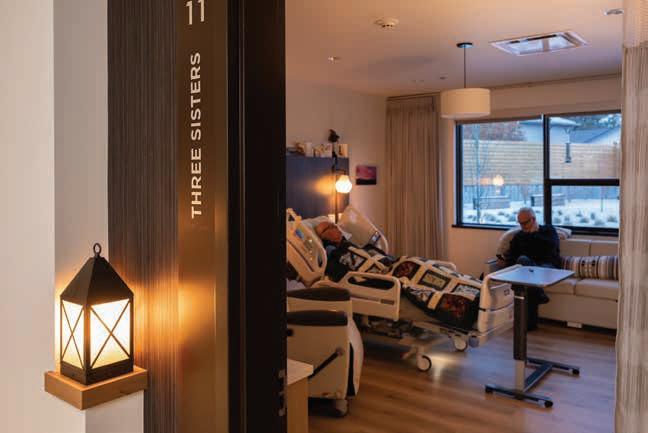
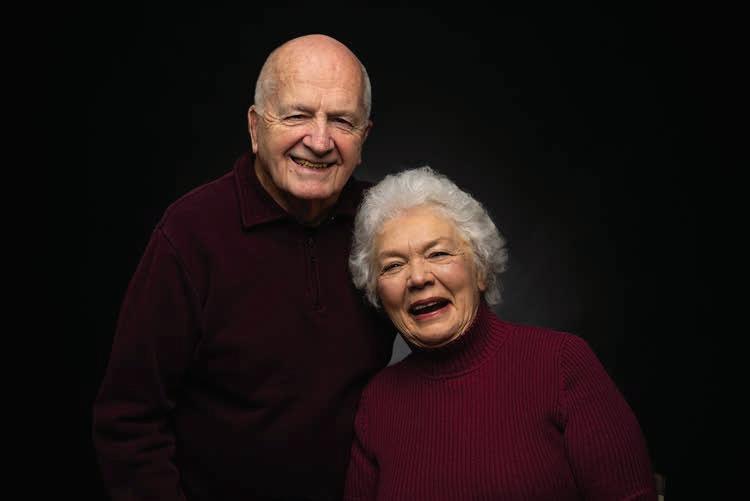
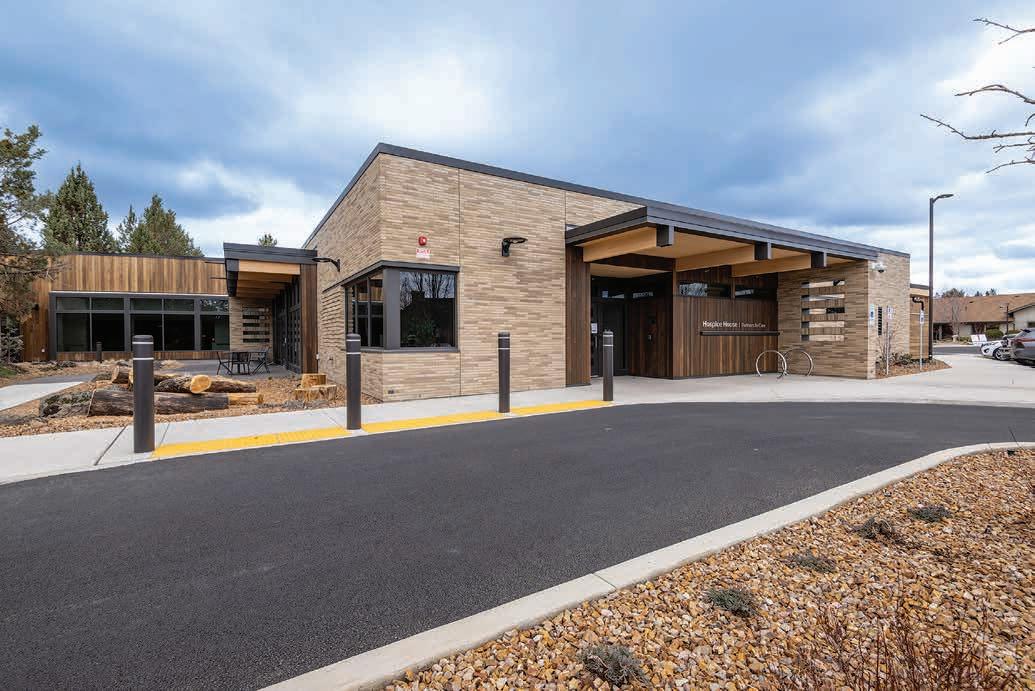
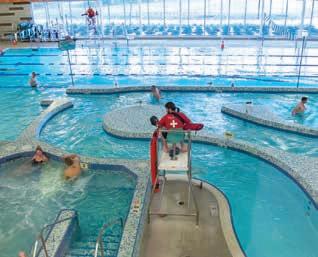
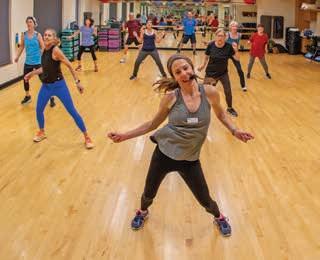
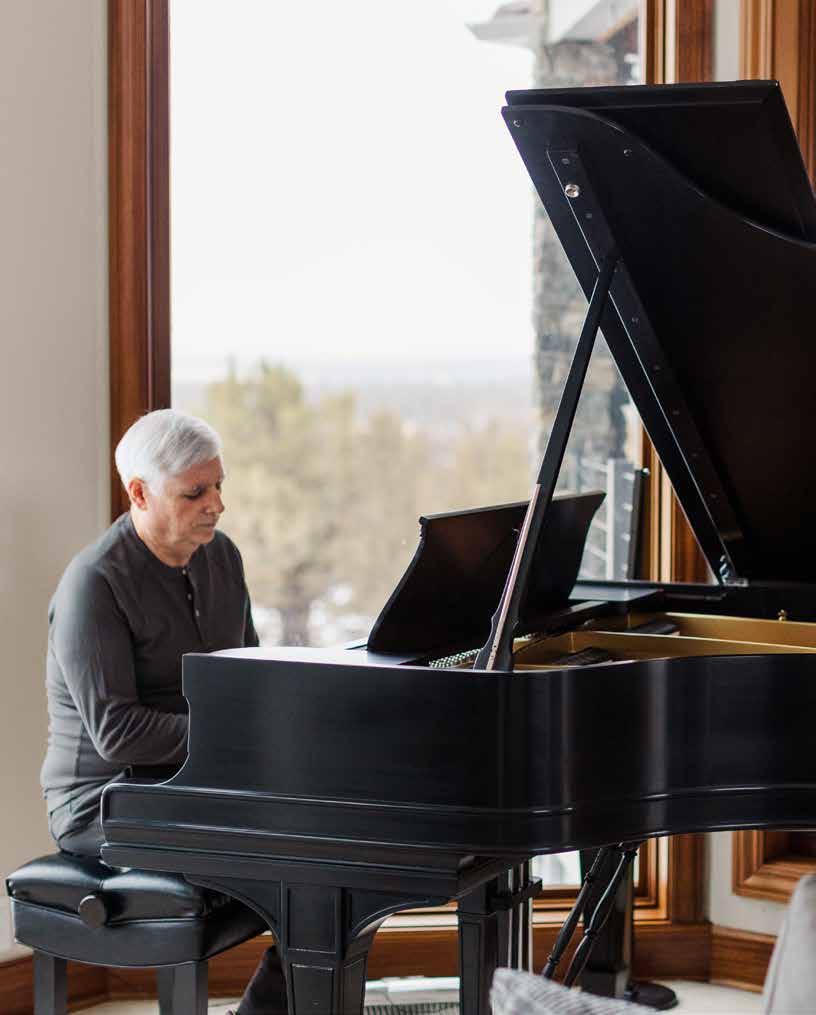
Disney film composer Dave Metzger keeps a Tumalo Tempo
WRITTEN BY CASEY HATFIELD-CHIOTTI
From his home outside Tumalo—with a panoramic view of snowcapped mountain peaks—composer Dave Metzger, arranger and orchestrator of multiple Grammy-winning projects, quietly writes music that connects viewers to a film.
“Sometimes I will play a scene where there’s no music at all for people and then play that scene with music and people’s jaws drop; they haven’t thought about how much of an impact the music has,” said Metzger. He has worked with Disney for 25 years, and his film credits include “Frozen,” “Moana,” and most recently 2024’s “Mufasa: The Lion King,” for which he composed all 100 minutes of the film’s score.
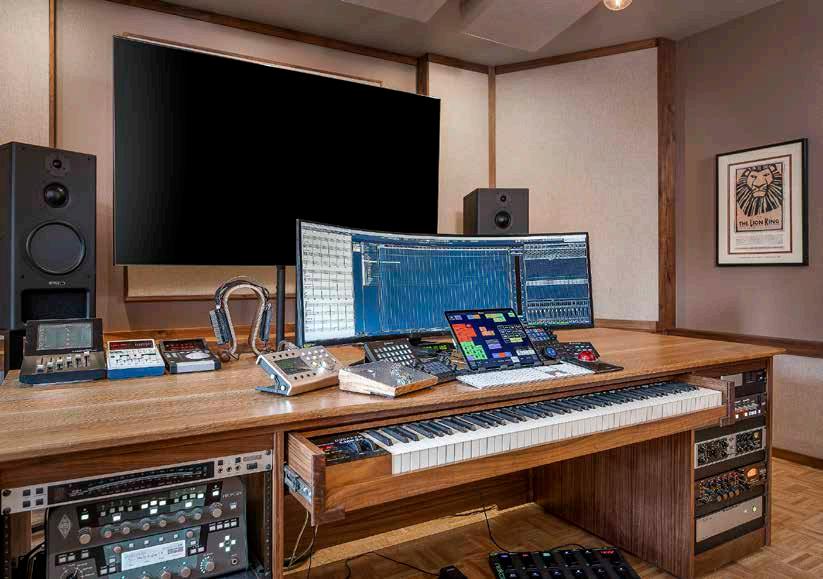
The score signals to viewers how to feel: happy, sad, concerned or hopeful. It swells or ebbs during the most impactful moments of a movie and is a big reason why those scenes stick with cinema-goers long after they’ve left the theater.
Originally from Corvallis, Metzger began writing music when he took a choir class at the age of 12. After he saw the first “Star Wars” movie at 16, he dreamed of becoming a film composer. He took music theory classes in college and eventually moved to Los Angeles. However, when he moved back to Oregon with his family in the mid-90s, his career started to thrive.
“Southern California never felt like home to me,” said Metzger. “As soon as we moved back to Oregon, I just felt so much more creative again.”
After living in Salem for many years, Metzger and his wife, a retired physician, moved to Bend full time in 2021. The region’s mountain views and hikes continue to be constant sources of inspiration. His home studio is a world-class facility, designed by renowned audio and acoustical engineer George Augspurger. The sound diffuser—panels of wood cut at different dimensions and depths—looks like a work of art, but it has the essential purpose of breaking up sound.
In the studio, Metzger is surrounded by instruments, including a 1965 vintage Fender bass guitar he has had since he was 17 years

IT WAS LIKE A DREAM FULFILLED, YOU KNOW, AND THIS MOVIE ‘MUFASA’ WAS ICING ON THE CAKE.”
old and an octave mandolin he used for composing the score for Disney’s “Wish,”—Metzger’s first lead composer credit. To begin the creative process, Metzger receives “prints,” or 10-minute clips, from the films he’s working on. He watches the scenes several times to get a feel for the tempo. Then Metzger writes a piano guide track in a sequencing program called Cubase that helps him decipher key themes. Like a puzzle, he decides where to place the themes and fill in the rest. When the director has approved of the segment, Metzger travels to Los Angeles or London to record the music with musicians.
“Musicians are expensive, so they sight-read everything. There’s no rehearsal or anything. It’s wild,” said Metzger.
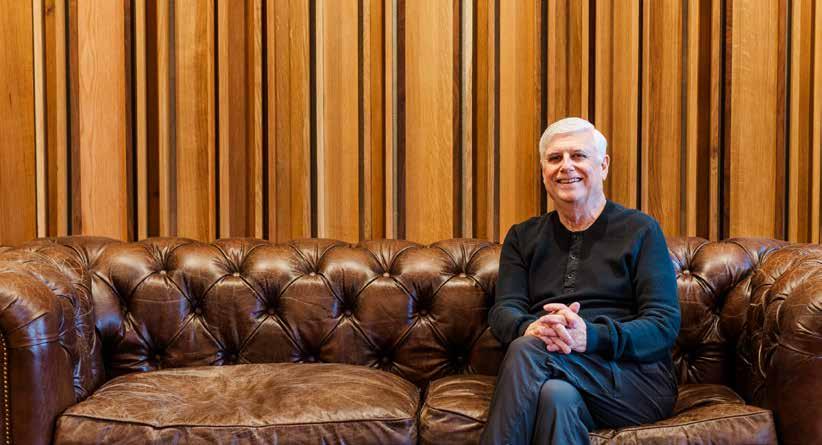
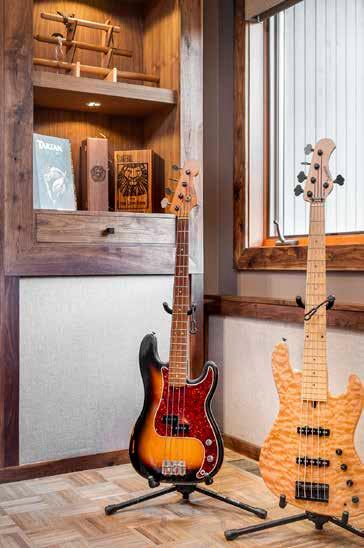
FROM “THE LION KING” ON BROADWAY TO “MUFASA” Metzger’s path to “Mufasa” began decades ago. His first “big break,” as he calls it, was the opportunity to write music for the 1997 action film “Speed 2: Cruise Control.” That’s where he met Mark Mancina, music producer for the Broadway version of “The Lion King.” Metzger orchestrated the musical, making sure the music was adapted for a live theater setting.
When the President of Disney Music, Tom MacDougall, was looking for a composer for “Mufasa,” he knew Metzger would understand how to tie in original themes and create something new. In addition to using some of Hans Zimmer’s music from “The Lion King” movie and writing new material, Metzger helped save the villain track “Bye, Bye,” from the cutting room floor. In one night, Metzger, also a song arranger, used elements from his score, such as the clack of sticks on the rim of a taiko drum and menacing violins to integrate the song into the film more and recall the character Scar’s “Be Prepared.”
Metzger has also arranged some of the most well-known songs in the Disney universe, such as “Let it Go” from “Frozen.”
“I’m proud that on films like ‘Moana’ and ‘Frozen,’ I had an impact on how the songs turned out. The piano part is all there is when I do the song arranging, so everything else you hear is what I bring to it,” he said.
Despite working with people such as Lin ManuelMiranda—who Metzger says is just as charismatic and kind as he appears—much of his work for years was as an additional composer or ghostwriter. In those roles, he wasn’t necessarily front and center, but that all changed when he got the call to be the composer for the 2023 movie, “Wish.”
“It was like a dream fulfilled, you know, and this movie ‘Mufasa’ was icing on the cake,” he said.
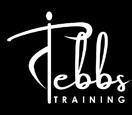
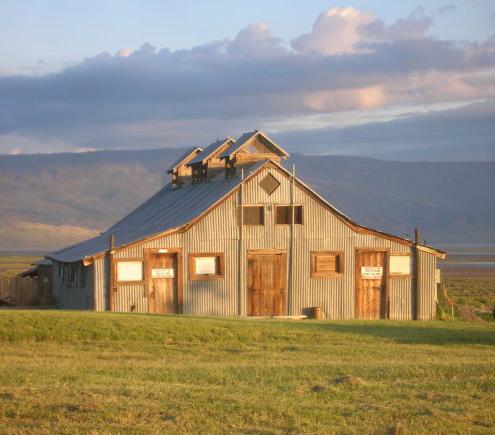
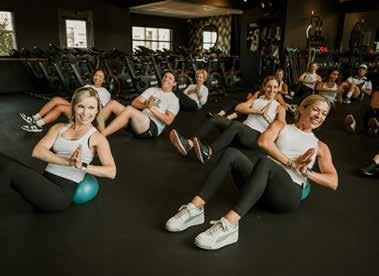


Abstract art by Paige Barnes starts with nature
WRITTEN BY SIENA DORMAN
Inside her cottage studio, Paige Barnes works with acrylic paint to create colorful canvases that harmonize structure with intuition.
Her backyard workshop is lined by windows that frame an open yard. Dense Central Oregon trees and neighboring rooftops allow Barnes to keep bearings on her surroundings. After more than 20 years in Bend, the OSU-Cascades
graduate and mother of three embraced life as a full-time artist just eight years ago. Since then, her pieces—donated, commissioned and displayed throughout Bend—have brought abstract beauty to the community .
Barnes initially studied photography in college, but after taking a one-off painting class, she found it more fun—it satisfied something she craved creatively. “Painting was


gratifying and instant. I didn’t have to think so hard about manipulating a camera. My mind just moves quicker than photography requires,” Barnes said.
Inspiration is found everywhere for Barnes, but particularly in the landscapes surrounding her—the boulders along the Deschutes River Trail, the high desert terrain and the lush greenery she occasionally revisits in the Willamette Valley where she grew up. These elements inform her compositions, although they don’t appear literally on the canvas. Barnes’ paintings result from what she observes and become something cohesive but abstract, no longer directly a part of nature.
Music also plays a meaningful role in her creative process. Her recent taste for listening to classical melodies while painting has translated to more playful pieces.
Each day in the studio begins with what Barnes calls “mindless sketching,” a warm-up exercise where she draws
continuously for about 10 minutes to ground herself. From there, Barnes pivots to her easel, layering paint, pen lines and bold figures, with no preconceived direction of where she wants to take her painting. She typically works on two canvases at a time, allowing ideas and techniques to flow between them. One canvas may serve as the primary focus, while the other becomes an outlet for experiments—a space to clean brushes, test colors and try new techniques. Over time, even these experimental works take on a life of their own.
When frustration inevitably arises on her canvas, Barnes embraces it as a catalyst for transformation. She paints over tight or restrictive elements and leaves traces of earlier layers to build dimension and contrast. “I’m constantly finding the edge, going over it, then finding my way back,” Barnes said. “If I don’t push my work over the edge, then it’s never done.”
When Barnes finishes a piece, she feels deep, even if fleeting, satisfaction that
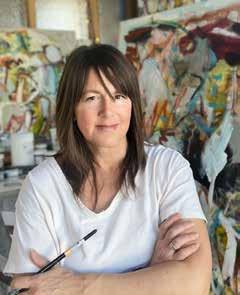
reminds her, “This is why I’m here.” And then she starts all over again.
Barnes’ collaboration with Inspire Bend, the nonprofit branch of retailer furnish., has brought beauty and comfort to community spaces. One of her contributed works, created for the Bear Creek Elementary School teachers’ lounge, moved one teacher to tears with gratitude. Barnes continues to look forward to the future, when she hopes to work on large, unstretched canvases spanning more than 6 feet in size. For now, she is focusing on consistency in her painting practice, with a goal of three two-hour painting sessions each day.
“I’m not worried about how far I go or how big of a name I have,” Barnes said. “I just want to keep going. I want to be one of those artists still making art at 95.” See paigebarnesart.com and @paigebarnesart
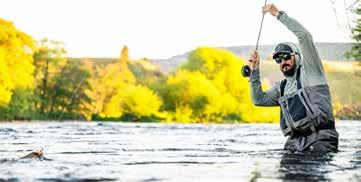
The Hard Way, an adventure film by Bend-based Off the Grid Studios, premieres at the Tower Theatre on March 8 as part of the 2025 Fly Fishing Film Tour. Directed by award-winning filmmaker RA Beattie and with cinematography by Arian Stevens, the film follows the life of fly-fishing guide Matt Mendes. A member of the Confederated Tribes of Warm Springs, Mendes demonstrates Indigenous tradition, resilience and his relationship with the Deschutes River. The premiere is the first screening on the film’s tour of 15 countries. See flyfilmtour.com.
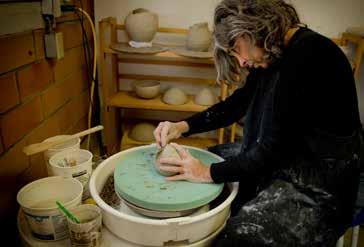
Sisters’ Pine Meadow Ranch Center for Arts and Agriculture welcomes 36 artists, writers and culture bearers from across the United States for its 2025 residency program, running from March through November. This year’s theme, “Care & Stewardship,” explores the interconnected existence between nature and community. “At the heart of the 2025 program is the idea that care and stewardship transcend human boundaries,” said Ana Varas, the arts program manager. Residents share their work at community events, including Open Studio days, held on March 20; May 8, 29; and July 2, 16, 30. See roundhousefoundation.org.
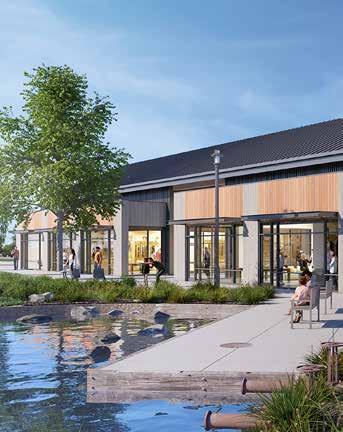
A new sculpture soars above the pond in Bend’s Old Mill District, paying tribute to visionary developer, Bill Smith. Titled “Bountiful,” the 13-foot-wide steel osprey clutches two fish and celebrates the abundance of the Deschutes River. Further, plans were announced for new development adjacent to the pond. Three new buildings for restaurants, retail and housing will be contemporary in style but give nods to the mill history by incorporating bricks and concrete from the past. A groundbreaking is planned later in 2025.
See oldmilldistrict.com.
The High Desert Museum received two National Endowment for the Humanities grants, totaling $240,337, to expand storytelling and digital access at the museum and deepen connections to the region’s cultural and environmental heritage. The first project will document Central Oregon voices—from ranchers to tribal members— with a goal of preserving preserve regional histories. The second will develop an interactive web experience to explore the high desert’s people, wildlife and landscapes. “These projects go a very long way in making our work more accessible to the community,” said Executive Director Dana Whitelaw. See highdesertmuseum.org.

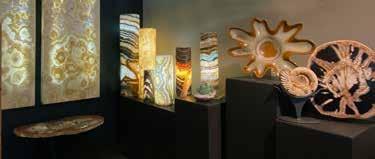

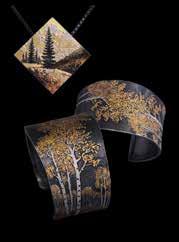
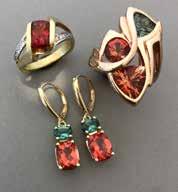

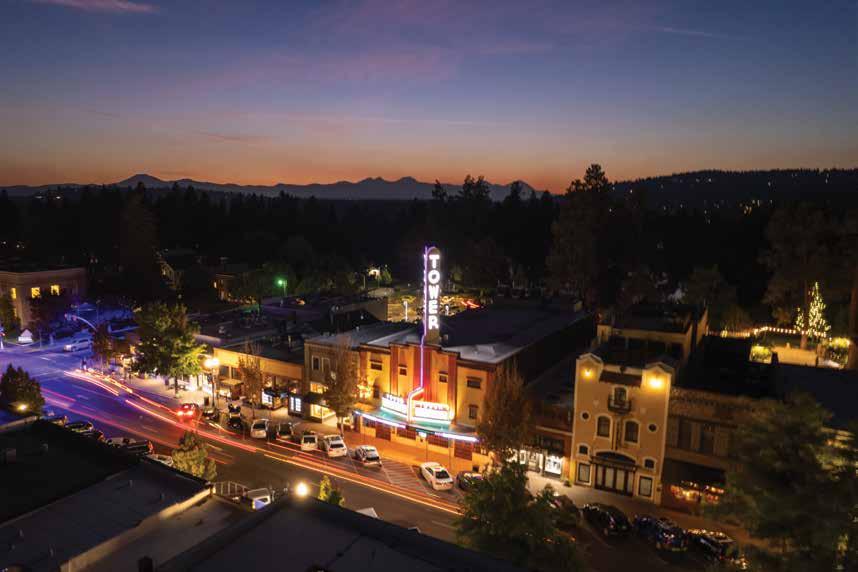


THE SUMMIT IS WHAT DRIVES US, BUT THE CLIMB ITSELF IS WHAT MATTERS.”
—
CONRAD ANKER, MOUNTAINEER AND AUTHOR
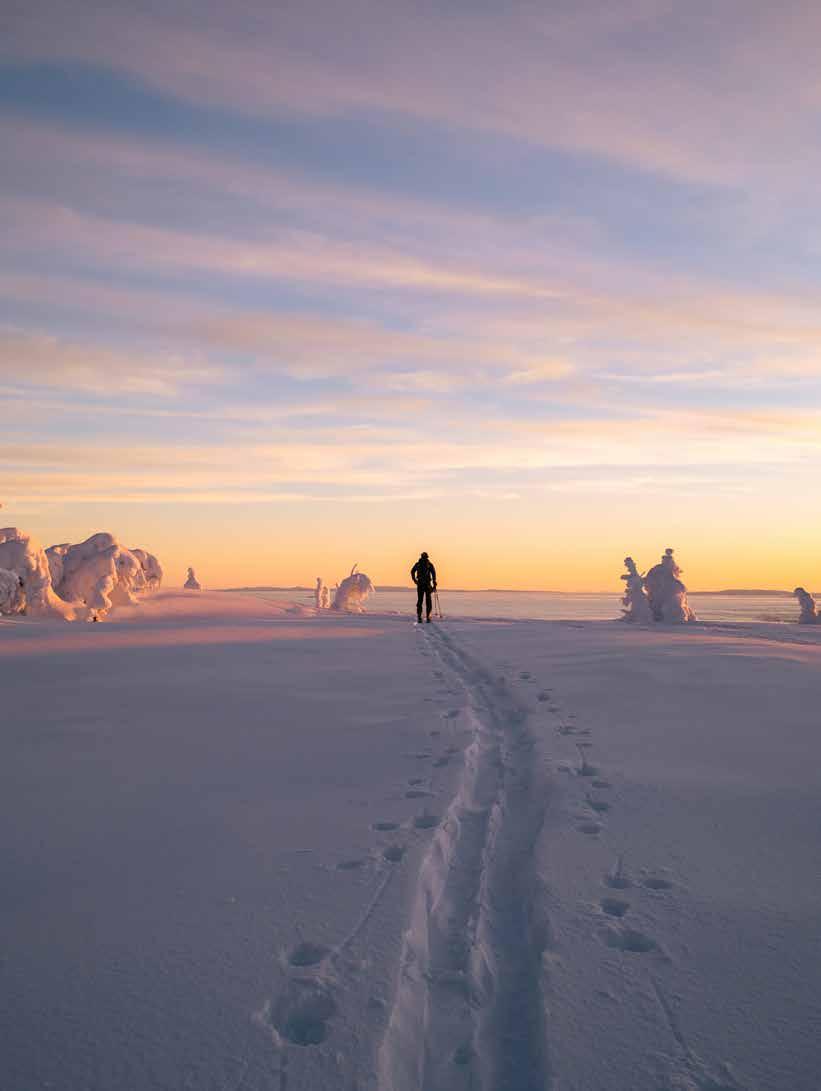
BY

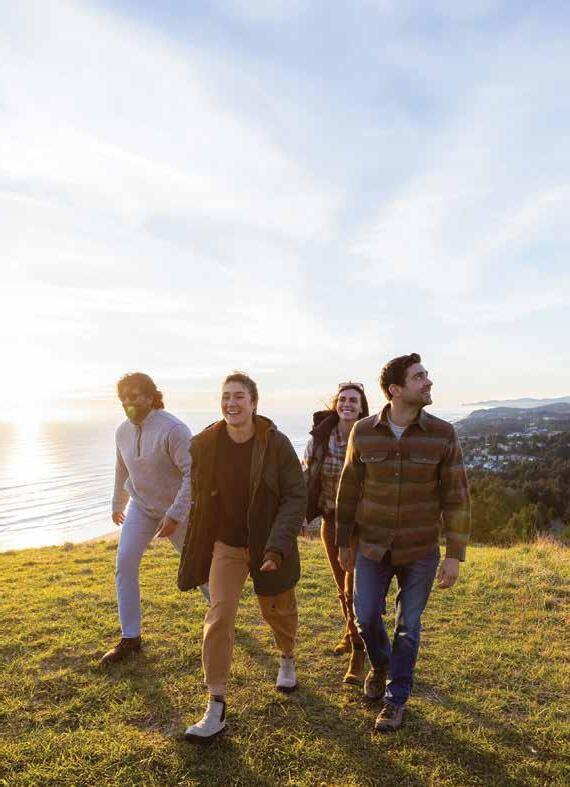
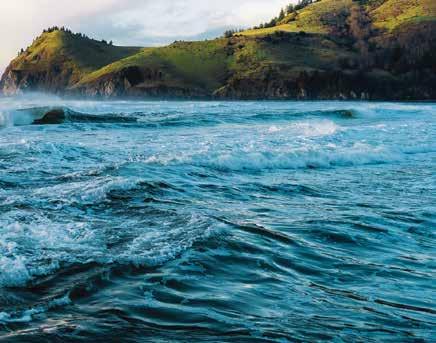

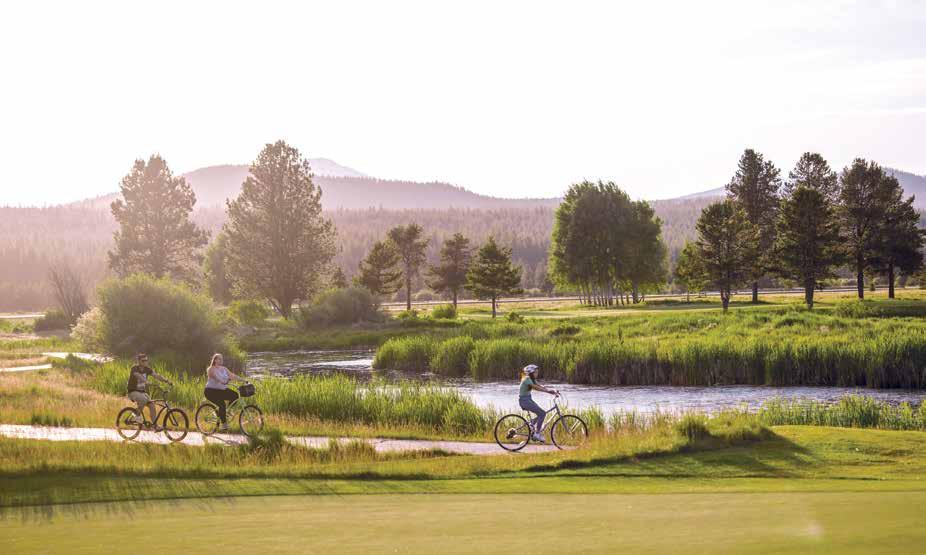
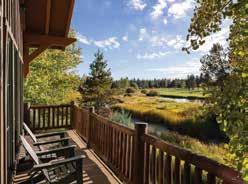
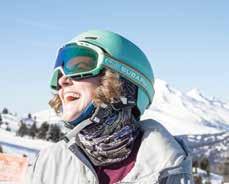
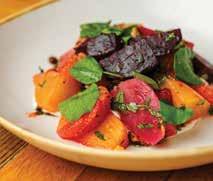

At Sunriver Resort, spring is the season of possibilities. Only here can you ski Mt. Bachelor in the morning, golf in the afternoon, soak in the pool at sunset, unwind at The Spa before dinner, and indulge at one of our four signature restaurants—all in one day. It’s all possible, just around the Bend.
Book now for special Locals-Only offers at SunriverResort.com